

DECAVERSITY
10 business plan examples for students.

Are you thinking of starting a business? Let’s take a look at some business plan examples for students.
Starting a business as a student is exciting. But, like anyone else, students need support when venturing into entrepreneurship. One of the most important things to start with is learning how to create a strong business plan.
A business plan helps you set clear goals, strategies, and the necessary steps to succeed in the business world. However, not all business plans are the same. There are different types to consider, and choosing the right one depends on your specific business and goals.
In this guide, we'll walk you through the process of creating a solid business plan and introduce you to different plan types. So, let's get started and explore the world of entrepreneurship with a well-structured plan for success.
Writing the Business Plan
Crafting a business plan is a crucial move when you're starting or expanding your business, whether you’re working on a business plan project for students or a fully-fledged business person.
It helps you navigate your journey while also catching the attention of potential investors or lenders. In this guide, we'll break down every part of a business plan and share helpful tips.
What Goes in a Business Plan?
A good business plan typically has several important sections, each with its own job to do.
- Business Overview : Introduction and executive summary.
- Market Analysis : Understanding your target market and competition.
- Marketing and Sales : Strategies to reach and convert customers.
- Product/Service : Description of what you offer.
- Operations and Team : How your business operates and key team members.
- Financial Projection s: Future financial estimates and funding needs.
- Appendix : Supporting documents, if needed.
Now, let’s get into what these sections look like.
Develop a Business Plan Worksheet
Before you start writing your business plan, it's a good idea to start with a business plan worksheet. Think of it as the foundation for your plan—a tool to gather information and get your thoughts organized.
This worksheet will help you come up with your business vision, understand your target market better, and lay out your financial projections. It's the first step to building a solid plan that sets your business on the right track.
The Executive Summary
The executive summary is your business plan's attention-grabbing headline. It's a concise preview of your plan's most critical elements, designed to engage your reader. Here's what to include:
- Mission Statement : Clearly state your business's mission, describing the problem you solve and why your business exists. Define your core values and goals.
- Product/Service Description : Provide a brief, compelling description of your offering, emphasizing its unique features or benefits that set it apart.
- Leadership and Team : Introduce key team members and their qualifications, showcasing their expertise and their role in your business's success.
- Financial Information : Give an overview of your current financial status. Mention revenue and profits if your business is running. If you seek financing, explain how much you need and where you'll invest it.
- Growth Plans : Share your strategy for growth and long-term goals, outlining how you'll expand and achieve profitability.
The executive summary sets the stage for your business plan, making a strong first impression and sparking excitement for what follows.
The Products/Services
In this part, we'll dig deeper into the heart of your business—your products or services. We're going beyond the basics to look at three crucial aspects:
- Benefits to Customers : Discuss how your products or services help your customers. Explain how they solve specific problems or fulfill the needs of your target market. What makes them stand out? What's the unique value they bring compared to what competitors offer?
- Product Lifecycle : Every product or service has a journey. Tell us about the expected lifecycle of yours. Are you planning updates, new versions, or related offerings in the future? Knowing this helps us understand how your business will evolve.
- Intellectual Property : If it applies to your products or services, include any intellectual property rights you have. This might include copyrights, trademarks, or patents. These rights protect your creations and can be valuable assets.
Remember, this section is all about offering the essence of what you're offering and why it's special.
Target Market
Knowing your target market is a cornerstone of business success. Let's simplify:
Who Are Your Customers?
- Demographics : Basic info like age, gender, income, and location helps you target effectively.
What Makes Them Tick?
- Psychographics : Understand their interests, lifestyle, and buying habits to connect personally and tailor your marketing.
Market Trends
- Stay Updated : Keep an eye on industry trends and market shifts. Adapt to capitalize on opportunities.
Why does it matter? Think of it like knowing the weather—it helps you plan. Understanding your target market is your key to getting ahead.

The Marketing Strategy
Your marketing and sales strategies are crucial for attracting and retaining customers.
Marketing Mix
Here, we'll break down each element of your marketing mix—product, price, promotion, and place (distribution).
- Product : Describe your product offerings in detail. What are their unique features and benefits? Why would your target customers choose your products over others in the market? Be clear about what sets you apart.
- Price : Explain your pricing strategy. Will you compete on price, offering lower costs than competitors? Or will you position your products as premium and charge a higher price? Detail any discounts, bundles, or special offers you plan to implement.
- Promotion : Outline your promotional tactics. How will you create awareness and interest in your products? This can include advertising, public relations, content marketing, social media campaigns, and more. Specify your marketing budget and the platforms you'll utilize.
- Place (Distribution) : Describe your distribution strategy. How will your products reach your customers? Will you sell directly to consumers, through retailers, or online? Highlight your distribution channels and logistics. Explain how you'll ensure your products are readily available where your customers want them.
Sales Process
Now it’s time to discuss how you plan to turn potential leads into paying customers.
- Direct Sales : If your strategy involves direct sales, explain how your sales team will engage with potential customers. Provide insights into your sales force, their training, and how they will approach prospects.
- Online Sales : If online sales are a significant part of your strategy, detail your e-commerce platform. Discuss the user experience, payment processing, security measures, and any online marketing tactics to drive traffic and conversions.
- Conversion Strategy : Highlight how you plan to convert leads into paying customers. Will you offer free trials, consultations, or samples? Describe your approach to closing deals and fostering customer loyalty.
By going beyond the surface and addressing these elements in detail, you'll have a marketing and sales strategy that can effectively attract and retain customers for your business.
Discuss Your Distribution Strategy
Your distribution strategy is how you get your products or services to your customers effectively:
- Distribution Channels : These are the paths your products or services take, like physical stores or online platforms.
- Logistics and Transportation : This is how your products move, whether you do it yourself or use other companies.
- Inventory Management : It's about keeping the right amount of stock without having too much or too little.
- Geographic Reach : It's where your customers are, whether nearby, across the country, or worldwide.
- Efficiency and Costs : It's about being fast and not spending too much money.
- Customer Convenience : It means making it easy for customers to buy from you.
- Technology and Automation : Using tools and systems to make things work smoother.
- Scaling and Adaptation : It's about being ready for more customers or changes in the market.
Having a good distribution strategy helps make sure your products or services reach the right customers the right way.
The Competition
It's essential to have a solid grasp of your competitors and strategically position your business to thrive.
Competitive Analysis
To stay ahead of the game, make sure to conduct a thorough competitive analysis. This means rolling up your sleeves and diving deep into the strategies and operations of your rivals.
- In-Depth Examination : Start by examining your competitors meticulously. Look into their products or services, pricing strategies, marketing tactics, and customer base. The goal is to gain a comprehensive understanding of what they do and how they do it.
- Strengths and Weaknesses : Highlight your competitors' strengths and weaknesses. What are they exceptionally good at, and where do they fall short? Identifying these aspects will help them identify opportunities to capitalize on their weaknesses and leverage their strengths.
- Success Insights : Share your insights into what makes your competitors successful. Understand their unique selling propositions, customer engagement strategies, and market positioning. This knowledge will provide you with a foundation for your own strategies.
- Outperforming Plans : Once you've dissected your competitors, outline your plan to outperform them. Whether it's through innovation, superior customer service, or better pricing, make it clear how you intend to gain a competitive edge.
Competitive Advantage
Every business has something that sets it apart from the rest – these are your competitive advantages. In this section, it's time to highlight why customers should choose you over the competition.
- Expert Team : If you have experts on your team, let people know. Customers trust businesses with knowledgeable professionals who offer excellent products or services. If you're new, focus on any relevant experience to build trust as your business grows.
- Unique Partnerships : If your business has forged unique partnerships or collaborations that give you an edge, make it known. These alliances can lead to exclusive offerings, cost advantages, or increased visibility in the market.
- Ideal Location : If your business benefits from an ideal location that attracts foot traffic or serves a specific target demographic, this can be a powerful competitive advantage. Explain how your location enhances your business prospects.
By underlining your competitive advantages, you're essentially telling your audience why you're not just another player in the market.

The operations section is your day-to-day business plan. It helps your team understand how to make your business run smoothly. Here are the key parts:
- Objectives and Goals : State what you want to achieve, both short and long-term. Ensure they align with your overall plan.
- Procedures and Processes : Explain how things will get done, from making your product to customer service.
- Timeline and Milestones : Set dates and goals to track your progress.
- Resource Needs : List what you need to run your business, like equipment and people.
- Supply Chain : Describe how you'll get what you need and manage it.
- Quality Control : Detail how you'll ensure quality, whether through checks or testing.
- Regulations : Mention any rules you need to follow, like permits or licenses.
- Risk Planning : Identify potential problems and your backup plans.
- Growth Strategy : Explain how you'll handle growth, like hiring more people or expanding to new markets.
- Costs : Break down your expenses, both fixed and variable, and how you'll manage them.
By laying out these details, you'll be well-prepared to handle the challenges and growth opportunities that come your way.
The Management Team
In this section of your business plan, you'll want to cover a few key areas:
1. Personal Background : Start by introducing the key people in your management team, if there are any. If it’s just you—don't worry! Give some basic details like names, ages, where they live, their interests, and their educational background. Also, mention any special skills they bring to the table.
2. Business Experience : Talk about their history in the business world. Have they been involved in other businesses? Have they held important positions before? Share their past achievements and roles in previous companies.
3. Track Record : Highlight their successes, the responsibilities they've handled, and their capabilities. Show how their previous experiences have prepared them for the roles they'll play in your business.
4. Education : Mention their formal and informal education, like degrees, certifications, or courses they've taken that are relevant to your business.
5. Financial Standing : Include personal financial statements and supporting documents to demonstrate their financial stability and ability to contribute to the business if necessary.
6. Work History : Detail their direct experience in similar businesses and how it aligns with your current venture.
7. Roles and Responsibilities : Clearly define who does what on the management team. Explain why they're the right fit for their roles and who makes the final decisions.
8. Organization Chart : Create a simple chart that shows how your team is structured and lists each person's responsibilities.
9. Compensation and Benefits : Outline the pay and bonuses each management member will receive. Also, mention any benefits like health insurance or life insurance.
10. External Resources : Tell about any outside resources you can tap into, like lawyers, accountants, or support from organizations that help small businesses.
11. Board of Directors : If you have a board, introduce them and explain how they'll help guide your business.
12. Online Resources : Mention any useful internet resources you'll use for research and networking.
Including these details paints a picture of your team's qualifications and their role in making your business a success.
In this part of your business plan, focus on who will be working with you.
- Current and Future Needs : Start by saying how many people you have on your team right now, if any. Then, talk about how many team members you think you'll need in the near future (like the next year or two) and in the longer term (three to five years from now).
- Skills Required : Describe what skills your team members should have. Think about what makes them good at their jobs and what special skills might be needed for your business.
- Job Descriptions : Explain what each person on your team will be responsible for. This will help everyone better understand their roles. Keep in mind that your roles might change as your business grows.
- Finding People : Discuss how you plan to find and hire the right people. As students, you might use your school's resources and online job platforms or work with other students who have the skills you need.
- Pay and Benefits : Clarify if you'll be paying salaries, hourly wages, or both. You can also mention any extra rewards or bonuses based on performance. Since you're a student, you may not offer extensive benefits initially.
- Extras like Overtime : Say if you'll pay extra for overtime work and when that might happen. Being students, you'll want to manage your workload efficiently, especially during busy times.
By covering these points, you'll show that you've considered your team's needs and are ready to manage your business's human resources effectively, even as students.

Financial Analysis
Think of this section as the pulse of your business plan. It gives you a detailed look at your business's financial health and sustainability. This part is crucial for students because it helps them make informed decisions and attracts potential investors or lenders.
Balance Sheet
Get a certified public accountant (CPA) to help you create a balance sheet. This document paints a picture of your business's financial situation at a specific moment. It has three main parts:
- Assets : What your business owns ( cash, equipment, or inventory).
- Liabilities : What your business owes (such as loans or outstanding bills).
- Owner's Equity : The owner's stake in the business, which is assets minus liabilities. It's basically your business's net worth.
Break-Even Analysis
This is significant because it tells you when your business will start making money. It determines the minimum amount of sales revenue needed to cover both fixed costs (like rent and salaries) and variable costs (like materials and utilities). It's based on info from the income statement and cash flow projections.
Income Statement (Profit and Loss Statement)
The income statement gives you the lowdown on your business's financial performance over a specific time frame, usually monthly or annually. It shows how much money you made and how much you spent. Subtract the expenses from the income, and you've got your profit or loss. It's all about how well your business handles its cash.
Cash Flow Statement
Cash is king in business, and this statement forecasts how money will move in and out of your company. It predicts all cash coming in and going out, helping you ensure you have enough to cover day-to-day costs and investments and pay off any debts. A strong cash flow is crucial to keeping your business going.
As student entrepreneurs, having a CPA set up your accounting system is a smart move for accuracy. When you present these financial documents in your business plan, make sure they're clear and detailed.
These numbers prove the worth and profitability of your business idea, which can be a big draw for potential investors or lenders. So, be thorough and get the figures right.
Supporting Documentation
You'll also want to include various documents that back up the information you've presented in the main part of your plan. Keep in mind that this list might change depending on how far along your business is. Here's what to include:
- Resumes : Put in resumes of the people who are key to your business. Show off their qualifications and experience to give confidence to potential investors or lenders.
- Credit Information (appendix) : If relevant, add credit reports for yourself or your team members. This will prove that you're financially responsible.
- Quotes or Estimates : Include any quotes or cost estimates you've received from suppliers or service providers. This helps prove that you've done your homework on expenses.
- Letters of Intent from Prospective Customers : If you have letters from potential customers saying they want to use your products or services, toss those in. It shows there's a demand.
- Letters of Support from Credible References : If you have supportive letters from mentors, professors, or industry experts, add those. They can vouch for your idea.
- Leases or Buy/Sell Agreements : If you're renting space or buying equipment, include the agreements. It proves you have the physical assets and responsibilities in place.
- Legal Documents Relevant to the Business : If there are any legal papers like incorporation documents, partnership agreements, or licenses, include them. It shows you're following the rules.
- Census/Demographic Data : If your business relies on specific data about people, include statistics or reports from trustworthy sources. This information will support your market analysis and target audience information.
Remember to keep these documents well-organized in the appendix. This list covers the basics, but tailor it to your specific student business plan's needs and stage of development.
Business Plan Program
Creating a strong business plan is essential for any entrepreneur, and with the help of business plan programs and tools, you can make it more effective.
- LivePlan : LivePlan is a user-friendly business planning software that guides users through creating business plans and offers financial forecasting.
- Bizplan : Bizplan focuses on startups and small businesses, providing step-by-step planning, financial tools, and pitch deck creation.
- Enloop : Enloop automates business plan writing using data inputs and offers financial projection tools.
- PlanGuru : PlanGuru is for in-depth financial analysis and creating detailed financial projections.
- Upmetrics : Upmetrics offers customizable templates, financial forecasting, and collaboration features for various business stages.
- Tarkenton GoSmallBiz : Tarkenton GoSmallBiz provides business planning tools, legal resources, and marketing guidance.
- Bplans : Bplans offers free business plan templates and samples for those starting from scratch.
- Canva : Canva provides pitch deck templates and design tools to enhance presentations.
- QuickBooks : QuickBooks aids in financial tracking and management, complementing business planning.

14 Types of Business Plans with Examples
In this section, we'll explore 10 types of business plan examples for student entrepreneurship.
1. Traditional Business Plans
These classic business plans , often prepared on paper, provide a comprehensive overview of the business, detailing its identity, goals, and strategies for success.
2. Standard Plans
Similar to traditional plans, standard business plans are created digitally, typically using software like Microsoft Word or Excel, making them easier to edit and share.
3. One-Page Business Plans
Incredibly concise, these plans condense all crucial information onto a single page, often using bullet points for clarity and brevity.
4. Annual Business Plans
Tailored for a specific year, these plans outline a business's objectives and actions for that particular period, providing a focused strategy.
5. Lean Plans
Lean business plans are streamlined versions, intentionally omitting some details to protect confidential information while offering a concise yet informative summary.
6. Business Plans for Start-ups
Specifically designed for new ventures, these plans may incorporate surveys, customer insights, and visual aids to support their customized approach.
7. Feasibility Studies
These plans investigate the viability of new product or service ideas, helping businesses make informed decisions about their implementation by analyzing their potential success.
Understanding these various types of business plans is essential for your business management studies, as they serve different purposes and contexts within the business world.
8. Strategic Plans
Concentrating on marketing and branding strategies, these plans often involve extensive market research and prioritize effective brand promotion.
9. Operational Plans
Emphasizing practical steps, operational plans use data, charts, and graphs to guide a business's actions toward its goals, with a strong focus on execution.
10. Internal Plans
Highly detailed and meant exclusively for the company's internal team, these plans contain sensitive information and strategic insights for team members' use.
11. What-If plan
This type of plan explores various scenarios and their potential impact on the business. It helps a company prepare for unexpected situations by outlining strategies for different outcomes.
12. Expansion plan
An expansion plan outlines strategies for growing a business, whether through opening new locations, entering new markets, or diversifying product lines. It details the steps and resources needed for expansion.
14. Business Acquisition Plan
When a company intends to acquire another business, this plan outlines the acquisition strategy, financial considerations, and integration plans. It helps ensure a smooth transition and maximizes the value of the acquisition.
These plans cover a range of scenarios and goals, each serving a unique purpose in the world of business strategy. Hopefully, you can choose a business plan template for high school students that suits your needs.
Final Thoughts
Starting and running a business as a student is a journey. A well-structured business plan is essential for success, helping you define your goals and strategies. To create one, feel free to use these business plan examples for students as a source of inspiration.
It’s your tool to guide your entrepreneurial journey and increase your chances of success. So, get started, create your plan, and get started on your path to entrepreneurship with confidence.


- Entrepreneurship
- Affiliate Marketing
- WordPress And Webdesign
- Sales Funnel
- Motivation And Affirmation
- Get in Touch
10 Business Plan Examples for Students (2024)
Written by Peter Keszegh
Starting a business isn’t just for the established entrepreneurs. If you’re a student with a great business idea, or if you’re just looking to earn extra money on the side, you can set up your own business with the right steps and preparation, too!
In this article, we’ll list some business plan examples for students and how you can turn your business ideas into reality.

What is a business plan?
In simple terms, a business plan is a detailed document that explains everything you need to know about your business idea . It includes your goals for your business and how exactly you plan to achieve them.
A business plan should be able to explain why your product or service is valuable, your target market for your business, and your future plans for the business.
Having a well-written business plan is important, especially if you’re looking at seeking external funding from investors. Even if you’re planning to use personal funds for your business, the business plan will help outline all your operational and management strategies.
Tailoring your plan to your business
While business plans have some standard sections used by all industries, it’s best to tailor your business plan depending on what your market is. For instance, if you’re planning to sell food products, you need to write sections on sourcing ingredients and quality control.
Think about what’s special about your business, and make sure to incorporate that in your business plan. Put yourselves in the shoes of an external investor – what would they want to know about your business? Don’t be afraid to think outside the box, too.

Parts of a business plan
You might be wondering – how should we structure a business plan? Here are some key sections you might want to include when writing your business plan:
Executive summary
An executive summary is exactly that – a summary of what your business is all about and your goals for the future. Make sure to include what your product or service plans to do, your target market, and key milestones you’d like to achieve. If you have plans to source external funding, mention this here, too.
Company description
You can use this section to expound on what you plan to achieve and what your business vision is . Use this section to highlight what makes your business unique , and why your product or service offers an innovative solution.
Market analysis
If you’re looking to start a business, you need to have a good understanding of the market and who your competitors are. Do the research to make sure there’s a real need for your product or service , and make sure you know what sets your business apart from competitors.
Organizational structure
If you’re working with a team and you all have different responsibilities, make sure to put that into writing. This doesn’t have to be too formal – all you have to do is make sure everyone’s tasks are clearly delineated so there’s no overstepping.
Product line or services offered
Talk about what you plan to sell or offer as a business. What exactly does your product or service do? What makes it so special, and what can your product or service do that isn’t already offered by your competitors?
Marketing and sales strategies
How do you plan to promote your business to attract customers and secure sales ? You can talk about where you plan to sell your products or offer your services, and how you plan to advertise your business.
Financial projections and funding requests
Set financial goals for your business and identify when your business will likely break even . If you need to secure external funding, make sure to mention this here, and mention how much money you’ll be needing and how you’ll be spending it.
Relevant documents that you mentioned earlier in your business plan should be included here. For instance, if you conducted market research via a survey, put your survey data here.
Of course, don’t be limited by the sections listed here. If there are other relevant details you’d like to talk about in your business plan, don’t be afraid to explore them. For instance, if you’re looking at using new technologies and tools for your product or service, you can write a relevant section in your business plan as well.

Why students need to master business plans
Businesses aren’t just for more seasoned entrepreneurs – starting a business can prove to be useful for students who want to hone their skills and become more business-minded.
Here’s how business plans can help students:
Enhancing strategic decision-making
You’ll have to make a lot of decisions when running a business, and business plans will force you to make smarter decisions. You don’t want to make things unnecessarily difficult for you and your team only to get mediocre results – you want to make sure you make the most out of your resources!
This kind of strategic decision-making isn’t something you learn in the classroom. Hands-on business experience will be useful for you to make wise decisions, even if it means learning from mistakes.
Improving market research and analysis skills
As students, you already do a lot of research for different school projects. When setting up a business, you’ll have to do research of your own to get a better understanding of the market your business plans to work in.
Having a good understanding of the market will also improve your analysis skills. For instance, doing enough research on the retail industry will give you a better idea of who the average retail customer is, allowing you to tweak your marketing and sales strategies to capture that target market.
Honing financial literacy and forecasting
Discussions about money and numbers can get pretty confusing. When you’re setting up a business and dealing with real, tangible figures, you’ll gain a better understanding of how finances work, how profitable your business might be, and what you’ll likely be spending money on.

Business plan examples for students
If you need a little help in thinking about the kind of business you want to set up, here are 10 business plan examples for students that you can use as inspiration:

Tu toring services
Some students will understand subjects better than others, which means there are a number of students who’ll need a little bit of help when it comes to their academic requirements and upcoming exams.
If you’re academically gifted and have a talent for teaching, you might want to consider offering tutoring services in your school.
- Executive summary : Mission, services offered, and target client demographic.
- Business description: Subjects covered, and technologies used (if applicable).
- Services provided: Individual tutoring, group workshops, and ongoing support options.
- Market analysis: Demographic trends, existing offerings, and unmet needs.
- Marketing strategy: Flyers, community center partnerships, and word-of-mouth referral programs .
- Operational plan: Scheduling system, session formats (in-person, online), and materials preparation.
- Management and organization: Tutor recruitment, training programs, and operational leadership.
- Financial summary: Basic costs, session pricing, financial goals, and sustainability plan.

Campus delivery service business
Especially during finals weeks, students can get pretty busy and can often forget to take care of themselves. How many all-nighters have you pulled as a student, and how many times have you skipped a meal to work on a deadline?
If this sounds like the kind of culture in your university, you might want to consider setting up a campus delivery service to cater to busy students. Here’s how you can set up your business plan:
- Executive summary: Service overview, mission, and objectives.
- Company description: Origins, campus focus, and service differentiation.
- Service offering: Types of delivery services offered (e.g., food, groceries).
- Market analysis: Campus demographics, needs assessment, and competitor analysis.
- Marketing strategy: Promotional tactics targeting students and staff, partnerships with local businesses.
- Operations plan: Delivery logistics, technology use (e.g., apps, GPS tracking), and hours of operation.
- Management and organization: Team roles, volunteer vs. paid staff, and management hierarchy.
- Financial plan: Start-up costs, pricing strategy, revenue projections, and break-even analysis.

Campus fitness and wellness programs
Another way you can help students in your school become healthier is to offer services that focus on fitness and wellness . If there’s a need for students in your school to become more physically active or to just take better care of their overall wellness, you could offer relevant programs on campus.
- Executive summary: Concept, target audience, and objectives of the fitness programs.
- Business description: Range of services (classes, personal training, wellness workshops).
- Market analysis: Campus health trends, competitor offerings, and student wellness needs.
- Services: Detailed look at program offerings, schedules, and customization options.
- Marketing plan: Engagement strategies, campus events, and partnership with student health services.
- Operational plan: Instructor qualifications, equipment needs, and location logistics.
- Management and organization: Structure of the team, roles, and experience in health and wellness.
- Financial overview: Initial setup costs, pricing strategy, revenue streams, and financial projections.

Student freelance platform
Freelancing is a popular way for students to earn extra income on the side, in the middle of their busy class schedules. If you have enough know-how when it comes to setting up websites or apps, you might want to consider launching a portal where student freelancers can conveniently find more freelance gigs.
- Executive summary: Platform purpose, target market, and value proposition.
- Business description: Niche focus (e.g., design, tutoring, programming), platform features.
- Market analysis: Demand for freelance work among students, analysis of existing platforms, gap identification.
- Service description: User interface, service categories, payment processing system.
- Marketing and sales strategy: Campus outreach, online presence, and user acquisition strategies.
- Technology plan: Website architecture, user security measures, and scalability.
- Operations plan: Customer support, dispute resolution process, and freelancer vetting process.
- Financial summary: Funding requirements, monetization strategy, and financial forecasts.

Mobile app for campus services and networking business
Maybe you’ve got an enormous campus that boasts a lot of helpful activities and services that most students might not already be aware of. If you want to promote these services in an innovative way, you could think about setting up a mobile app that students can use as a one-stop-shop for all their campus service needs.
- Executive summary: Introduction to the app, its core functionalities, and target user base.
- Business description: Insight into how the app facilitates campus life, services offered, and networking features.
- Market analysis: Current apps in the market, student needs analysis, and potential for growth.
- Product description: Detailed functionalities, user interface design, and privacy features.
- Marketing plan: Strategies for app launch, user acquisition, and partnerships with university departments.
- Technology plan: Development roadmap, platform compatibility, and maintenance plan.
- Management and operations: Team structure, developer roles, and operational milestones.
- Financial projections: Budget for app development, marketing costs, monetization strategies, and revenue forecasts.

Eco-friendly apparel brand
Everyone’s becoming more eco-conscious nowadays, and brands who often highlight their environmentally-friendly practices do get a good reputation. If you want to tap into that market and mix it with a bit of fashion design, you can choose to set up an eco-friendly apparel business.
- Executive summary: Brand mission, product range, and sustainability goals.
- Company background: Inspiration behind the brand, target demographic, and brand story.
- Products and services: Description of apparel line, materials used, and production process.
- Market analysis: Trends in sustainable fashion, target market behavior, and competitive landscape.
- Marketing strategy: Branding, social media campaigns, and collaborations with eco-conscious influencers.
- Operational plan: Supply chain management, ethical sourcing, and online versus physical sales approach.
- Management team: Roles, responsibilities, and background of team members.
- Financial plan: Initial investment, cost structure, sales forecast, and profitability analysis.

Sustainable campus living products
Maybe you’re not too keen on selling apparel, but you’d still like to tap into the market of students who prioritize sustainable brands and products.
If you also share the same passion for sustainability and have ideas on how to cater to students’ needs, you might want to consider selling sustainable products instead that dormers and other students will find useful for everyday life.
- Executive summary: Mission statement, product line overview, and sustainability goals.
- Company overview: Background on the inspiration for eco-friendly products targeted at students.
- Market analysis: Trends in sustainability, potential campus markets, and niche opportunities.
- Products offered: Description of eco-friendly living products (reusable containers, biodegradable goods).
- Marketing and sales strategy: Campus-based initiatives, eco-friendly partnerships, and social media.
- Operations: Sourcing of materials, product manufacturing, and logistics.
- Management team: Founder’s background, operational management, and advisory board.
- Financial projections: Cost analysis, sales forecast, funding requirements, and profitability timeline.

Student event planning service
A big part of student life is all about events and getting to meet new people. Not only is event planning a big thing for official student organizations, it’s also helpful for smaller communities who want to organize events to meet like-minded people.
If events are a popular thing in your school, you might benefit from setting up a student event planning service.
- Executive summary: Overview of services, unique selling points, and business goals.
- Company description: Types of events covered (e.g., academic, social, sporting).
- Service offering: Full event planning, day-of coordination, and consultation services.
- Market analysis: Campus event culture, demand for event planning services, competitor overview.
- Marketing plan: Outreach strategies, partnerships with campus organizations, and promotional materials.
- Operational strategy: Event logistics, vendor relationships, and event execution checklist.
- Management structure: Leadership team, volunteer opportunities, and staffing needs.
- Financial projections: Pricing model, expected expenses, revenue estimates, and growth potential.

Campus event photography service
Every big event needs good documentation to go with it. Even if your school isn’t big on events, you can choose to offer photography services to groups of friends who want cute little photoshoots in the most Instagrammable parts of your campus.
If you have a knack for photography, here’s how you can start offering photography services on campus:
- Executive summary: Concept and goals for providing photography services for campus events and personal photoshoots.
- Company description: Insights into the types of events covered (e.g., graduations, parties, portraits).
- Services offered: Packages available, including event coverage, individual portraits, and group sessions.
- Market analysis: Demand for photography services on campus, existing offerings, and unique selling points.
- Marketing strategy: Portfolio development, social media presence, partnerships with event organizers.
- Operational plan: Booking process, event execution, post-processing, and delivery of images.
- Management team: Background of the photographer(s), roles in business management, marketing, and customer service.
- Financial plan: Pricing strategy, cost of equipment and travel, revenue projections, and growth potential.

Student art gallery and workshop space
Maybe you’re from an art school, or your campus boasts a rich and talented artistic community. If your school’s artists are looking for a space to display their art, setting up a gallery and workshop space might be a profitable and sustainable business opportunity.
- Executive summary: Vision, goals, and unique aspects of the art gallery and workshop space.
- Company overview: Concept behind promoting student art, workshop themes, and community benefits.
- Market analysis: Interest in local art, campus cultural activities, and potential for art sales.
- Services and products: Exhibition schedules, workshop offerings, and art sales.
- Marketing strategy: Promotions through campus channels, local art scenes, and social media.
- Operations: Gallery setup, workshop logistics, and artist collaboration processes.
- Management team: Backgrounds in art management, curation, and education.
- Financials: Start-up expenses, pricing for art and workshops, expected revenue, and growth potential.

Common mistakes to avoid for student businesses
Setting up a business is no walk in the park, especially for young and inexperienced students. Here are some common mistakes that you can avoid when planning your own business, so you can steer clear of bigger problems down the road:
Lack of a well-defined business plan
It should go without saying that insufficient planning will make it difficult to get your business off the ground. Make sure you put down all important details in writing , and consult experts and get insights from successful small businesses if you need to.
Underestimating the importance of market research
You’ll need more than just a cool idea to start a business. There needs to be a real need or demand for your product or service, and if there’s another business already offering the same thing, you need to make sure your product or service is different or unique.
Familiarize yourself with the existing market and what the market gaps are. Once you identify what that market needs, you can tailor your business plans to try to fill in that gap.
Overlooking legal and financial regulations
Being a student doesn’t exempt you from following standard business regulations. Double check with experts and do extra research to make sure your business complies with all necessary regulations. For instance, you may need to officially register your business, or secure necessary permits.
Inadequate financial planning and management
Your business needs to be on financially stable ground for it to stay sustainable. Make sure you know if you’re in good financial standing to launch your business , and make sure you aren’t spending more than what you can actually afford.
Ignoring the importance of a strong team
It’s tempting to do everything yourself, especially if you lack funds or the ability to delegate tasks. However, you might benefit from having a team of members with various skills. A strong team will bring in more ideas to the table , and will be helpful in managing heavy workloads.
Overlooking customer feedback
You need to listen to what your customers are saying to adapt to their needs and wants. Are your products too expensive? Are people looking for different colors of your products? Engage with your customers so they can let you know how you can improve your business.
Neglecting online marketing
Social media is everything in today’s digital age! You’ll be able to reach a wider audience if you set up social media accounts on different platforms to advertise your services or products.

Future steps for student business owners
So you’ve made your business plan – congratulations! But where do you go from here?
If you want to know whether or not your business is taking off and what future opportunities you can secure, here are some ideas:
Evaluating business performance
Regularly review how well your business is performing by checking product sales, total profits, and how wide your customer base is. If you’ve been earning a good amount of money and are selling popular products or services, that’s a great sign!
Make sure to listen to customer feedback , too, as your customers might give you helpful insights that you might not immediately be aware of. You can do this via informal chats with your customers, or via more formal means like customer surveys.
Exploring growth strategies
Once you’ve evaluated how well your business is performing, you might want to consider growing your business if there’s a demand for a product or service you aren’t already offering, or if there’s an adjacent market you can tap into.
For instance, if you’re offering tutoring services for basic algebra classes, you might want to offer sessions for more complicated math subjects if your tutees need them. If you’ve set up an art space that can also be used as a venue for student events, you can consider expanding your offerings.
Scaling the business
Maybe your business has really taken off and has hit a point that you can no longer meet the customer demand with your tiny team. If that’s the case, you might want to consider scaling.
You can scale your business by adding more people to your team , or ramping up your production efforts.
Building a brand
Don’t be afraid to make a name for yourself! Explore how you can create a brand for your business. This is where you can let your creative juices flow – do you want to appear like a sophisticated and professional brand, or are you going for a more quirky approach?

Takeaways for business plan examples for students
The opportunities are endless if you want to set up a business as a student. Let your imagination run wild and look through business plan examples for students if you want to start selling or offering something new to your school’s community.
Don’t be intimidated by your lack of expertise or resources just yet – with the right mindset and enough determination, you’ll be able to set up your business for success and start your journey as a solid business owner!
20+ SAMPLE College Business Plan in PDF | MS Word
College business plan | ms word, 20+ sample college business plan, what is a college business plan, what are the benefits gained from a college business plan, how to create a college business plan, where do public universities get their funding, what are some of the main types of universities, what are vocational or technical colleges.
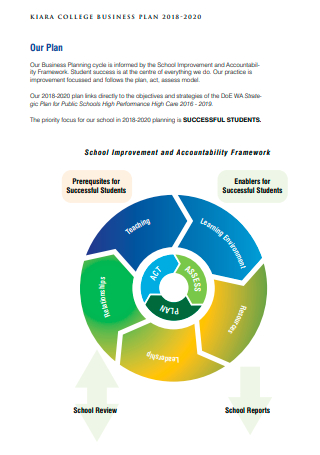
College Business Plan Template
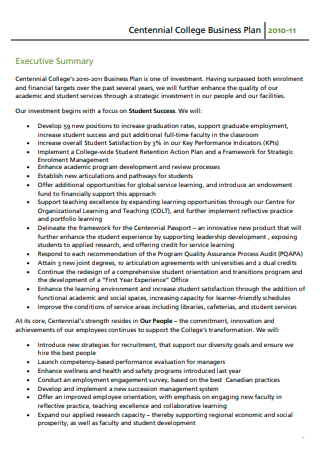
College Business Plan Example
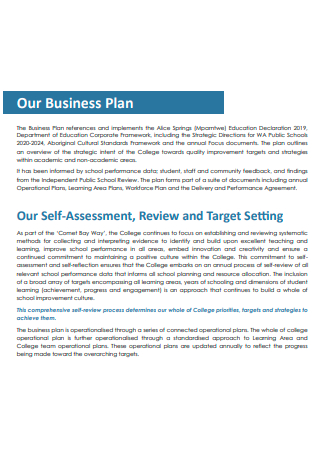
Basic Business Plan

College Business Plan in PDF
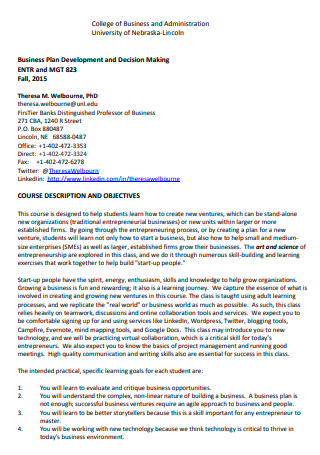
College of Business and Administration Plan

City College Business Plan
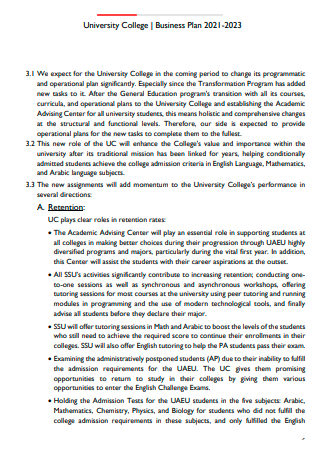
University College Business Plan
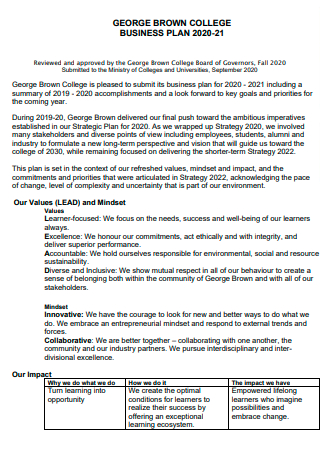
Standard College Business Plan

College Preparatory Schools Business Plan

Secondary College Business Plan
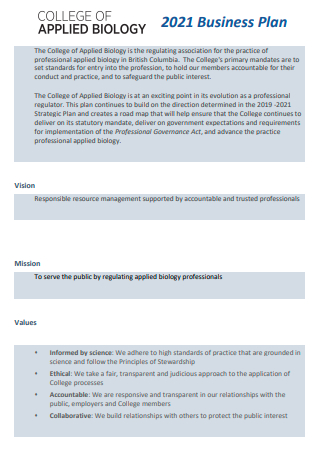
College of Applied Biology Business Plan
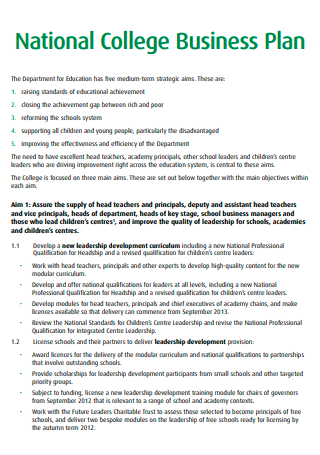
National College Business Plan
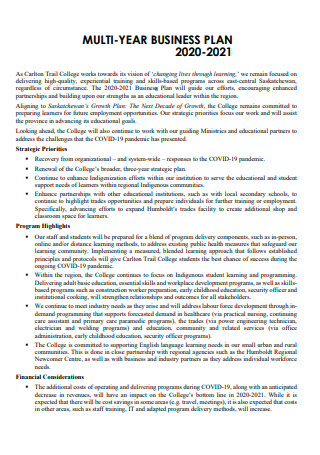
College Multi Year Business Plan

Printable College Business Plan
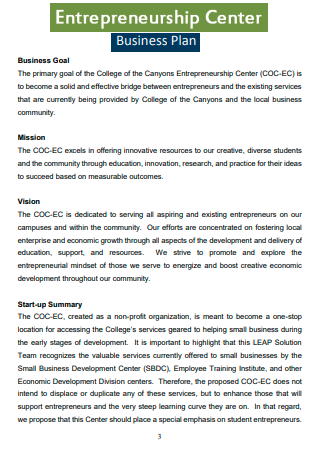
College of Entrepreneurship Center Business Plan
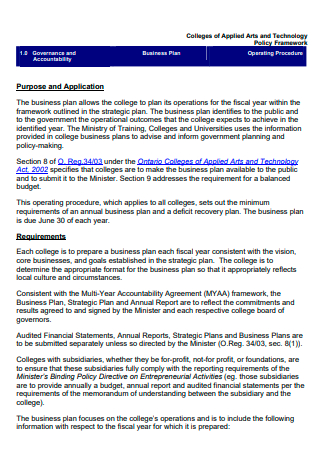
College of Applied Arts and Technology Business Plan
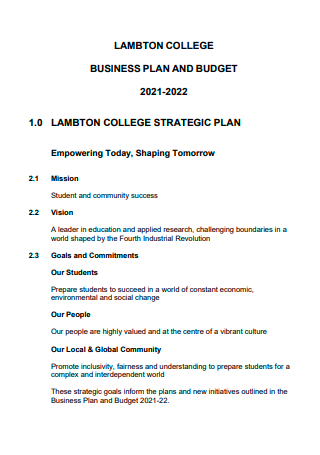
College Business Plan and Budget
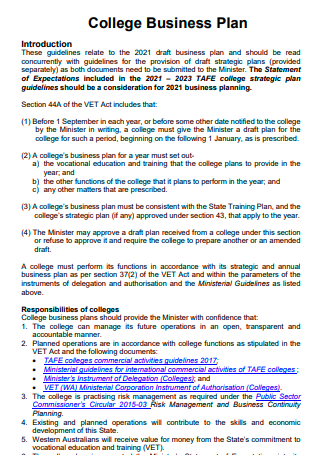
Draft College Business Plan

College of Medicine Business Plan
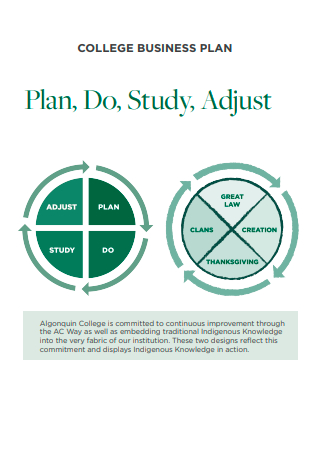
Sample College Business Plan

College Business Plan in DOC
1. executive summary, 2. college features and offerings, 3. marketing analysis, 4. marketing strategy, share this post on your network, you may also like these articles.

In this comprehensive guide, we explore the essentials of creating an effective Floor Plan. Whether you are designing a new home, renovating an existing space, or planning an office…
Nursing Care Plan

In this comprehensive guide, we explore the essentials of creating an effective Nursing Care Plan. Whether you are a nursing student, a new graduate, or an experienced nurse, this…
browse by categories
- Questionnaire
- Description
- Reconciliation
- Certificate
- Spreadsheet
Information
- privacy policy
- Terms & Conditions
Financial modeling spreadsheets and templates in Excel & Google Sheets
- Your cart is empty.

Business Plan Examples For Students Entrepreneurship To Inspire Your Journey

Venturing into the world of entrepreneurship as a student can be both exciting and challenging. One of the pivotal steps in turning a business idea into reality is creating a robust business plan. This foundational document helps in organizing the vision, setting clear objectives, and outlining the necessary steps to achieve entrepreneurial success. Whether you’re eyeing a new coffee shop or a cutting-edge tech start-up, a well-structured business plan is indispensable. This article delves into the critical components of a business plan and provides practical examples tailored for student entrepreneurs.
Understanding the intricacies of business planning can significantly elevate the chances of your venture’s success. Not only does a comprehensive business plan facilitate better decision-making, but it also helps in securing investments and managing resources effectively. For students, crafting this document might seem daunting, but with the right guidance, it becomes a manageable and enlightening process. By exploring various business plan examples for students entrepreneurship, you will learn how to construct a blueprint that resonates with your business goals and market needs. Let’s dive into the essential elements you need to include and see how to bring your entrepreneurial vision to life.
Business Plan Examples for Students Entrepreneurs: Key Components to Success
Creating a solid business plan is crucial for students venturing into entrepreneurship. A well-crafted business plan not only helps in outlining the business vision but also serves as a roadmap to guide the venture toward success. Here are some vital components to include in a business plan, along with illustrative examples to empower student entrepreneurs.
Understanding the Executive Summary
The executive summary encapsulates the entire business plan into a succinct overview. It should answer key questions: What is the business? What are its goals? Who are the target customers? For example, if a student wants to start a coffee shop targeting college students, the executive summary might outline how the shop will provide affordable, quality coffee in a cozy atmosphere conducive to studying.
Market Analysis: Know Your Audience
Conducting thorough market research is vital. This section should analyze the industry landscape, target market, competitors, and potential challenges. For instance, a student starting a clothing line should identify their target demographics (e.g., college-age students) and evaluate competitors like local boutiques and online shops. Including statistics, such as the percentage of students who regularly purchase new clothing, adds depth to the analysis.
Sample Market Analysis Points:
- Industry Overview
- Target Market Description
- Competitor Analysis
- Marketing Strategy
Defining the Business Model
Clearly defining how the business will operate is essential. This involves laying out the revenue streams, pricing strategies, and sales channels. If the student plans to launch a tutoring service, they need to specify whether they will charge per session, offer subscriptions, or partner with schools. Each option has distinct implications for revenue generation.
Marketing Strategy: Reaching Your Customers
A comprehensive marketing strategy outlines how a business will attract and retain customers. For students, this might mean using social media platforms to promote their products. For example, if presenting a startup focused on handmade jewelry, the marketing strategy could detail how platforms like Instagram and TikTok will be leveraged to share product images and testimonials, and how promotions will be structured to appeal to fellow students.
Key Elements of a Marketing Strategy:
- Brand Positioning
- Promotional Tactics
- Social Media Plans
- Partnership and Collaboration Ideas
Operations Plan: Day-to-Day Functionality
The operations plan covers the logistics of running the business. This includes the location, equipment, staff requirements, and any necessary licenses or permits. For example, a student opening a food truck needs to discuss the physical location of the food truck, any partnerships with local festivals for events, and the number of employees required to operate the truck successfully.
Financial Projections: Planning for Profit
Financial projections are critical in demonstrating the viability of the business. This section must include forecasts for income, expenses, and profitability. For a student looking to begin a tech service, projecting potential earnings based on market size and pricing strategy is essential. It’s beneficial to create a sales forecast that outlines expected revenue based on different scenarios, such as an average case where the service captures 10% of the market.
Essential Financial Projection Components:
- Start-Up Costs
- Projected Income Statement
- Cash Flow Statement
- Break-Even Analysis
Funding Requirements: Securing Investment
If the business will require external funding, detailing the funding requirements is necessary. Students should define how much capital is needed and outline where they expect to obtain it—whether through loans, investors, or personal savings. For instance, if launching an app, a student should clearly state how much investment they need to cover development and marketing expenses and what potential return they offer to investors.
Appendix: Supporting Documents
The appendix serves as a place for additional documents that support the business plan, such as resumes, reference letters, or detailed research findings. Including this information lends credibility to the plan and provides additional context for potential investors or mentors.
Learning to craft a compelling business plan can significantly benefit student entrepreneurs. By incorporating these core components, they can construct a roadmap for success and attract the necessary resources to bring their business ideas to fruition. Whether aspiring to manage a café, launch a tech startup, or create an online boutique, a carefully structured business plan is one of the first steps toward entrepreneurship.
The Importance of Market Research in Student Business Plans
In today’s competitive business landscape, aspiring entrepreneurs, particularly students, must grasp the significance of market research when crafting their business plans. Utilizing thorough market research not only enhances the quality of a student’s business plan but also establishes a solid foundation for their entrepreneurial journey. Understanding the target market, identifying competitors, and recognizing industry trends are crucial steps that students should take before launching their businesses.
Understanding the Target Market
Knowing the target market is essential for any business. It helps students to design products or services that cater specifically to their audience’s needs. Conducting market research allows students to:
- Identify demographics: Understanding age, gender, income levels, and preferences can guide students in tailoring their offerings.
- Gather customer feedback: Engaging with potential customers through surveys or focus groups can provide invaluable insights into their expectations and desires.
- Analyze purchasing behavior: Recognizing patterns in how and why customers make purchases can help students strategize their marketing efforts effectively.
Identifying Competitors
Another vital aspect of market research is competitor analysis. Students must understand who their competitors are, what they offer, and how they position themselves in the market. Familiarity with competitors allows students to:
- Differentiate their offerings: By analyzing competitors, students can identify gaps in the market and develop unique selling propositions that set them apart.
- Learn from competitors’ successes and failures: Understanding what works in the industry gives students insight into best practices and potential pitfalls.
- Adjust pricing strategies: Observing competitor pricing can help students set competitive prices while ensuring profitability.
Recognizing Industry Trends
Staying abreast of industry trends is equally crucial. The business environment is dynamic, and trends can significantly influence consumer behavior and market demand . Through diligent market research, students can:
- Spot emerging trends: Identifying shifts in consumer preferences, technology advancements, or economic changes can help students position their companies for future success.
- Assess market viability: Understanding current and future trends allows students to determine if their business ideas are sustainable in the long run.
- Adapt marketing strategies: With awareness of trending topics or interests within their market, students can align their marketing efforts to resonate with potential customers effectively.
Tools and Techniques for Market Research
Various tools and techniques can aid students in their market research endeavors. They should consider using:
- Online surveys: Platforms like SurveyMonkey or Google Forms enable students to create and distribute surveys easily.
- Social media polls: Utilizing social media channels can provide insights into consumer sentiment and preferences with immediate feedback.
- Industry reports: Many organizations publish valuable research data that can be accessed for free or at a reasonable cost.
- Competitor websites: Regularly analyzing competitors’ Websites and marketing materials can provide insights into their strategies.
Implementing Research Findings
After gathering relevant data, students must take action on their findings. This includes:
- Revising business plans: research findings can enhance and refine the business plan, making it more robust and convincing to potential investors.
- Tailoring marketing campaigns: Properly analyzing target marketing insights will enable students to craft campaigns that resonate with their audience effectively.
- Innovating products or services: Insights from market research can lead to improvements or iterations on offerings, better meeting customer needs.
Market research into student business plans is not merely an academic exercise; it serves as a practical foundation for entrepreneurial success. When students understand their market, analyze competitors, recognize trends, and actively implement their findings, they greatly increase their chances of building sustainable businesses. Thorough preparation using market insights paves the way for innovative ideas, successful launches, and thriving ventures.
How to Financially Forecast When Writing a Business Plan as a Student
When diving into the world of entrepreneurship, especially as a student, understanding how to financially forecast is crucial. A financial forecast provides a roadmap for potential investors and helps outline what the future holds for your business. It’s essential to approach this important component of your business plan with clarity and a sound strategy.
Define Your Financial Goals
The first step in effective financial forecasting is defining your financial goals. Knowing precisely what you aim to achieve will serve as the foundation for all your calculations. Consider these key factors:
- Revenue milestones: What sales figures do you wish to achieve within the first year?
- Profit margins: How much profit do you aim to make after expenses are deducted?
- Funding needs: Do you require external funding, and if so, how much?
Understanding these elements helps shape your forecast and prepares you for deeper insights into your business’s financial health.
Gather Historical Data
Even as a student, it’s possible to compile relevant data that can influence your forecast. If you’re launching a business similar to existing companies, use their financial data as references. Look into:
- Industry benchmarks: Find statistics that reflect average sales and growth rates in your sector.
- Competitor performance: Analyze the financial success of competitors to gauge realistic expectations for your projections.
- Market trends: Investigate whether the demand for your product or service is rising or falling.
Each data point will enhance the accuracy of your financial forecasts, positioning you for greater business success.
Estimate Income and Expenses
At the core of financial forecasting are your estimates of income and expenses. It’s vital to break down these elements in detail.
Estimating Income
Begin by predicting how much you will earn from sales. Use the following strategies:
- Pricing strategy: What price will you set for your product/service?
- Sales volume: Estimate how many units you expect to sell over a defined period.
By multiplying the price by the expected sales volume, you can arrive at your forecasted revenue.
Estimating Expenses
Expenses can range widely, so consider both fixed and variable costs:
- Fixed costs: These remain unchanged regardless of your sales volume, such as rent and salaries.
- Variable costs: These fluctuate based on sales, such as materials and shipping expenses.
Be thorough in your calculations, as underestimating costs can jeopardize your entire plan.
Cash Flow Projections
Maintaining positive cash flow is vital for a thriving business. Cash flow projections display your incoming and outgoing cash over time. Follow these steps:
- Create a cash flow statement : Outline your estimated cash inflows (from sales) and cash outflows (expenses).
- Forecast monthly : Project cash flow on a monthly basis to observe trends and adjust your strategy accordingly.
This level of detail will help you anticipate periods of surplus or shortfall in funds, making it easier to plan for unexpected costs.
Create a Break-Even Analysis
A break-even analysis determines when your business will become profitable. It’s critical for understanding how much you need to sell before generating a profit. To conduct this analysis:
- Calculate total fixed costs.
- Determine the contribution margin per unit (selling price minus variable costs).
- Divide total fixed costs by the contribution margin to find the break-even point.
This calculation not only guides your pricing strategy but also shapes your investment pitches.
Review and Revise Regularly
Forecasting is not a one-time task. Regularly review and revise your projections based on actual performance:
- Compare actual results to projections to identify discrepancies.
- Adjust assumptions according to market changes.
Feedback and adaptability are indispensable for refining your forecasting approach and ensuring continued growth.
By following these strategies, you can develop a comprehensive financial forecast for your business plan, positioning yourself as a credible entrepreneur despite being a student. Each component will contribute to a well-rounded, realistic view of your business’s potential, boosting your confidence as you embark on your entrepreneurial journey.
Creative Business Ideas for Student Entrepreneurs and Their Plans
Embarking on an entrepreneurial journey as a student can be both thrilling and daunting. With the right creative business ideas and well-structured plans, aspiring entrepreneurs can navigate this exciting phase with confidence. Here are some innovative concepts and essential elements that can form the foundation for your business venture.
Freelance Graphic Design
Students with a knack for creativity can consider offering freelance graphic design services. With the increasing demand for logos, promotional materials, and social media content, this field offers significant opportunities.
- Identify your niche—branding, social media graphics, or print design.
- Create a portfolio website to showcase your work.
- Utilize social media platforms to reach potential clients.
- Set competitive pricing based on market research.
E-commerce Store for Handmade Crafts
For students with crafting skills, starting an e-commerce website to sell handmade goods can be an excellent business model. Platforms like Etsy make it easy to reach a global audience.
- Source sustainable and quality materials for crafting.
- Develop a captivating brand story that resonates with customers.
- Implement an SEO strategy to enhance visibility on search engines.
- Market your products via social media campaigns and influencer collaborations.
Online Tutoring Services
With the rise of remote education, online tutoring remains a great option for student entrepreneurs who excel in academics. By offering tutoring services in subjects like math, science, or even languages, students can leverage their knowledge.
- Identify subject areas where you have expertise.
- Set up a website to schedule sessions and process payments.
- Build trust through testimonials and reviews from satisfied students.
- Offer free trial sessions to attract new clients.
Blogging or Vlogging
If you’re passionate about a specific topic—be it fashion, travel, or tech—consider blogging or vlogging as a way to monetize your interest. By building a personal brand, you can attract sponsorships and affiliate marketing opportunities.
- Choose a specific niche to focus on to establish authority.
- Develop a content calendar to maintain consistent postings.
- Engage with your audience through social media channels.
- Utilize analytics tools to track your audience’s interests and optimize content accordingly.
Mobile Car Wash and Detailing Services
This business idea caters to busy professionals who lack time for car maintenance. Offering a mobile car washing and detailing service can be both profitable and relatively low-cost to start.
- Invest in quality cleaning supplies and equipment.
- Market your services through local advertising and online platforms.
- Provide various packages to cater to different budgets.
- Use a scheduling tool to manage appointments easily.
Event Planning and Coordination
If you’re organized and enjoy planning parties or events, consider starting an event planning business. You can begin by coordinating student events and gradually expand to corporate ones.
- Network with local vendors to secure deals and discounts.
- Create a detailed checklist for each type of event to streamline the process.
- Leverage social media to showcase past events and gain new clients.
- Offer packages that include venue sourcing, décor, and logistics planning.
As student entrepreneurs explore these creative business ideas, they must remember that a solid business plan is the backbone of any successful venture. Tailor your strategies based on personal interests and market needs to enhance your chances of success. With dedication and a clear vision, the sky’s the limit!
Common Mistakes to Avoid in Student Business Plans
Creating a business plan is a crucial step for student entrepreneurs who aspire to turn their innovative ideas into successful ventures. However, there are common pitfalls that can undermine the effectiveness of these plans. Here are some mistakes students should avoid when crafting a business plan to enhance their chances of success.
Avoid Ambiguity
It’s essential to be precise about your business goals, target market, and the unique value proposition of your product or service. Vague statements can lead to confusion and may mislead potential investors or partners. Instead of writing, “We want to be the best in our market,” specify what that means—identify your metrics and how you plan to achieve them.
Neglecting Market Research
One of the biggest mistakes is skipping thorough market research. Failing to understand your target audience’s needs, preferences, and behaviors can be detrimental. Comprehensive market research aids in identifying opportunities and challenges. Consider these steps to ensure you are well-informed:
- Conduct surveys or interviews with potential customers.
- Analyze competitors and their market positioning.
- Utilize statistical data to grasp market trends.
Overly Optimistic Financial Projections
Many student entrepreneurs fall into the trap of presenting overly ambitious financial forecasts. While being optimistic is important, basing projections solely on hope can discredit the business plan. Aim to create realistic financial expectations by:
- Researching industry benchmarks to inform your projections.
- Including a break-even analysis to show when you expect to become profitable.
- Projecting conservative estimates of revenue growth and expenses.
Ignoring the Competition
Understanding your competitors is critical for positioning your business. Common mistakes include neglecting to analyze competitors or underestimating their impact. It’s important to:
- Identify main competitors in your niche.
- Examine their strengths and weaknesses.
- Describe how your business differs and the advantages you will have over them.
Failure to Secure Relevant Skills and Expertise
Another widespread error is trying to cover all aspects of the business without acknowledging personal limitations. Successful entrepreneurship often requires a team effort. Consider bringing in partners or advisors who possess skills you may lack. This can strengthen your business plan by:
- Highlighting diverse expertise in finance, marketing, and operations.
- Demonstrating a well-rounded team to potential investors.
Underestimating the Importance of an Executive Summary
Many overlook the significance of an impactful executive summary. It is often the first impression decision-makers will have of your business plan. This section should succinctly summarize your mission, market strategy, and financial outlook. Key elements to include are:
- A brief description of your business idea.
- Insights into your target market.
- An overview of your financial projections.
Forgetting to Outline Realistic Milestones
Milestones are essential for tracking progress and motivating your team. A business plan without clear, achievable milestones may appear unstructured and lessen its credibility. When defining your milestones:
- Set specific, measurable goals.
- Establish timelines for each milestone to maintain accountability.
- Regularly evaluate and adjust your milestones based on progress.
Neglecting to Revise the Plan Regularly
An effective business plan is not static. Many students make the mistake of treating it as a one-time task. As market conditions and business dynamics change, revising your plan regularly is necessary to stay aligned with your goals and strategies. Conduct regular reviews to:
- Evaluate your progress against set milestones.
- Revise your strategies based on feedback and new opportunities.
By steering clear of these common mistakes, student entrepreneurs can craft strong, persuasive business plans that attract support, investment, and guidance. Remember, the process of creating a business plan is just as important as the final document. Strive for clarity, research, collaboration, and adaptability, and you will put yourself on a path to entrepreneurial success.
The Role of Mentorship in Developing Effective Business Plans for Students
Mentorship has emerged as a powerful tool for students venturing into entrepreneurship, particularly in the context of developing effective business plans. The relationship between a mentor and a mentee can serve as a catalyst for growth, guiding students through the intricate process of business planning. There are several key aspects where mentorship significantly enhances the ability of students to create robust business plans.
Personalized Guidance and Insights
One of the most significant advantages of having a mentor is the personalized guidance they provide. Mentors often bring years of experience and practical knowledge to the table. This experience proves invaluable for students who may be new to entrepreneurship. With their insights, mentors can help students identify potential pitfalls and recognize opportunities specific to their business idea.
- Expert Consultation: Mentors can offer expertise in particular fields, whether it’s marketing, finance, or operations, allowing students to tailor their business plans effectively.
- Networking Opportunities: Mentors often have vast professional networks they can leverage, helping students connect with potential partners, investors, and customers.
Encouraging Critical Thinking and Creativity
Effective business plans are not just about numbers; they reflect creative thinking and strategic foresight. Mentors can challenge students to think critically about their business ideas, encouraging them to explore various avenues and possible outcomes. By posing thought-provoking questions, mentors assist students in considering multiple perspectives.
- Idea Generation: Mentors can facilitate brainstorming sessions that lead to innovative ideas and potential revenue streams.
- Problem-Solving: With the mentor’s guidance, students can develop their problem-solving skills, preparing them for potential challenges they may face in the business landscape.
Structuring the Business Plan
A well-structured business plan is vital for attracting investors and ensuring the viability of the business. Mentors help students identify essential components that should be included in their plans, such as:
- Executive Summary: A concise overview of the business and its goals.
- Market Analysis: Understanding the industry landscape and target audience.
- Marketing Strategy: Outlining how to reach and engage customers.
- Financial Projections: Estimating revenue, costs, and profitability.
- Operational Plan: Detailing the logistics of running the business.
By helping students structure their business plans effectively, mentors ensure that the plans meet the expectations of stakeholders and investors alike.
Providing Accountability and Motivation
Having a mentor inherently establishes a framework of accountability. When students know they need to report back to their mentors, they are more likely to stay committed to their objectives. Moreover, mentors can motivate students, especially during challenging times. The entrepreneurial journey often comes with ups and downs, and a mentor can provide reassurance, guidance, and the necessary nudge to keep pushing forward.
Fostering a Growth Mindset
With a mentor’s support, students can cultivate a growth mindset. They learn to view challenges as opportunities for learning and growth rather than insurmountable obstacles. This shift in perspective is crucial for entrepreneurship, where resilience and adaptability are key predictors of success.
- Encouraging Continuous Learning: Mentors instill the importance of ongoing education and self-improvement.
- Reflective Practice: Regular discussions with mentors encourage students to reflect on their experiences, leading to better decision-making in the future.
Ultimately, mentorship plays a pivotal role in developing effective business plans for students pursuing entrepreneurship. By providing guidance, fostering critical thinking, enhancing accountability, and encouraging a growth mindset, mentorship transforms students’ ideas into actionable, well-structured business plans. For aspiring entrepreneurs, finding the right mentor can be one of the most impactful steps they take in their journey.
Leveraging Technology to Streamline Business Plan Development for Students
In a world where technology shapes how we operate, students venturing into entrepreneurship can greatly benefit from leveraging various tools to develop their business plans. A well-crafted business plan not only serves as a roadmap for budding entrepreneurs but also enhances their chances of success. By using technological advancements, students can streamline this critical process and ensure they remain competitive in today’s fast-paced market.
Understanding the Importance of a Business Plan
Before exploring the technological tools available, it’s essential to grasp why a solid business plan is vital. A business plan acts as a blueprint that outlines the operational structure, market analysis, financial projections, and marketing strategies of a venture. For students, grasping the components and key performance indicators (KPIs) of their business is crucial. This understanding helps them secure funding from investors, manage resources effectively, and evaluate business performance over time.
Online Business Plan Tools
Several online platforms provide templates and tools to aid students in writing their business plans. These resources not only simplify the process but also offer guidance on how to present ideas effectively. Popular online tools include:
- LivePlan: This tool allows users to create business plans with ease. It provides step-by-step instructions and visual aids to help articulate each section clearly.
- BizPlan: BizPlan offers a visual planner that helps users develop their ideas intuitively. It allows for seamless collaboration if students wish to work in teams.
- Enloop: Enloop uses your input to create a draft business plan and automatically generates a performance score to evaluate the feasibility of your ideas.
- Canva: While primarily a graphic design tool, Canva offers stunning templates for business plans that can elevate any presentation. Students can easily combine text with visuals for a more impactful proposal.
Utilizing Financial Modeling Software
Financial projections are a necessary component of any business plan. Missing this crucial detail could lead to misunderstandings and miscalculations. Fortunately, technology offers robust financial modeling software tailored for students and entrepreneurs. Some noteworthy options include:
- Excel: A staple in any student’s toolkit, Excel allows for detailed financial modeling. With templates readily available, students can practice creating budgets, cash flow projections, and profit-loss statements.
- QuickBooks: This accounting software provides valuable insights into the financial health of a business and offers tools to create forecasts.
Collaboration Tools for Team Projects
For those working in groups, collaboration tools are indispensable. They enable seamless communication and project management. Here are a few tools to consider:
- Trello: This visual project management tool helps teams keep track of tasks and deadlines efficiently. Each member can update their progress and ensure everyone is aligned.
- Slack: A communication platform that allows for real-time discussions, file sharing, and organization within channels that can be tailored to specific project aspects.
Research and Market Analysis Tools
Accurate market analysis is integral to developing a successful business plan. Students can explore the following tools to gather data effectively:
- Google Trends: This tool allows students to analyze trending keywords in their industry. Understanding consumer interests can shape how they position their business.
- SurveyMonkey: Gathering insights directly from potential customers is essential. SurveyMonkey enables students to create surveys that yield valuable feedback.
Final Thoughts on Streamlining Your Plan
With technology rapidly changing the landscape of entrepreneurship, students have an unprecedented opportunity to refine their business plans efficiently. By utilizing online tools and software dedicated to business planning and market analysis, students can boost their confidence and structure their ideas more clearly. Moreover, these resources not only save time but also enhance creativity and reduce the stress associated with creating comprehensive business plans.
Ultimately, the integration of technology into business plan development equips students with essential skills and an edge in the competitive entrepreneurial world. They can confidently present their ideas, back them with data, and demonstrate the viability of their business concepts, paving the way for future success.
Crafting a business plan is not just essential for aspiring entrepreneurs; it is also a rite of passage that helps students visualize their entrepreneurial dreams and understand the intricacies of running a business. As we’ve explored, several key components contribute to the success of student business plans. By understanding these elements, students can create comprehensive and actionable plans that are tailored to their unique ideas and goals.
Market research stands out as a vital step in developing a business plan. It allows students to grasp their target audience’s needs, assess the competition, and identify market trends. With this information, they can make informed decisions that are crucial during the planning phase. Conducting thorough market research not only enhances a business idea’s viability but also showcases a student’s commitment and professionalism when presenting their plan to potential investors or mentors. The data gleaned from this research can serve as a powerful tool for justifying the feasibility of the proposed business, which is especially important in convincing stakeholders of its potential success.
When it comes to the financial aspect, students often encounter challenges in forecasting and budgeting. However, accurate financial projections are crucial in any business plan. Students must learn to create realistic forecasts that reflect potential revenue, operating costs, and profit margins. This section of the plan should be based on the market research findings and supported by concrete data. tools and software can simplify this process, allowing for more precise calculations and easier adjustments when needed. A sound financial plan not only guides the student’s actions but also establishes credibility among potential investors.
Creative business ideas flourish amongst students, inspired by their unique experiences and perspectives. However, the cultivation of these ideas must be underpinned by a concrete plan. Outlining the business concept, defining the target market, and detailing the operational strategy can transform a simple idea into a promising venture. Moreover, by highlighting their ingenuity and adaptability, students can develop distinct strategies that set them apart in the marketplace. Whether starting an innovative app or a niche product line, students can showcase their creativity by crafting plans that are as dynamic as their ideas.
Avoiding common mistakes in business plan development can significantly impact a student’s success. Many students overlook the importance of clarity and specificity. Failing to clearly outline objectives, strategies, and metrics can leave a plan feeling vague and unconvincing. Additionally, neglecting to address potential risks and challenges can lead to unrealistic expectations. By understanding and navigating these pitfalls, students can create robust plans that anticipate obstacles and outline contingency strategies. Educators and mentors can provide valuable feedback to help students refine their plans and better prepare them for future challenges.
Mentorship plays an instrumental role in shaping successful business plans. Engaging with experienced entrepreneurs allows students to gain insights that they may not have considered. Mentors can provide constructive criticism, offer guidance on best practices, and share their own experiences, all of which are invaluable to a student entrepreneur. Developing a relationship with a mentor enriches the planning process and can even open doors to networking opportunities that can elevate the student’s entrepreneurial journey.
Today’s digital landscape offers numerous tools and technologies to streamline the business plan development process. From agile project management applications to financial modeling software, students are better equipped than ever to craft comprehensive plans. Utilizing these resources can enhance collaboration, improve organization, and facilitate adjustments throughout the planning phase. Students should take advantage of these technological advancements to save time and focus more on the creative aspects of their business ideas.
As students embark on their entrepreneurial journeys, they must remember that a business plan is not merely a document but a living entity that evolves as their ideas develop. By integrating market research, financial forecasting, mentorship, creativity, and technology, students can build compelling business plans that inspire confidence and drive action. The entrepreneurial path is filled with uncertainties, but with a well-structured plan and a clear vision, student entrepreneurs can navigate these challenges and work towards turning their dreams into reality. Preparing a business plan is not just about generating a product or service; it is about establishing a foundation for a future filled with opportunities, personal growth, and, ultimately, success.

Coffee Shop Financial Model Excel Template
Download Coffee Shop Financial Model Template. Allows you to start planning with no fuss and maximum of help Highly versatile and user-fri... read more
- Excel - Multi-User – $129.00 Version 1
- Excel - Single-User – $99.00 Version 1
- Free Demo – $0.00 Version 1

All My Financial Models, Spreadsheets, Templates, and Tools: 120+
Lifetime access to all future templates as well! Here is a set of spreadsheets that have some of the most valuable logic in the world. I have been thr... read more
- All My Excel Tools – $499.00 Version 1

Cafe Financial Model Excel Template
Check Our Cafe Budget Template. Creates a financial summary formatted for your Pitch Deck. Ready to Raise Capital. Creates 5-year cafe financial model... read more
- Excel - Multi-User – $129.00
- Excel - Single-User – $99.00
- Free Demo – $0.00

Juice Bar Financial Model Excel Template
Get Your Juice Bar Financial Model. Impress bankers and investors with a proven, strategic business plan that impresses every time. Five year juice ba... read more

Restaurant Key Performance Indicator Tracker (Sales, Average Customer, Top 10 Menu & Worst 10 Menu, etc.)
This financial report explained the trend in quantity sold, sales per day, number of pax, average spending per person, and customer turnover for the r... read more

Tea Cafe Financial Model Excel Template
Check Our Tea Cafe Pro-forma Template. Excel template - robust and powerful. This is your solid foundation to plan your business model. Five year tea ... read more

Coffee Truck Financial Model Excel Template
Get the Best Coffee Truck Financial Projection Template. Creates a financial summary formatted for your Pitch Deck. Ready to Raise Capital. Coff... read more

The Customer-Centric Financial Model for Restaurants
Starting a restaurant without a financial plan is like driving a car blindfolded. You wouldn´t do it because you are a careful person! As a business ... read more
- Full Excel Version – $79.00 Version 1.2
- Free PDF Demo – $0.00 Version 1.0

All-day Restaurant & Bar – 5 Year Financial Model
Financial Model providing an advanced 5-year financial plan for an All Day Restaurant & Bar.
- Financial Model - Premium Version – $109.00 Version 1
- Financial Model - Standard Version – $89.00 Version 1
- PDF Free Demo – $0.00 Version 1

Cigar Lounge Financial Model Excel Template
Order Your Cigar Lounge Pro Forma Projection. There's power in Cash Flow Projections and the insight they can provide your business. Five-year financi... read more

Gourmet Food Store Financial Model Excel Template
Gourmet Food Store Financial Model Allows you to start planning with no fuss and maximum of help . Shop Now Highly versatile and user-friendly Gourmet... read more

Wine Bar Financial Model Excel Template
Download Wine Bar Financial Model. Generate fully-integrated Pro-forma for 5 years. Automatic aggregation of annual summaries on outputs tabs. G... read more

Karaoke Bar Business Plan Financial Model Excel Template
Order Karaoke Bar Pro Forma Projection. Spend less time on Cash Flow forecasting and more time on your products. Generates 5-year Karaoke Bar Cashflow... read more

Golf & Entertainment Center – 5 Year Financial Model
Financial Model providing an advanced 5-year financial plan for a startup or operating Golf & Entertainment Center.
- Financial Model - Standard Version – $69.00 Version 1
- Financial Model - Premium Version – $99.00 Version 1

Multi Cuisine Cafe – 3 Statement Financial Model with 5 years Monthly Projection & Valuation
This Multi-Cuisine Café business Plan Model is a perfect tool for a financial feasibility study on launching a cafe.

Coffee Shop – The Customer-Centric Financial Model
Starting a Coffee Shop without a financial plan is like driving a car blindfolded. You wouldn´t do it because you are a careful person! As a business... read more
- Full Excel Version – $79.00 Version 1.3
- Free PDF Demo – $0.00 Version 1.2

Coffee and Snack Financial Model
This is a financial model for starting a coffee shop with snacks. The model supports both sitting clients as well as take away, additionally the model... read more
- Full Excel Model – $79.00
- FREE PDF Preview – $0.00
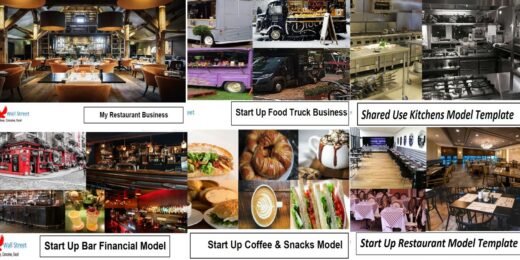
Food Sector Bundle (6 Models)
Planning to start a food business but can’t decide on the profitability of your investment? Why don’t you use our food bundle with 6 templates as... read more
- Template Bundle – $370.00 Version 1

Pizzeria – 3 Statement Financial Model with 5 years Monthly Projection and Valuation
The Pizzeria FM is a perfect tool for financial feasibility of launching a Pizzeria.

Bubble Tea Cafe Financial Model Excel Template
Discover Bubble Tea Cafe Financial Model Template. Creates a financial summary formatted for your Pitch Deck. Ready to Raise Capital. Five year bubble... read more

All Day Bar & Restaurant Financial Model Excel Template
All Day Bar & Restaurant Budget Template There's power in Cash Flow Projections and the insight they can provide your business . Shop Now Five-yea... read more

Start Up Bar Financial Model
Start Up Bar Business Financial Model presents the case of an investment in a bar business and its operations. The model generates the three financial... read more
- Excel Model – $79.00
- Free PDF – $0.00

Brewery – 3 Statement Financial Model with 5 years Monthly Projection & Valuation
This Brewery Business Plan Model is a perfect tool for a financial feasibility study on launching a brewery. The model can be used by the start-up to ... read more
- Excel Model – $99.00 Version 1

Coffee Shop – 5 Year Financial Model
Financial Model providing an advanced 5-year financial plan for a startup or operating Coffee Shop.
- Excel Model - Standard Version – $69.00 Version 1
- Excel Model - Premium Version – $89.00 Version 1

Cat Cafe Financial Model Excel Template
Cat Cafe Budget Template Enhance your pitches and impress potential investors with the expected financial metrics. Buy Now Five-year Cat Cafe budgetin... read more

Coffeehouse Financial Model Excel Template
Discover Coffeehouse Financial Projection Template. Creates 5-year financial projection and financial ratios in GAAP or IFRS formats on the fly.... read more

Startup Business Plan – Coffee Shop
If you dream of owning a coffee shop, the template is the first step in making your dream into reality, It is constructed based on solid experience an... read more
- Excel Version – $69.00 Version 1
- PDF Version – $0.00 Version 1

Beer Bar Financial Model Excel Template
Get the Best Beer Bar Financial Plan. Create fully-integrated financial projection for 5 years. With 3 way financial statements inside. A sophis... read more

Juice Bar- 3 Statement Financial Model with 5 years Monthly Projection and Valuation
This Juice bar FM is a perfect tool for financial feasibility of operating a Juice Bar.

Snack Bar Financial Model Excel Template
Get Snack Bar Financial Model Template. Creates 5-year financial projection and financial ratios in GAAP or IFRS formats on the fly. Generates 5... read more

Karaoke Lounge Financial Model
The idea of this Karaoke Lounge Financial Model is, that you offer 3 separate Karaoke rooms for little private groups, that can be rented, a bar/resta... read more
- Full Excel Version – $79.00
- Free PDF Demo – $0.00

Sports Bar Financial Model Excel Template
Discover Sports Bar Financial Model Template. Creates a financial summary formatted for your Pitch Deck. Ready to Raise Capital. Creates 5-year ... read more

Confectionery Shop Financial Model Excel Template
Confectionery Shop Financial Plan Allows investors and business owners to make a complete financial projection in less than 90 mins. Buy Now Highly ve... read more

Tea Store Financial Model Excel Template
Try Tea Store Budget Template. Enhance your pitches and impress potential investors with the expected financial metrics. Five-year tea store 3 way fin... read more

Fast Food Franchise – Financial Plan
The Franchise Fast Food Excel Financial Model is tailored to evaluate the feasibility of a Fast Food Franchise, and will give you full visibility into... read more
- PDF Preview – $0.00
- Full Excel File – $40.00

Restaurant Financial Model: Adaptable to all Types of Outlets
Our full-fledged financial model in excel format has the functionality to run unlimited activity scenarios. It is built due to our vast experience in ... read more

Market Entry Feasibility Study for Coffee Shops Industry
This model include market entry feasibility study in word format and business plan to convert the literature into numbers excel format for coffee shop... read more
- PDF Demo Version – $0.00 Version 1
- Excel Model + Feasibility Study – $195.00 Version 1

Restaurant Financial Model
This Restaurant Financial Model is tailored for those who aim to start a business from scratch, and it is specifically designed for restaurants, cafes... read more
- Excel Model – $89.99 Version 1
- PDF Preview – $0.00 Version 1

FAST FOOD The Customer-Centric Financial Restaurant Model
Starting a fast food restaurant without a financial plan is like driving a car blindfolded. You wouldn´t do it because you are a careful person! As a... read more

Breakfast Restaurant Financial Model Excel Template
Order Breakfast Restaurant Financial Projection Template. Allows you to start planning with no fuss and maximum of help Five-year horizon financial mo... read more

Coffee/Tea Lounge – 3 Statement Financial Model with 5 years Monthly Projection and Valuation
This Coffee/Tea Lounge FM is a perfect tool for financial feasibility of operating a lounge.

Coffee And Snack Financial Model Excel Template
Coffee And Snack Pro Forma Template Create fully-integrated financial projection for 5 years With 3 way financial statements inside. Shop Now Creates ... read more

Golf Range & Restaurant Financial Model
The idea of this financial model is a golf range with a restaurant, like the concept of Topgolf in the USA. The model assumes to set up a building wit... read more

Ice Cream Shop – 5 Year Financial Model
Financial Model providing an advanced 5-year financial plan for a startup or operating Ice Cream Shop.
- Financial Model - Premium Version – $89.00 Version 1

Subway Cafe Financial Model Excel Template
Subway Cafe Financial Model Allows investors and business owners to make a complete financial projection in less than 90 mins. Shop Now Highly versati... read more

Sandwich Bar Financial Model Excel Template
Download Sandwich Bar Pro-forma Template. Allows investors and business owners to make a complete financial projection in less than 90 mins. Cre... read more

Restaurant Monthly Forecast Model Template
The Restaurant Monthly Forecast Model provides a 3-year annual and monthly forecast specific to a restaurant operation.
- Full Excel Version – $55.00

Tapas Bar Financial Model Excel Template
Get Your Tapas Bar Financial Model. Spend less time on Cash Flow forecasting and more time on your products. Five year tapas bar 3 way forecast ... read more

Bistro Financial Model Excel Template
Check Our Bistro Financial Model. Requesting a loan without a financial model for paying it back is a common way to land in the rejection pile. Create... read more

Restaurant and Bar Financial Model Template
Financial model template for an eating establishment in which customers are served food and drinks at their tables. The model uses a detailed breakdow... read more
- Excel model – $30.00 Version 1
Leave a Reply Cancel reply
You must be logged in to post a comment.
How to Write a Business Plan (Plus Examples & Templates)

Have you ever wondered how to write a business plan step by step? Mike Andes, told us:
This guide will help you write a business plan to impress investors.
Throughout this process, we’ll get information from Mike Andes, who started Augusta Lawn Care Services when he was 12 and turned it into a franchise with over 90 locations. He has gone on to help others learn how to write business plans and start businesses. He knows a thing or two about writing business plans!
We’ll start by discussing the definition of a business plan. Then we’ll discuss how to come up with the idea, how to do the market research, and then the important elements in the business plan format. Keep reading to start your journey!
What Is a Business Plan?
A business plan is simply a road map of what you are trying to achieve with your business and how you will go about achieving it. It should cover all elements of your business including:
- Finding customers
- Plans for developing a team
- Competition
- Legal structures
- Key milestones you are pursuing
If you aren’t quite ready to create a business plan, consider starting by reading our business startup guide .
Get a Business Idea
Before you can write a business plan, you have to have a business idea. You may see a problem that needs to be solved and have an idea how to solve it, or you might start by evaluating your interests and skills.
Mike told us, “The three things I suggest asking yourself when thinking about starting a business are:
- What am I good at?
- What would I enjoy doing?
- What can I get paid for?”

If all three of these questions don’t lead to at least one common answer, it will probably be a much harder road to success. Either there is not much market for it, you won’t be good at it, or you won’t enjoy doing it.
As Mike told us, “There’s enough stress starting and running a business that if you don’t like it or aren’t good at it, it’s hard to succeed.”
If you’d like to hear more about Mike’s approach to starting a business, check out our YouTube video
Conduct Market Analysis
Market analysis is focused on establishing if there is a target market for your products and services, how large the target market is, and identifying the demographics of people or businesses that would be interested in the product or service. The goal here is to establish how much money your business concept can make.
Product and Service Demand

A search engine is your best friend when trying to figure out if there is demand for your products and services. Personally, I love using presearch.org because it lets you directly search on a ton of different platforms including Google, Youtube, Twitter, and more. Check out the screenshot for the full list of search options.
With quick web searches, you can find out how many competitors you have, look through their reviews, and see if there are common complaints about the competitors. Bad reviews are a great place to find opportunities to offer better products or services.
If there are no similar products or services, you may have stumbled upon something new, or there may just be no demand for it. To find out, go talk to your most honest friend about the idea and see what they think. If they tell you it’s dumb or stare at you vacantly, there’s probably no market for it.
You can also conduct a survey through social media to get public opinion on your idea. Using Facebook Business Manager , you could get a feel for who would be interested in your product or service.
I ran a quick test of how many people between 18-65 you could reach in the U.S. during a week. It returned an estimated 700-2,000 for the total number of leads, which is enough to do a fairly accurate statistical analysis.
Identify Demographics of Target Market
Depending on what type of business you want to run, your target market will be different. The narrower the demographic, the fewer potential customers you’ll have. If you did a survey, you’ll be able to use that data to help define your target audience. Some considerations you’ll want to consider are:
- Other Interests
- Marital Status
- Do they have kids?
Once you have this information, it can help you narrow down your options for location and help define your marketing further. One resource that Mike recommended using is the Census Bureau’s Quick Facts Map . He told us,
“It helps you quickly evaluate what the best areas are for your business to be located.”
How to Write a Business Plan

Now that you’ve developed your idea a little and established there is a market for it, you can begin writing a business plan. Getting started is easier with the business plan template we created for you to download. I strongly recommend using it as it is updated to make it easier to create an action plan.
Each of the following should be a section of your business plan:
- Business Plan Cover Page
- Table of Contents
- Executive Summary
- Company Description
- Description of Products and Services
SWOT Analysis
- Competitor Data
- Competitive Analysis
- Marketing Expenses Strategy
Pricing Strategy
- Distribution Channel Assessment
- Operational Plan
- Management and Organizational Strategy
- Financial Statements and/or Financial Projections
We’ll look into each of these. Don’t forget to download our free business plan template (mentioned just above) so you can follow along as we go.
How to Write a Business Plan Step 1. Create a Cover Page
The first thing investors will see is the cover page for your business plan. Make sure it looks professional. A great cover page shows that you think about first impressions.
A good business plan should have the following elements on a cover page:
- Professionally designed logo
- Company name
- Mission or Vision Statement
- Contact Info
Basically, think of a cover page for your business plan like a giant business card. It is meant to capture people’s attention but be quickly processed.
How to Write a Business Plan Step 2. Create a Table of Contents
Most people are busy enough that they don’t have a lot of time. Providing a table of contents makes it easy for them to find the pages of your plan that are meaningful to them.
A table of contents will be immediately after the cover page, but you can include it after the executive summary. Including the table of contents immediately after the executive summary will help investors know what section of your business plan they want to review more thoroughly.
Check out Canva’s article about creating a table of contents . It has a ton of great information about creating easy access to each section of your business plan. Just remember that you’ll want to use different strategies for digital and hard copy business plans.
How to Write a Business Plan Step 3. Write an Executive Summary

An executive summary is where your business plan should catch the readers interest. It doesn’t need to be long, but should be quick and easy to read.
Mike told us,
How long should an executive summary bein an informal business plan?
For casual use, an executive summary should be similar to an elevator pitch, no more than 150-160 words, just enough to get them interested and wanting more. Indeed has a great article on elevator pitches . This can also be used for the content of emails to get readers’ attention.
It consists of three basic parts:
- An introduction to you and your business.
- What your business is about.
- A call to action
Example of an informal executive summary
One of the best elevator pitches I’ve used is:
So far that pitch has achieved a 100% success rate in getting partnerships for the business.
What should I include in an executive summary for investors?
Investors are going to need a more detailed executive summary if you want to secure financing or sell equity. The executive summary should be a brief overview of your entire business plan and include:
- Introduction of yourself and company.
- An origin story (Recognition of a problem and how you came to solution)
- An introduction to your products or services.
- Your unique value proposition. Make sure to include intellectual property.
- Where you are in the business life cycle
- Request and why you need it.
Successful business plan examples
The owner of Urbanity told us he spent 2 months writing a 75-page business plan and received a $250,000 loan from the bank when he was 23. Make your business plan as detailed as possible when looking for financing. We’ve provided a template to help you prepare the portions of a business plan that banks expect.
Here’s the interview with the owner of Urbanity:
When to write an executive summary?
Even though the summary is near the beginning of a business plan, you should write it after you complete the rest of a business plan. You can’t talk about revenue, profits, and expected expenditures if you haven’t done the market research and created a financial plan.
What mistakes do people make when writing an executive summary?
Business owners commonly go into too much detail about the following items in an executive summary:
- Marketing and sales processes
- Financial statements
- Organizational structure
- Market analysis
These are things that people will want to know later, but they don’t hook the reader. They won’t spark interest in your small business, but they’ll close the deal.
How to Write a Business Plan Step 4. Company Description
Every business plan should include a company description. A great business plan will include the following elements while describing the company:
- Mission statement
- Philosophy and vision
- Company goals
Target market
- Legal structure
Let’s take a look at what each section includes in a good business plan.
Mission Statement
A mission statement is a brief explanation of why you started the company and what the company’s main focus is. It should be no more than one or two sentences. Check out HubSpot’s article 27 Inspiring Mission Statement for a great read on informative and inspiring mission and vision statements.
Company Philosophy and Vision

The company philosophy is what drives your company. You’ll normally hear them called core values. These are the building blocks that make your company different. You want to communicate your values to customers, business owners, and investors as often as possible to build a company culture, but make sure to back them up.
What makes your company different?
Each company is different. Your new business should rise above the standard company lines of honesty, integrity, fun, innovation, and community when communicating your business values. The standard answers are corporate jargon and lack authenticity.
Examples of core values
One of my clients decided to add a core values page to their website. As a tech company they emphasized the values:
- Prioritize communication.
- Never stop learning.
- Be transparent.
- Start small and grow incrementally.
These values communicate how the owner and the rest of the company operate. They also show a value proposition and competitive advantage because they specifically focus on delivering business value from the start. These values also genuinely show what the company is about and customers recognize the sincerity. Indeed has a great blog about how to identify your core values .
What is a vision statement?
A vision statement communicate the long lasting change a business pursues. The vision helps investors and customers understand what your company is trying to accomplish. The vision statement goes beyond a mission statement to provide something meaningful to the community, customer’s lives, or even the world.
Example vision statements
The Alzheimer’s Association is a great example of a vision statement:
A world without Alzheimer’s Disease and other dementia.
It clearly tells how they want to change the world. A world without Alzheimers might be unachievable, but that means they always have room for improvement.
Business Goals
You have to measure success against goals for a business plan to be meaningful. A business plan helps guide a company similar to how your GPS provides a road map to your favorite travel destination. A goal to make as much money as possible is not inspirational and sounds greedy.
Sure, business owners want to increase their profits and improve customer service, but they need to present an overview of what they consider success. The goals should help everyone prioritize their work.
How far in advance should a business plan?
Business planning should be done at least one year in advance, but many banks and investors prefer three to five year business plans. Longer plans show investors that the management team understands the market and knows the business is operating in a constantly shifting market. In addition, a plan helps businesses to adjust to changes because they have already considered how to handle them.
Example of great business goals
My all time-favorite long-term company goals are included in Tesla’s Master Plan, Part Deux . These goals were written in 2016 and drive the company’s decisions through 2026. They are the reason that investors are so forgiving when Elon Musk continually fails to meet his quarterly and annual goals.
If the progress aligns with the business plan investors are likely to continue to believe in the company. Just make sure the goals are reasonable or you’ll be discredited (unless you’re Elon Musk).

You did target market research before creating a business plan. Now it’s time to add it to the plan so others understand what your ideal customer looks like. As a new business owner, you may not be considered an expert in your field yet, so document everything. Make sure the references you use are from respectable sources.
Use information from the specific lender when you are applying for lending. Most lenders provide industry research reports and using their data can strengthen the position of your business plan.
A small business plan should include a section on the external environment. Understanding the industry is crucial because we don’t plan a business in a vacuum. Make sure to research the industry trends, competitors, and forecasts. I personally prefer IBIS World for my business research. Make sure to answer questions like:
- What is the industry outlook long-term and short-term?
- How will your business take advantage of projected industry changes and trends?
- What might happen to your competitors and how will your business successfully compete?
Industry resources
Some helpful resources to help you establish more about your industry are:
- Trade Associations
- Federal Reserve
- Bureau of Labor Statistics
Legal Structure
There are five basic types of legal structures that most people will utilize:
- Sole proprietorships
- Limited Liability Companies (LLC)
Partnerships
Corporations.
- Franchises.
Each business structure has their pros and cons. An LLC is the most common legal structure due to its protection of personal assets and ease of setting up. Make sure to specify how ownership is divided and what roles each owner plays when you have more than one business owner.
You’ll have to decide which structure is best for you, but we’ve gathered information on each to make it easier.
Sole Proprietorship
A sole proprietorship is the easiest legal structure to set up but doesn’t protect the owner’s personal assets from legal issues. That means if something goes wrong, you could lose both your company and your home.
To start a sole proprietorship, fill out a special tax form called a Schedule C . Sole proprietors can also join the American Independent Business Alliance .
Limited Liability Company (LLC)
An LLC is the most common business structure used in the United States because an LLC protects the owner’s personal assets. It’s similar to partnerships and corporations, but can be a single-member LLC in most states. An LLC requires a document called an operating agreement.
Each state has different requirements. Here’s a link to find your state’s requirements . Delaware and Nevada are common states to file an LLC because they are really business-friendly. Here’s a blog on the top 10 states to get an LLC.
Partnerships are typically for legal firms. If you choose to use a partnership choose a Limited Liability Partnership. Alternatively, you can just use an LLC.
Corporations are typically for massive organizations. Corporations have taxes on both corporate and income tax so unless you plan on selling stock, you are better off considering an LLC with S-Corp status . Investopedia has good information corporations here .

There are several opportunities to purchase successful franchises. TopFranchise.com has a list of companies in a variety of industries that offer franchise opportunities. This makes it where an entrepreneur can benefit from the reputation of an established business that has already worked out many of the kinks of starting from scratch.
How to Write a Business Plan Step 5. Products and Services
This section of the business plan should focus on what you sell, how you source it, and how you sell it. You should include:
- Unique features that differentiate your business products from competitors
- Intellectual property
- Your supply chain
- Cost and pricing structure
Questions to answer about your products and services
Mike gave us a list of the most important questions to answer about your product and services:
- How will you be selling the product? (in person, ecommerce, wholesale, direct to consumer)?
- How do you let them know they need a product?
- How do you communicate the message?
- How will you do transactions?
- How much will you be selling it for?
- How many do you think you’ll sell and why?
Make sure to use the worksheet on our business plan template .
How to Write a Business Plan Step 6. Sales and Marketing Plan
The marketing and sales plan is focused on the strategy to bring awareness to your company and guides how you will get the product to the consumer. It should contain the following sections:
SWOT Analysis stands for strengths, weaknesses, opportunities, and threats. Not only do you want to identify them, but you also want to document how the business plans to deal with them.
Business owners need to do a thorough job documenting how their service or product stacks up against the competition.
If proper research isn’t done, investors will be able to tell that the owner hasn’t researched the competition and is less likely to believe that the team can protect its service from threats by the more well-established competition. This is one of the most common parts of a presentation that trips up business owners presenting on Shark Tank .
SWOT Examples

Examples of strengths and weaknesses could be things like the lack of cash flow, intellectual property ownership, high costs of suppliers, and customers’ expectations on shipping times.
Opportunities could be ways to capitalize on your strengths or improve your weaknesses, but may also be gaps in the industry. This includes:
- Adding offerings that fit with your current small business
- Increase sales to current customers
- Reducing costs through bulk ordering
- Finding ways to reduce inventory
- And other areas you can improve
Threats will normally come from outside of the company but could also be things like losing a key member of the team. Threats normally come from competition, regulations, taxes, and unforeseen events.
The management team should use the SWOT analysis to guide other areas of business planning, but it absolutely has to be done before a business owner starts marketing.
Include Competitor Data in Your Business Plan
When you plan a business, taking into consideration the strengths and weaknesses of the competition is key to navigating the field. Providing an overview of your competition and where they are headed shows that you are invested in understanding the industry.
For smaller businesses, you’ll want to search both the company and the owners names to see what they are working on. For publicly held corporations, you can find their quarterly and annual reports on the SEC website .
What another business plans to do can impact your business. Make sure to include things that might make it attractive for bigger companies to outsource to a small business.
Marketing Strategy
The marketing and sales part of business plans should be focused on how you are going to make potential customers aware of your business and then sell to them.
If you haven’t already included it, Mike recommends:
“They’ll want to know about Demographics, ages, and wealth of your target market.”
Make sure to include the Total addressable market . The term refers to the value if you captured 100% of the market.
Advertising Strategy
You’ll explain what formats of advertising you’ll be using. Some possibilities are:
- Online: Facebook and Google are the big names to work with here.
- Print : Print can be used to reach broad groups or targeted markets. Check out this for tips .
- Radio : iHeartMedia is one of the best ways to advertise on the radio
- Cable television : High priced, hard to measure ROI, but here’s an explanation of the process
- Billboards: Attracting customers with billboards can be beneficial in high traffic areas.
You’ll want to define how you’ll be using each including frequency, duration, and cost. If you have the materials already created, including pictures or links to the marketing to show creative assets.
Mike told us “Most businesses are marketing digitally now due to Covid, but that’s not always the right answer.”
Make sure the marketing strategy will help team members or external marketing agencies stay within the brand guidelines .

This section of a business plan should be focused on pricing. There are a ton of pricing strategies that may work for different business plans. Which one will work for you depends on what kind of a business you run.
Some common pricing strategies are:
- Value-based pricing – Commonly used with home buying and selling or other products that are status symbols.
- Skimming pricing – Commonly seen in video game consoles, price starts off high to recoup expenses quickly, then reduces over time.
- Competition-based pricing – Pricing based on competitors’ pricing is commonly seen at gas stations.
- Freemium services – Commonly used for software, where there is a free plan, then purchase options for more functionality.
HubSpot has a great calculator and blog on pricing strategies.
Beyond explaining what strategy your business plans to use, you should include references for how you came to this pricing strategy and how it will impact your cash flow.
Distribution Plan
This part of a business plan is focused on how the product or service is going to go through the supply chain. These may include multiple divisions or multiple companies. Make sure to include any parts of the workflow that are automated so investors can see where cost savings are expected and when.
Supply Chain Examples
For instance, lawn care companies would need to cover aspects such as:
- Suppliers for lawn care equipment and tools
- Any chemicals or treatments needed
- Repair parts for sprinkler systems
- Vehicles to transport equipment and employees
- Insurance to protect the company vehicles and people.
Examples of Supply Chains
These are fairly flat supply chains compared to something like a clothing designer where the clothes would go through multiple vendors. A clothing company might have the following supply chain:
- Raw materials
- Shipping of raw materials
- Converting of raw materials to thread
- Shipping thread to produce garments
- Garment producer
- Shipping to company
- Company storage
- Shipping to retail stores
There have been advances such as print on demand that eliminate many of these steps. If you are designing completely custom clothing, all of this would need to be planned to keep from having business disruptions.
The main thing to include in the business plan is the list of suppliers, the path the supply chain follows, the time from order to the customer’s home, and the costs associated with each step of the process.
According to BizPlanReview , a business plan without this information is likely to get rejected because they have failed to research the key elements necessary to make sales to the customer.
How to Write a Business Plan Step 7. Company Organization and Operational Plan
This part of the business plan is focused on how the business model will function while serving customers. The business plan should provide an overview of how the team will manage the following aspects:
Quality Control
- Legal environment
Let’s look at each for some insight.
Production has already been discussed in previous sections so I won’t go into it much. When writing a business plan for investors, try to avoid repetition as it creates a more simple business plan.
If the organizational plan will be used by the team as an overview of how to perform the best services for the customer, then redundancy makes more sense as it communicates what is important to the business.

Quality control policies help to keep the team focused on how to verify that the company adheres to the business plan and meets or exceeds customer expectations.
Quality control can be anything from a standard that says “all labels on shirts can be no more than 1/16″ off center” to a defined checklist of steps that should be performed and filled out for every customer.
There are a variety of organizations that help define quality control including:
- International Organization for Standardization – Quality standards for energy, technology, food, production environments, and cybersecurity
- AICPA – Standard defined for accounting.
- The Joint Commission – Healthcare
- ASHRAE – HVAC best practices
You can find lists of the organizations that contribute most to the government regulation of industries on Open Secrets . Research what the leaders in your field are doing. Follow their example and implement it in your quality control plan.
For location, you should use information from the market research to establish where the location will be. Make sure to include the following in the location documentation.
- The size of your location
- The type of building (retail, industrial, commercial, etc.)
- Zoning restrictions – Urban Wire has a good map on how zoning works in each state
- Accessibility – Does it meet ADA requirements?
- Costs including rent, maintenance, utilities, insurance and any buildout or remodeling costs
- Utilities – b.e.f. has a good energy calculator .
Legal Environment
The legal requirement section is focused on defining how to meet the legal requirements for your industry. A good business plan should include all of the following:
- Any licenses and/or permits that are needed and whether you’ve obtained them
- Any trademarks, copyrights, or patents that you have or are in the process of applying for
- The insurance coverage your business requires and how much it costs
- Any environmental, health, or workplace regulations affecting your business
- Any special regulations affecting your industry
- Bonding requirements, if applicable
Your local SBA office can help you establish requirements in your area. I strongly recommend using them. They are a great resource.
Your business plan should include a plan for company organization and hiring. While you may be the only person with the company right now, down the road you’ll need more people. Make sure to consider and document the answers to the following questions:
- What is the current leadership structure and what will it look like in the future?
- What types of employees will you have? Are there any licensing or educational requirements?
- How many employees will you need?
- Will you ever hire freelancers or independent contractors?
- What is each position’s job description?
- What is the pay structure (hourly, salaried, base plus commission, etc.)?
- How do you plan to find qualified employees and contractors?
One of the most crucial parts of a business plan is the organizational chart. This simply shows the positions the company will need, who is in charge of them and the relationship of each of them. It will look similar to this:

Our small business plan template has a much more in-depth organizational chart you can edit to include when you include the organizational chart in your business plan.
How to Write a Business Plan Step 8. Financial Statements
No business plan is complete without financial statements or financial projections. The business plan format will be different based on whether you are writing a business plan to expand a business or a startup business plan. Let’s dig deeper into each.
Provide All Financial Income from an Existing Business
An existing business should use their past financial documents including the income statement, balance sheet, and cash flow statement to find trends to estimate the next 3-5 years.
You can create easy trendlines in excel to predict future revenue, profit and loss, cash flow, and other changes in year-over-year performance. This will show your expected performance assuming business continues as normal.
If you are seeking an investment, then the business is probably not going to continue as normal. Depending on the financial plan and the purpose of getting financing, adjustments may be needed to the following:
- Higher Revenue if expanding business
- Lower Cost of Goods Sold if purchasing inventory with bulk discounts
- Adding interest if utilizing financing (not equity deal)
- Changes in expenses
- Addition of financing information to the cash flow statement
- Changes in Earnings per Share on the balance sheet
Financial modeling is a challenging subject, but there are plenty of low-cost courses on the subject. If you need help planning your business financial documentation take some time to watch some of them.
Make it a point to document how you calculated all the changes to the income statement, balance sheet, and cash flow statement in your business plan so that key team members or investors can verify your research.
Financial Projections For A Startup Business Plan
Unlike an existing business, a startup doesn’t have previous success to model its future performance. In this scenario, you need to focus on how to make a business plan realistic through the use of industry research and averages.
Mike gave the following advice in his interview:
Financial Forecasting Mistakes
One of the things a lot of inexperienced people use is the argument, “If I get one percent of the market, it is worth $100 million.” If you use this, investors are likely to file the document under bad business plan examples.
Let’s use custom t-shirts as an example.
Credence Research estimated in 2018 there were 11,334,800,000 custom t-shirts sold for a total of $206.12 Billion, with a 6% compound annual growth rate.
With that data, you can calculate that the industry will grow to $270 Billion in 2023 and that the average shirt sold creates $18.18 in revenue.
Combine that with an IBIS World estimate of 11,094 custom screen printers and that means even if you become an average seller, you’ll get .009% of the market.
Here’s a table for easier viewing of that information.

The point here is to make sure your business proposal examples make sense.
You’ll need to know industry averages such as cost of customer acquisition, revenue per customer, the average cost of goods sold, and admin costs to be able to create accurate estimates.
Our simple business plan templates walk you through most of these processes. If you follow them you’ll have a good idea of how to write a business proposal.
How to Write a Business Plan Step 9. Business Plan Example of Funding Requests
What is a business plan without a plan on how to obtain funding?
The Small Business Administration has an example for a pizza restaurant that theoretically needed nearly $20k to make it through their first month.
In our video, How to Start a $500K/Year T-Shirt Business (Pt. 1 ), Sanford Booth told us he needed about $200,000 to start his franchise and broke even after 4 months.
Freshbooks estimates it takes on average 2-3 years for a business to be profitable, which means the fictitious pizza company from the SBA could need up to $330k to make it through that time and still pay their bills for their home and pizza shop.
Not every business needs that much to start, but realistically it’s a good idea to assume that you need a fairly large cushion.
Ways to get funding for a small business
There are a variety of ways to cover this. the most common are:
- Bootstrapping – Using your savings without external funding.
- Taking out debt – loans, credit cards
- Equity, Seed Funding – Ownership of a percentage of the company in exchange for current funds
- Crowdsourcing – Promising a good for funding to create the product
Keep reading for more tips on how to write a business plan.
How funding will be used
When asking for business financing make sure to include:
- How much to get started?
- What is the minimum viable product and how soon can you make money?
- How will the money be spent?
Mike emphasized two aspects that should be included in every plan,
How to Write a Business Plan Resources
Here are some links to a business plan sample and business plan outline.
- Sample plan
It’s also helpful to follow some of the leading influencers in the business plan writing community. Here’s a list:
- Wise Plans – Shares a lot of information on starting businesses and is a business plan writing company.
- Optimus Business Plans – Another business plan writing company.
- Venture Capital – A venture capital thread that can help give you ideas.
How to Write a Business Plan: What’s Next?
We hope this guide about how to write a simple business plan step by step has been helpful. We’ve covered:
- The definition of a business plan
- Coming up with a business idea
- Performing market research
- The critical components of a business plan
- An example business plan
In addition, we provided you with a simple business plan template to assist you in the process of writing your startup business plan. The startup business plan template also includes a business model template that will be the key to your success.
Don’t forget to check out the rest of our business hub .
Have you written a business plan before? How did it impact your ability to achieve your goals?
80% of businesses fail... Learn how not to.
Learn from business failures and successes in 5 min or less. The stories, frameworks, and tactics that will make you a 10x better founder.
Brandon Boushy
Related articles
Monday.com Review: Pros & Cons, Ratings & More
How to Resell Shoes (And Make $350K/Month)
How to Register a Business (in 5 Easy Steps)
nice work https://binarychemist.com/
My Name is PRETTY NGOMANE. A south African female. Aspiring to do farming. And finding a home away from home for the differently abled persons in their daily needs.
Become a business owner in less than 90 days
Start your 10-day free trial of the UpFlip Academy and learn how to start your own business from scratch.
Get business advice straight to your Inbox
Business Plan Template for Students
- Great for beginners
- Ready-to-use, fully customizable Subcategory
- Get started in seconds

Thinking of starting your own business as a student? We've got you covered! ClickUp's Business Plan Template for Students is the ultimate tool to help you turn your entrepreneurial dreams into reality.
With this template, you can:
- Develop a strategic and detailed plan for your business idea
- Outline your objectives, marketing strategies, and financial projections
- Structure your organizational hierarchy for effective management
- Impress potential investors and stakeholders with a professional and well-thought-out plan
- Stay organized and focused on your goals throughout the entire business development process
Don't let your student status hold you back from achieving your business goals. Get started with ClickUp's Business Plan Template for Students today and pave the way for your future success!
Business Plan Template for Students Benefits
When students use the Business Plan Template, they gain a competitive edge and set themselves up for success by:
- Structuring their business ideas and goals in a comprehensive and organized manner
- Presenting a professional and well-thought-out plan to potential investors or stakeholders
- Creating a clear roadmap for their business, ensuring they stay on track and achieve their objectives
- Developing a solid understanding of key business components like marketing strategies and financial projections
- Gaining valuable experience in business planning and management, setting them up for future entrepreneurial endeavors.
Main Elements of Students Business Plan Template
When it comes to creating a solid business plan, ClickUp's Business Plan Template for Students has got you covered. Here are the main elements you'll find in this template:
- Custom Statuses: Track the progress of your business plan with statuses like Complete, In Progress, Needs Revision, and To Do, ensuring that every step is accounted for and easily manageable.
- Custom Fields: Utilize custom fields such as Reference, Approved, and Section to add important details to your business plan, keeping everything organized and accessible in one place.
- Custom Views: Explore different views like Topics, Status, Timeline, Business Plan, and Getting Started Guide, enabling you to visualize your plan in various formats and dive deep into specific areas of your business plan.
- Collaboration: Collaborate seamlessly with your team by assigning tasks, leaving comments, and attaching files directly within ClickUp, streamlining the entire business planning process.
- Integrations: Integrate with other tools such as Google Drive, Dropbox, and Slack to streamline your workflow and ensure all relevant documents and communication are easily accessible.
With ClickUp's Business Plan Template for Students, you'll have all the tools you need to create a comprehensive, well-structured business plan that will impress potential investors and set you on the path to success.
How To Use Business Plan Template for Students
Creating a business plan as a student can be a daunting task, but with the help of ClickUp's Business Plan Template, you can break it down into manageable steps. Follow these six steps to create a comprehensive business plan that sets you up for success:
1. Define your business idea
Start by clearly defining your business idea. What product or service will you offer? Who is your target audience? What makes your business unique? Use the Docs feature in ClickUp to brainstorm and outline your business concept.
2. Conduct market research
Next, conduct thorough market research to understand your industry, competitors, and target market. Analyze market trends, customer preferences, and potential demand for your product or service. Use the Table view in ClickUp to organize and analyze your research data.
3. Outline your business structure
Determine the legal structure of your business and outline its organizational structure. Will you operate as a sole proprietorship, partnership, or corporation? Define the roles and responsibilities of key team members and any necessary partnerships. Utilize the Board view in ClickUp to visualize and assign tasks related to your business structure.
4. Develop a marketing strategy
Create a comprehensive marketing strategy to promote your business and attract customers. Identify your unique selling propositions, target marketing channels, and budget for marketing activities. Use the Calendar view in ClickUp to plan and schedule your marketing campaigns.
5. Create a financial plan
Develop a financial plan that includes projected revenue, expenses, and profit margins. Determine your startup costs, pricing strategy, and sales projections. Use custom fields in ClickUp to track and calculate financial data accurately.
6. Set goals and milestones
Set specific, measurable, achievable, relevant, and time-bound (SMART) goals for your business. Break them down into smaller milestones and create a timeline to track your progress. Utilize the Goals feature in ClickUp to set and monitor your business goals.
By following these six steps and utilizing ClickUp's Business Plan Template, you can create a comprehensive and well-structured business plan that will guide you towards success in your entrepreneurial journey.
Get Started with ClickUp’s Business Plan Template for Students
Students who are aspiring entrepreneurs or learning about business management can use the ClickUp Business Plan Template to develop a comprehensive and structured plan for their business idea.
First, hit "Add Template" to sign up for ClickUp and add the template to your Workspace. Make sure you designate which Space or location in your Workspace you'd like this template applied.
Next, invite relevant members or guests to your Workspace to start collaborating.
Now you can take advantage of the full potential of this template to create a solid business plan:
- Use the Topics View to organize your plan into different sections such as Executive Summary, Market Analysis, Marketing Strategy, Financial Projections, etc.
- The Status View will help you track the progress of each section, with statuses like Complete, In Progress, Needs Revision, and To Do.
- The Timeline View will allow you to set deadlines and milestones for each section, ensuring you stay on track.
- The Business Plan View will give you an overview of the entire plan, allowing you to see how each section fits together.
- The Getting Started Guide View will provide you with step-by-step instructions on how to use the template effectively.
Customize your business plan further by utilizing the three custom fields: Reference, Approved, and Section. These fields will help you keep track of external resources, approval status, and the specific section each task belongs to.
Monitor and analyze your progress using the various views and custom fields to ensure your business plan is comprehensive and well-structured.
- Business Plan Template for Jollibee
- Business Plan Template for Strategic Planning
- Business Plan Template for Woolworths
- Business Plan Template for Ui Designers
- Business Plan Template for Shoe Retailers
Template details
Free forever with 100mb storage.
Free training & 24-hours support
Serious about security & privacy
Highest levels of uptime the last 12 months
- Product Roadmap
- Affiliate & Referrals
- On-Demand Demo
- Integrations
- Consultants
- Gantt Chart
- Native Time Tracking
- Automations
- Kanban Board
- vs Airtable
- vs Basecamp
- vs MS Project
- vs Smartsheet
- Software Team Hub
- PM Software Guide

- Customer Reviews
- Net 30 Account
- Wise Services
- Steps & Timeline
- Work at a Glance
- Market Research at a Glance
- Business Plan Writing Services
- Bank Business Plan
- Investor Business Plan
- Franchise Business Plan
- Cannabis Business Plan
- Strategic Business Plan
- Corporate Business Plan
- Merge and Acquisition Business Plan (M&A)
- Private Placement Memorandums (PPM)
- Sample Business Plans
- Professional Feasibility Study
- PowerPoint Presentations
- Pitch Deck Presentation Services
- Business Plan Printing
- Market Research
- L-1 Business Plan
- E-2 Business Plan
- EB-5 Business Plan
- EB-5 Regional Centers
- Immigration Attorneys
- Nonprofit Business Plan
- Exit Business Planning
- Business Planning
- Business Formation
- Business License
- Business Website
- Business Branding
- Business Bank Account
- Digital Marketing
- Business Funding Resources
- Small Business Loans
- Venture Capital
- Net 30 Apply

14 Professional Business Plan Samples [Downloadable pdf]
Looking for business plan examples for inspiration? Download or view 14 business plans examples/samples, vetted by our MBA business plan writers. Download in PDF format or read like a book. These real business plan samples would help in writing your own business plan.

View Real Business Plan Examples/Samples

As an entrepreneur, effectively pitching your idea to attract investors and secure funding can be a challenge. Moreover, when launching a business, creating a comprehensive business plan is paramount.
To aid you in these crucial tasks, we offer a collection of real-world and sample business plan examples across diverse industries. A well-structured business plan is indispensable in the fast-paced entrepreneurial landscape, as it delineates your goals, strategies, and financial projections, providing a clear roadmap for your venture.
Our aim is to facilitate the creation of an effective business plan by integrating real-life examples to elucidate the key elements involved. Below, you’ll find a range of 14 detailed business plan examples available for download and use.
Important Sections to Include in Business Plan
To create a robust business plan, ensure inclusion of the following key sections:
- Executive Summary: A brief snapshot of your business and the key highlights of your business plan. Read more
- Product and Services: An elaborate description of the offerings you will provide to your customers. Read more
- Marketing and Sales Plan: A strategic roadmap outlining how you intend to promote and market your business before, during, and after its launch. Read more
- Operating Planning: An explanation of the systems, processes, and tools necessary to efficiently run your business behind the scenes. Read more
- Organization and Management: Organization and management in a business plan outline the structure and leadership of the company. Read more
- Financial Plan: A comprehensive plan mapping out your short-term and long-term financial goals and the associated costs of running your business. If you require funding, this section is where you can outline your request and financial needs. Read more
- Key External Drivers: External drivers encompass factors like outsourcing, economic changes, industry competition, and business legislation complexity. Read more
- Startup Summary: The startup summary offers a comprehensive financial overview of , detailing expenses, asset value, and total requirements, crucial for transparency with entrepreneurs and investors. Read more
- Projected Industry Growth : Projected industry growth forecasts the sector’s expansion, offering a 10-year perspective and average annual growth rate, providing clarity to investors. Read more
- Break-even analysis: The break-even analysis visually presents key metrics and a 12-month revenue forecast to help stakeholders grasp the point where the business covers costs and starts generating profit . Read more
- Management Summary: The management summary provides a concise overview of organizational structure, key personnel, their roles, and financial commitments, ensuring stakeholders understand the business’s operational strength and leadership capability. Read more
- Financial Indicators: The financial indicators section evaluates organizational fiscal health, focusing on year-over-year profitability metrics, leverage ratios, liquidity ratios, and additional metrics, providing a comprehensive understanding of the business’s financial performance and efficiency in revenue generation from equity investments. Read more
Practical Business Plan Examples Illustrating Strategies for Startup Success

1. E-commerce Plan Sample or Example
Something Borrowed Something New is a burgeoning e-commerce enterprise specializing in wedding accessories and personalized gifts. Operating on a drop-shipping model, this business has the capability to make a significant impact in the market.
Moreover, leveraging social networking and blogging can be instrumental in generating awareness and capturing interest, thereby creating a robust online marketing strategy for Something Old and Something New.
To enhance their business operations, they are contemplating the integration of a WhatsApp CRM system. This initiative aims to optimize communication with potential customers, ensuring prompt responses to inquiries and fostering a seamless interaction process.

2. Online Marketplace Business Plan Example or Sample
EPlace Solutions will be an innovative online marketplace business portal offering a variety of products to consumers throughout the globe. Founded by Mr. John Jones, a seasoned business visionary with an eye toward profit and achievement, the organization is set to enter the market in 2023.
Online shopping is at an all-time high with new consumer mindsets calling for them to shop for the types of deals and bargains that will be so much a part of the online marketplace business model.

3. Snack Bar Business Plan Sample / Business Plan Example
There is an increasing demand for snack-type fast food to be consumed while window shopping and walking around inside a shopping mall.
Do you plan to start a snack bar business? Then here’s a complete snack bar startup business plan template and feasibility report you can use FREE of charge. It sounds easy to open a snack bar, but in reality, you need well-planned strategies to ensure that your business stands the test of time.
Our snack bar business plan sample includes a detailed description of the products and services offered, as well as a market a nalysis and competitive analysis.
It also includes a financial plan that outlines the startup costs, revenue projections, and break-even analysis. We like this sample plan because it demonstrates how to build a profitable snack bar business by creating a unique menu and offering healthy, high-quality snac ks that meet custome r demand.
Your snack shop business plan can look as polished and professional as the sample plan. It’s fun and easy, with Wise Business Plan. Let’s review the snack shop business plan sample and adjust them according to your audience for the best results.

4. Coffee Shop Business Plan Sample/Business Plan Example PDF
A coffee shop business plan is a document that outlines what your business idea is and how it will be implemented. Its purpose is to answer questions such as what it costs to start a coffee shop, how these costs will be financed, and how much money you can expect to earn from your cafe.
Are you looking for the right business plan for your cafe? Let’s review the Coffee shop business plan sample to find out how cloud-based software can make your day-to-day work more efficient.
Our coffee shop business plan sample includes a detailed description of the products and services offered, as well as a market analysis and competitive analysis.
It also includes a financial plan that outlines the startup costs, revenue projections, and break-even analysis. We like this sample plan because it demonstrates how to build a profitable coffee shop business by creating a unique brand and offering high-quality products a nd customer service.

5. Food Hall Business Plan Sample/Business Plan Example PDF
In the food industry, there is fierce competition. To ensure success, you need to hit the ground running with the right pitch. Our food house business plan is the ideal solution with an attractive design highlighting key information and conveying the right message.
This food business plan example features food images intended to tantalize the taste buds. It captures the theme perfectly and will convey the ultimate message to investors, clients and customers.
It is important to remember that the business plan template can be customized to meet your company’s specific needs and requirements. It will help showcase your business as a leader in the modern industry.
This food business plan template provides key slides to showcase everything from finances to marketing and key competitors. If you prefer, you can alter the content displayed to meet your specific needs, but this is a good starting point.
Ultimately, this food house business plan will be suitable for any business operating in the food industry and keen to get interested from key individuals. It will ensure that you can build up the rep of your company.
We provide a one-of-a-kind sales pitch deck designed to appeal to your prospective audience, as well as a custom presentation tailored to their information requirements.

6. Printing Shop Business Plan Sample/Business Plan Example Plan
When establishing a think tank, you will need to develop a business plan and document it properly. As a mass think tank, you need a special strategy to legalize the think tank as a non-profit organization and to raise funds for your project successfully.
Copy and print businesses offer a variety of services to both businesses and consumers. A copy and print shop can handle everything from single-page printing to large-volume jobs using several types of media.
Our printing shop business plan sample includes a detailed description of the products and services offered, as well as a market analysis and competitive analysis. It also includes a financial plan that outlines the startup costs, revenue projections, and break-even analysis. We like this sample plan because it demonstrates how to build a profitable printing shop business by offering high-quality, customized printing services with a focus on customer s ervice and efficient operations.
Let’s take a look at Printing and Photocopy Business Plan Sample that you can use to inspire your own and easily create one.

7. Acquisition Business Plan Sample/ Example PDF
The acquisition business plan sample is intended for businesses seeking to acquire another company or merge with a competitor. This plan includes an analysis of the target company, a valuation, and a strategy for integrating the acquired business into the existing operations. We like this sample plan because it provides a clear roadmap for the acquisition process and demonstrates the potential benefits of the deal.

8. L-1 Visa Business Plan Example with Sample PDF
At Wisebusinessplans, we understand that obtaining an L1 visa for an executive or manager requires a thorough and compelling business plan.
Our L1 business plan sample includes all the necessary components to satisfy USCIS requirements and demonstrate your qualifications and your company’s viability in the US market.
The L1 business plan sample is a comprehensive plan for a new business seeking L1 visa approval for an executive or manager. This plan focuses on demonstrating the applicant’s qualifications and the company’s viability in the US market.
We like this sample plan because it is specific to the L1 visa process and includes all the necessary components to satisfy USCIS requirements.

9. E-2 Visa Business Plan Sample/ Example PDF
If you’re an entrepreneur seeking E-2 visa approval, Wise Business Plans can help you create a persuasive business plan.
Our E-2 business plan sample outlines your investment, business operations, and financial projections, providing a clear and compelling case for your ability to successfully run a business and make a significant economic impact.
The E-2 business plan sample is designed for entrepreneurs seeking E-2 visa approval, which allows individuals to invest in and manage a business in the United States. This plan outlines the applicant’s investment, business operations, and financial projections. We like this sample plan because it provides a clear and compelling case for the applicant’s ability to successfully run a business and make a significant economic impact.

10. EB-5 Business Plan Sample/ Example PDF
If you’re looking to obtain an EB-5 visa by investing in a new commercial enterprise in the United States, Wise Business Plans can help you create a compelling business plan.
Our EB-5 business plan sample includes a description of your business, a market analysis, and financial projections, providing a detailed and persuasive case for the potential success of your venture.
The EB-5 business plan sample is designed for individuals seeking to obtain an EB-5 visa by investing in a new commercial enterprise in the United States. This plan includes a description of the business, a market analysis, and financial projections. We like this sample plan because it provides a detailed and persuasive case for the potential success of the business, which is crucial for obtaining EB-5 visa approval.

11. Investor Business Plan Sample/ Example PDF
If you’re seeking investment from angel investors, venture capitalists, or other private equity firms, Wise Business Plans can help you create a compelling pitch.
Our investor business plan sample includes a pitch deck, financial projections, and a detailed analysis of the market the potential return on investment and the scalability of your business.
The investor business plan sample is intended for businesses seeking to attract investment from angel investors, venture capitalists, or other private equity firms. This plan includes a pitch deck, financial projections, and a detailed analysis of the market opportunity. We like this sample plan because it emphasizes the potential return on investment and the scalability of the business.


12. Nonprofit Business Plan Sample/ Example PDF
At Wisebusinessplans, we’re committed to helping non-profit organizations achieve their social impact goals.
Our non-profit business plan sample includes a mission statement, programs and services, marketing and outreach strategies, and a financial analysis, providing a clear roadmap for establishing or expanding your organization.
The non-profit business plan sample is designed for organizations seeking to establish or expand a non-profit entity. This plan includes a mission statement, programs and services, marketing and outreach strategies, and a financial analysis. We like this sample plan because it demonstrates a strong commitment to social impact and outlines a clear strategy for achieving the organization’s goals.

13. Bank Business Plan Sample/ Example PDF
Whether you’re seeking financing from a bank or other financial institution, Wise Business Plans can help you create a detailed and persuasive business plan.
Our bank business plan sample includes a thorough financial analysis, market research, and a strategy for achieving profitability, highlighting the key factors that banks consider when evaluating loan applications.
The bank business plan sample is tailored for businesses seeking financing from a bank or other financial institution. This plan includes a detailed financial analysis, market research, and a strategy for achieving profitability. We like this sample plan because it highlights the key factors that banks consider when evaluating loan applications, and provides a strong case for the borrower’s ability to repay the loan.

14. Cannabis Business Plan Sample/ Example PDF
The cannabis industry is rapidly growing, and Wise Business Plans can help you enter it with confidence.
Our cannabis business plan sample includes a market analysis, operational strategy, and regulatory compliance a comprehensive overview of the unique challenges and opportunities in the industry and offering a clear roadmap for success.
The cannabis business plan sample is tailored for entrepreneurs seeking to enter the rapidly growing cannabis industry. This plan includes a market analysis, operational strategy, and regulatory compliance plan. We like this sample plan because it provides a comprehensive overview of the unique challenges and opportunities in the cannabis industry, and offers a clear roadmap for success.
Detailed Overview of Key Components of a Business Plan
1. executive summary.
The executive summary is a concise overview of your business plan, highlighting the key points of each section. It should capture the essence of your business, its mission, and the purpose of the business plan. This section should be written last, but it’s placed at the beginning of the business plan. Here is an example executive summary from our professional business plan written for Eplace Solution , an innovative e-commerce portal.

Tips for Writing Executive Summary
- Keep it brief and focused on key points.
- Clearly define the problem and your solution.
- Highlight market opportunities and growth potential.
- Showcase your team’s qualifications.
- Include financial projections.
- End with a clear call to action.
- Tailor it to your audience.
- Review and update regularly.

2. Company Overview or Description
In this section, provide a detailed description of your company, including its history, legal structure, location, and vision. Explain your mission statement and core values that guide your business decisions. Use real-life examples of successful companies and how their strong company descriptions have contributed to their growth. In addition, you can reuse your company description on your About page, Instagram page, or other properties that ask for a boilerplate description of your business.
This section also allows you to describe how you register your business . Here you must choose whether your business is a corporation, sole proprietorship, LLC , or another type of business .

Tips for Writing Company Description
- Describe your company’s mission and vision.
- Explain what your business does and the problems it solves.
- Mention your target market and customer base.
- Highlight your unique selling points.
- Provide a brief history and background.
3. Market Analysis
A market analysis analyzes how you are positioned in the market, who your target customers are, what your product or service will offer them, and industry trends. It might be useful to do a SWOT analysis to discover your strengths and weaknesses to identify market gaps that you may be able to exploit to build your business.
As part of your market research, you’ll also need to perform a competitive analysis. It will give you an idea of who your competition is and how to differentiate your brand. Here’s an example of a competitive analysis we did for a food business.

Tips for Writing Market Analysis
- Research and understand your industry thoroughly.
- Identify market trends and growth opportunities.
- Analyze your competitors and their strengths and weaknesses.
- Define your target audience and their needs.
- Include data and statistics to support your analysis.

4. Product and Services
Adding products and services to a business plan involves more than listing your company’s offerings. If you intend to gain funding or partner with another business, your products, and services section needs to demonstrate your company’s quality, value, and benefits.
Here’s an example of a product and service section in the business plan we wrote for an e-commerce business that offers wedding accessories.

Tips for Writing Product and Services
- Clearly describe your offerings and their features.
- Explain how your products/services address customer needs.
- Highlight any unique qualities or advantages.
- Discuss your pricing strategy.
- Mention any future product/service development plans.
Here is example of services section of a bank.

5. Marketing and Sales Plan
It is always a good idea to have a marketing plan before launching your business. A potential investor will want to know how you will advertise your business. Therefore, you should create a marketing plan that explains your planned promotion and customer acquisition strategies.
Discuss how you will make a sale. How will you attract customers and maximize their lifetime value? Ensure your marketing and sales forecasts align with your financial forecasts Marketing plans are usually based on the four Ps : product, price, place, and promotion. Breaking it down by marketing channels makes it easier. Discuss how you intend to market your business via blogs, email, social media, and word-of-mouth. Here is an example of marketing strategies we develop for a restaurant business.

Tips for Writing Marketing and Sales Plan
- Define your marketing goals and objectives.
- Outline your marketing strategies, including channels and tactics.
- Explain your sales strategy and target sales goals.
- Include a budget for marketing and sales activities.
- Discuss your sales team and their roles.
- Detail your customer acquisition and retention strategies.
- Mention any partnerships or collaborations for marketing and sales.
Example of marketing and sales plan section of a bank

6. Operation Planning
The operation plan should include all the steps needed to run the business in the long run. The plan should include details about logistics, duties for each department of the company, and responsibilities for the team.
The main aspect of running a business is its costs. Whether it’s machinery or services, each requires capital.
how to write an operation plan in a business plan
Tips for Writing Operational Planning
- Describe your day-to-day business operations.
- Explain your supply chain and production processes.
- Outline your facility and equipment requirements.
- Discuss your quality control and efficiency measures.
- Mention any legal and regulatory compliance considerations.
- Detail your staffing and management structure.
- Include contingency plans for potential disruptions.
7. Organization and Management
In this section, you can describe your current team and the people you need to hire. You will need to highlight your team’s relevant experience if you intend to seek funding. Basically, this is where you demonstrate that this team can be successful in starting and growing the business.

Tips for Writing Organization and Management Summary
- Introduce your leadership team and their roles.
- Highlight their relevant experience and qualifications.
- Explain your organizational structure and hierarchy.
- Discuss key personnel responsibilities and functions.
- Mention any plans for team growth or development.
- Address any advisory boards or external support.
Management summary of coffee shoppe business.

8. Financial Plan
A financial plan should include sales and revenue forecasts, profit and loss statements , cash flow statements , and balance sheets .
Now, if you plan to pitch investors or submit a loan application, you’ll also need a “use of funds” report. Here you outline how you plan to leverage any funding you might acquire for your business.
With our business templates , you can create your own income statement, cash flow statement, and balance sheet.

Tips for Writing Financial Plan
- Include detailed financial projections (income statement, cash flow, balance sheet).
- Explain your funding requirements and sources.
- Discuss your pricing and revenue model.
- Describe your expense management and cost controls.
- Mention any financial risks and mitigation strategies.
- Highlight key financial milestones and goals.
Financial highlights of foodShack business.

9. Key External Drivers
External drivers refer to the external factors or influences that significantly impact the activity and growth of an industry. These drivers include outsourcing of non-core activities, changes in economic activity, competition from other industries, and the complexity of business legislation.
Additionally, external drivers encompass the effects of changes in new business formation, especially among small businesses, which directly affect the demand for services within the industry.

Tips for writing key external drivers
- Identify and analyze current and emerging market trends in your industry.
- Assess potential positive or negative impacts these trends may have on your business.
- Evaluate broader economic conditions, including inflation rates, interest rates, and GDP growth.
- Elucidate how changes in economic conditions could influence consumer behavior, product demand, and overall cost structure.
- Outline key industry regulations and compliance requirements, discussing potential impacts on operations, costs, and market access.
- Highlight relevant technological advancements and explain their potential effects on your product or service offerings, operations, and competitiveness.
- Analyze current and potential future competitors, emphasizing the evolving competitive landscape’s impact on market share, pricing strategy, and overall business strategy.
- Consider social and cultural factors influencing consumer preferences and behaviors, exploring how societal changes can affect product demand.
- Evaluate environmental trends and regulations, discussing potential impacts on operations, supply chain, and customer perceptions.
- Assess political stability, government policies, and geopolitical factors, exploring potential risks and opportunities from political changes.
- Discuss global market conditions, analyzing how global economic trends, trade policies, and currency fluctuations may affect operations and expansion plans.
- Identify and discuss potential risks in the supply chain, such as disruptions, shortages, or geopolitical issues.
- Consider demographic shifts affecting your target market and discuss how changes may impact your customer base and marketing strategies.
- Highlight key legal and regulatory factors affecting the business, discussing potential legal challenges, compliance costs, and regulatory changes.
- Outline comprehensive risk management strategies, including contingency plans and risk mitigation strategies.
- Explain how you will monitor external drivers and emphasize the importance of staying agile and responsive to changes in the external environment.

10. Startup Summary
The startup summary serves as a comprehensive overview of essential financial aspects, encompassing total startup expenses, the overall value of startup assets, and the total requirements, which is the cumulative sum of all expenses and startup investments.
It provides a clear financial snapshot, outlining the costs involved in launching the business, the value of assets acquired, and the overall financial needs for the startup.
This section is crucial for entrepreneurs and potential investors, offering a transparent understanding of the financial foundation required to initiate and sustain the business successfully.
This roadmap ensures a realistic evaluation of the business idea, identifying potential challenges and offering solutions.To write an effective plan, focus on what sets your venture apart from competitors, maintain conciseness, and embrace flexibility as a living document.
Answer fundamental questions about your business, create actionable checklists, execute the plan, and continually revise and update based on experiences and feedback.This iterative process fosters continuous improvement, helping entrepreneurs stay adaptable and enhance their business strategies over time.

Tips for writing Startup Summary
- Clearly state the startup’s name and provide a concise description of its activities.
- Include a succinct mission statement capturing the startup’s purpose and goals, reflecting its core values.
- Specify the founding date and offer brief bios of key founders, highlighting relevant experience.
- Summarize the startup’s concept, explaining offered products or services and key distinguishing features.
- Clearly articulate the problem or need in the market that the startup addresses, defining the target audience.
- State what makes the startup unique, whether it’s a special feature, market gap, or competitive advantage.
- Provide a brief description of the market opportunity, covering target market size, trends, and growth prospects.
- Outline how the startup plans to generate revenue, detailing streams, pricing strategy, and potential partnerships.
- Offer a snapshot of the startup’s current status, highlighting key achievements such as product development or partnerships.
- If seeking funding, clearly state the amount sought and its allocation, covering areas like product development and marketing.
- Include a high-level financial summary with key projections for revenue, expenses, and profitability.
- Briefly outline future aspirations and plans, encompassing areas like expansion, product development, or strategic partnerships.
11. Projected Industry Growth
The projected industry growth is a pivotal aspect that forecasts the expansion of a specific sector over a defined timeframe.
For instance, it could provide an estimate of where that particular business will be standing in the next 10 years, and what will be the average annual growth rate of that industry.
This information provides prospective investors and stakeholders with a clear understanding of the industry’s potential and positions the startup within a dynamic and flourishing market.

Tips for writing Projected Industry Growth
- Emphasize the importance of industry trends and growth to your business.
- Provide a concise overview, including market size, major players, and recent trends.
- Briefly explain how you gathered data on industry growth projections (e.g., market research reports, expert interviews).
- Identify and discuss prevailing trends, such as technological advancements, changes in consumer behavior, and regulatory shifts.
- Summarize the industry’s historical growth, highlighting growth rates, market expansion, and notable milestones.
- Highlight key factors expected to drive industry growth, such as emerging markets, technological innovations, and demographic shifts.
- Discuss specific opportunities within the industry, including gaps in the market, underserved segments, or areas of competitive advantage.
- Acknowledge potential challenges or risks that could impact industry growth, demonstrating a realistic understanding.
- Present projections for future growth rates based on historical data, expert opinions, and your analysis. Include short-term and long-term projections.
- Discuss how key competitors are positioned to leverage industry growth, emphasizing your business’s differentiation strategies.
- Consider the regulatory landscape impacting growth, discussing anticipated changes and their potential effects on the industry.
- Explore international trends and their implications for industry growth, including factors like global economic conditions and geopolitical influences.
Here is example of market analysis section of a bank.

12. Break-even Analysis
The break-even analysis serves as a vital financial tool, offering a detailed estimation of key metrics such as Sales Revenue, Cost of Sales, Gross Profit, Fixed Expenses, and Income Before Tax.
These critical components are visually presented through a bar graph, providing a clear and concise overview of the financial dynamics.
Additionally, the break-even analysis delves into a 12-month forecast, outlining the projected amount of revenue generated and the corresponding fixed costs.
This section is instrumental in helping stakeholders understand the financial threshold at which the business covers its costs and begins to generate profit.

Tips for writing Break-even Analysis
- Define break-even analysis as a financial calculation where total revenue equals total costs.
- Identify constant costs regardless of production or sales levels.
- Enumerate and explain costs changing with production or sales.
- Present the break-even analysis formula, indicating the units needed to cover costs.
- Perform a practical break-even calculation using business-specific fixed costs, selling price, and variable cost per unit.
- Include a break-even chart or graph for a visual understanding of cost-revenue dynamics.
- Conduct a proactive sensitivity analysis to explore how changes in variables impact the break-even point.
- Specify the anticipated timeframe to reach the break-even point in terms of months or units sold.
- Clearly outline assumptions made in the analysis and provide justifications for transparency and credibility.
- Acknowledge potential risks or challenges that may affect the accuracy of the break-even analysis.
- Briefly mention contingency plans for difficulties in reaching the break-even point within the projected timeframe.
13. Management Summary
The management summary within the business plan provides a concise overview of the organizational structure and key personnel.
This includes a count of individuals, specifying the number of founders and operational team members integral to the organization.
The summary delves into the roles and responsibilities of each key figure, offering insights into the leadership dynamics driving the business.
Furthermore, the management summary sheds light on the financial aspect by presenting details about personal wages and payroll allocations for both founders and operational staff.
This comprehensive section ensures a clear understanding of the human resource framework and the financial commitments associated with the management team, crucial for stakeholders evaluating the business’s operational strength and leadership capability.

Tips for Writing Management Summary
- Highlighting the critical role the management team plays in the business’s success, the introduction emphasizes their significance.
- Listing each key member with names, positions, and brief role summaries introduces the core of the management team.
- Providing brief biographies for each team member underscores their relevant experience, skills, achievements, and industry-specific expertise.
- Clearly outlining roles and responsibilities emphasizes how each team member’s skills contribute to the overall success of the business.
- Sharing the team’s vision and strategy involves discussing key strategic goals and outlining the plans to achieve them.
- Highlighting notable achievements or milestones showcases the team members’ successful ventures, industry recognition, or career accomplishments.
- Discussing team dynamics emphasizes collaboration and the complementary nature of their skills in driving the business forward.
- Introducing advisory board members, if applicable, underscores the additional guidance and expertise they bring to the business.
- Discussing how the team plans to contribute to future growth and development includes strategies for talent acquisition, leadership development, and succession planning.
- Touching on the team’s culture and values emphasizes their role in shaping the overall ethos of the business.
- If seeking investment, briefly mentioning how the management team plans to use funding for business growth and development provides insight into their financial strategy.
Here is example of marketing and sales plan section of a bank.

14. Financial Indicators
The financial indicators section within the business plan helps in evaluating the fiscal health and performance of the organization.
Year-after-year profitability estimates take center stage, encompassing key metrics such as gross margin, net profit margin, and EBITDA to revenue.
These indicators provide a comprehensive understanding of the business’s ability to generate profit relative to its revenue.
Furthermore, the financial indicators extend to leverage ratios, including the critical Debt to Equity ratio, Debt to Assets ratio, and Interest Coverage ratio.
These metrics illuminate the organization’s capital structure, debt management, and its capacity to meet interest obligations.
Liquidity ratios includes the Current Ratio and Current Debt to Total Asset Ratio.
These ratios provide insights into the company’s short-term financial health and its ability to meet immediate obligations.
The financial indicator toolbox is enriched with additional metrics, notably the Revenue to Equity ratio, which sheds light on the efficiency of generating revenue from equity investments.

Tips For Writing Financial Indicators
- Detailed revenue forecasts for the next 3-5 years. Breakdown by product/service and geographical regions.
- Detailed breakdown of anticipated expenses. Include fixed and variable costs, operational expenses, and other relevant expenditures.
- Historical P&L statements if available. Projected future profits and losses based on revenue and expense projections.
- Outline of expected cash inflows and outflows. Emphasis on the ability to meet short-term obligations.
- Snapshot of the company’s financial position. Includes assets, liabilities, and equity.
- Calculation and presentation of key financial ratios (liquidity, solvency, profitability). Discussion on the significance of these ratios.
- Identification and explanation of relevant KPIs. Highlighting alignment with the overall business strategy.
- Discussion of potential financial risks. Mitigation strategies and addressing uncertainties.
- Clear statement of the amount and purpose of funds required.
- Outline of key assumptions underlying financial projections. Rationale for these assumptions.
- Summary of industry financial trends and business positioning. Outlook on future financial prospects considering market dynamics.

Discover Business Plan Formats and Free Templates
Looking For The Right Business Plan Format?
These sample business plans will provide you with a complete structure and format for your business plan, which will give you a head start on developing your document, so you won’t be stuck seeing an empty page and wondering what to write.
Simply going through the process of writing a business plan is one of its key benefits. If you sit down to write, you’ll naturally think about your startup costs, your target market , and any market analysis or research you’ll need to conduct. In addition to defining your position among your competitors, you will establish your goals and milestones.
You can see what should be included in a sample financial plan, but It is wrong to assume that a sample company’s financial projections will fit your own. If you need more resources to get you started, we recommend this guide on how to write a business plan .
In addition, you can download our 40+ free business plan templates covering a range of industries.
Business Plan Examples For Students PDF
Common types of business plan, 1. one page business plan.
One-page business plans are short, compact, and to the point and are designed to make the plan easy to read at a glance. Make sure to include all of the sections, but truncate and summarize them
2. Start-up business plan
Start-up business plans are for businesses that are just getting started. They are usually developed to secure outside funding. In this regard, financials are of increased importance, as well as other sections that determine whether your business idea is viable, such as market research.
3. Strategic business plan
A strategic business plan lays out a company’s goals and how it will achieve them at a high level. It is a foundational document for the company as a whole. A strategic business plan allows all levels of the business to see the big picture, inspiring employees to work together to reach the company’s goals.
4. Feasibility business plan
Developing a feasibility plan answers two primary questions about a business venture: who would purchase the service or product the company wants to sell, and if the venture is profitable.
5. Internal business plan
Internal Business plans are geared to a specific audience within a company to keep your team on the same page and focused on the same goals.
Conclusion
In conclusion, whether you’re venturing into a traditional business or creating an innovative startup, the significance of a well-crafted business plan cannot be overstated. Different types of business plans cater to specific needs, from internal alignment to strategic expansion. Employing a template in MS Word ensures a polished presentation. The process of writing an executive summary, creating a plan, and defining the components of your business plan is essential.
Recognizing the need for a comprehensive and standard business plan can help guide your endeavors. Whether you choose to write a full business plan or opt for a one-page business overview, leveraging templates in MS Word can simplify the process. In essence, understanding the types of business plans and utilizing an executive summary template provides a structured approach to showcase your business overview.
Take inspiration from example business plans to tailor your strategy, ensuring a roadmap for success in the dynamic world of entrepreneurship. Always remember, a meticulously crafted business plan not only communicates your vision effectively but also serves as a valuable resource that can help secure investments and guide your business’s growth trajectory.
Frequently Asked Questions
Begin with an executive summary, delve into market analysis, outline your strategies, create financial projections, and use available business plan examples as templates to guide your writing.
A comprehensive business plan template should encompass key sections such as an executive summary, business description, market analysis, marketing strategy, organizational structure, and financial projections. Seek templates online that cover these elements.
Tailor your business plan to the scale of your small business. Define your objectives clearly, outline cost-effective strategies, and emphasize agility in adapting to market changes.
Explore well-crafted business plan examples you can visit our website wisebusinessplan.
The fundamental components include an executive summary, business description, market analysis, marketing and sales strategy, organizational structure, product/service description, and financial projections.
Investors focus on growth potential, detailed financial projections, market analysis, competition analysis, and the qualifications and experience of your management team when reviewing a business plan.
To find a business plan example for a tech startup,you can visit our visit wisebusinessplan .
A business plan provides a comprehensive overview of your entire business, including strategies, operations, and financials. In contrast, a business proposal typically focuses on a specific project or offer, outlining the details and benefits to a potential client.
Craft an engaging executive summary by summarizing your business’s mission, highlighting the market opportunity, showcasing your product or service, and providing a concise overview of your financial projections.
Seek tailored business plan examples for nonprofit organizations you can visit wisebusinessplan .
Download Pack of 14 Business Plan Examples
These business plans are written by MBA writers. Real-world use cases were used in these plans.
Are you looking for Top Business Plan Writer?
Get our business plan writing and consultation service.
Quick Links

- Investor Business Plans
- M&A Business Plan
- Private Placement
- Feasibility Study
- Hire a Business Plan Writer
- Business Valuation Calculator
- Business Plan Examples
- Real Estate Business Plan
- Business Plan Template
- Business Plan Pricing Guide
- Business Plan Makeover
- SBA Loans, Bank Funding & Business Credit
- Finding & Qualifying for Business Grants
- Leadership for the New Manager
- Content Marketing for Beginners
- All About Crowdfunding
- EB-5 Regional Centers, A Step-By-Step Guide
- Logo Designer
- Landing Page
- PPC Advertising

- Business Entity
- Business Licensing
- Virtual Assistant
- Business Phone
- Business Address
- E-1 Visa Business Plan
- EB1-A Visa Business Plan
- EB1-C Visa Business Plan
- EB2-NIW Business Plan
- H1B Visa Business Plan
- O1 Visa Business Plan
- Business Brokers
- Merger & Acquisition Advisors
- Franchisors
Proud Sponsor of
- 1-800-496-1056

- (613) 800-0227

- +44 (1549) 409190

- +61 (2) 72510077

Download 14 Professional Business Plan Samples
Your Full Name
400+ Business Plan Examples to Launch Your Business

Select your Business Category

IT, Staffing & Customer Service (16)

Construction, Architecture & Engineering (17)

Food, Beverage & Restaurant (57)

Real Estate & Rentals (16)

Mobile Apps & Software (6)

Education & Training (14)

Beauty Salon & Fitness (19)

Medical & Health Care (39)

Retail, Consumers & E-commerce (80)

Entertainment & Media (43)

Transportation, Logistics & Travel (26)

Agriculture, Farm & Food Production (18)

Nonprofit & Community (9)

Manufacturing & Wholesale (33)

Services (213)

Clothing & Fashion (12)

Children & Pets (16)

Fine Art & Crafts (5)

Cleaning, Maintenance & Repair (22)

Hotel & Lodging (9)

Finance & Investing (13)

Consulting, Advertising & Marketing (22)

Accounting, Insurance & Compliance (5)
Didn't find what you are looking for.
Writing a business plan from scratch seems like an uphill climb? We get that, but hold tight—you’re not alone. Even business plan writers often feel the same way while writing from scratch. That’s where a little content reference or inspiration can help—just like these business plan examples .
Reading such real-life sample business plans can be incredibly helpful while drafting your very first business plan with zero clue about business plan writing.
As you read and explore these industry-specific examples, you learn more about what you should and should not include in your business plan, ensuring sustainable and long-term growth.
So, let’s explore these 400+ business plan examples to help you quickly write a business plan—hassle-free.
Why you should refer a business plan example?

A Business plan example will provide you with the complete format and structure for your document, giving you a head start on developing your document so you’re not stuck seeing an empty page working to find out where to start.
Also, it gives you the overall layout of a professional business plan so you understand what goes where and you’re not leaving out anything.
Here are some of the key benefits of using sample business plans:
- Guidance on what to include in each section. If you’ve never attended business school, you might never have created a SWOT analysis or a balance sheet before. Business templates that give guidance — in plain language — about what to include and how to fill in each section and create a complete and effective plan.
- A business plan is vital to get an investment. If you’re seeking investment for your business, you’ll need to convince banks and investors why they should invest in your business . Lenders and investors will only risk their time and money if they’re certain that your business will be successful and profitable and they will get a great return on their investment.
- A business plan can help you prioritize. A complete, well-balanced business plan is one of the most valuable tools in assisting you to reach your long-term goals. It gives your business direction, defines your goals, outlines out strategies to reach your goals, and helps you to manage possible bumps in the way.
Creating a business plan will help you define the business goals you want to achieve, and define the strategies to achieve them. This means you can focus your resources and energy on what is important, rather than wasting time on unimportant things.
If you’re working with a team in your company then having a regular brainstorming session is the best way to keep your business on track and your business plan assures you’re all on the same page.
Make your plan in half the time & twice the impact with Upmetrics.

Sample business plan format
Following is the standard business plan format you must consider while drafting a comprehensive business plan.
- Executive Summary : A high-level overview of your business plan.
- Company Overview : An in-depth and detailed description of your small business, its fundamental elements, and future goals.
- Market Analysis : A detailed description of your industry with the target market, competitors, and growth potential.
- Products and Services : Description of the products or services you intend to exchange for money.
- Sales and Marketing Strategies : Promotional strategies you will use to attract and retain customers.
- Operations Plan : Business processes and procedures that ensure seamless business operations.
- Management Team : Introduction to your founders, key management, and their compensation plan.
- Financial Plan : A breakdown of your financial projections and financing needs.
- Appendix : A supplementary final section that includes additional documents to support your plan.
This was about the outline. Now let’s break down and understand how to write each section, step by step, with real-life examples.
1. Executive Summary
Executive Summary is the first section of your business plan, providing a high-level overview of your entire plan and summarizing it for a quick understanding of your business.
Considering it as an introductory section of your plan, it must be clear, concise, and written to grab readers’ attention and persuade them to take action.
As business plans can be 10-20 to a hundred-page long, an executive summary remains your sole chance to gain a quick extra point.
Here are a few key components your Executive Summary must include:
- Business concept
- Company’s mission
- Company History
- Market Opportunity
- Management Team
- Financial Projections
Remember, you are bound to cover these topics in detail moving forward in your business plan, so make sure your executive summary is brief, covering only the key takeaways.
2. Company Overview
As the name suggests, the Company Overview section of your plan provides an overview of your small business, including your business concept, objectives, future goals, and what customers your business serves.
Since you will provide a brief company description in the executive summary, this section will expand on it—providing an in-depth understanding of your business.
Remember, this section is a platform for introducing and positioning your business as an ideal solution for your target market to your reader. So, make sure it’s short and succinct but impactful enough to help them understand what it does, who your potential customers are, and how you can make a difference.
Here are a few key components your business overview must include:
- Company Description
- Mission Statement
- Business Objectives
- Business History
- Future Goals
3. Market Analysis
Market Analysis is a study of your external business environment, providing a complete overview of your industry and its dynamics. This section provides valuable insights into the market, like what’s working.
When smartly researched, utilized, and written, this section can help you discover and identify untapped areas in the market and strategize to stand out from your competitors.
Remember, this section helps your readers and potential investors understand your target market, market size, and growth potential, so make sure you play your cards right.
Here are a few key components your market analysis section must include:
- Target Market
- Market Size and Growth Potential
- Competitive Analysis
- Market or Industry Trends
- Regulatory Environment
Unlike other sections of your business plan , Market Analysis requires deep research and analytical work. However, using an industry-specific example business plan can save hours of research work.
4. Products And Services
The products and services section is where you will mention and elaborate on your product or service range, description, pricing strategies, and more.
Since your business success solely depends on your products or services, your entire plan revolves around this particular section.
This section can be a crucial component of your plan while searching for an investor or partner, as a well-articulated products and services section can help you persuade them.
Here are a few key elements your products and services section must include:
- Product Description
- Product Comparison
- Pricing Strategy
- Order Management
- Quality Measures
5. Sales And Marketing Strategies
A business’s sales and marketing strategies determine how your product is displayed and reaches your target audience.
A well-designed sales and marketing plan can help you streamline your marketing efforts and create impactful and effective marketing campaigns while keeping track of the marketing budget and maximizing return on investment.
In short, this section will discuss how you’ll acquire new customers using your sales and marketing strategy. You might consider including the following information in your sales and marketing plan:
- Your target audience and brand positioning
- Your business’ UVP
- Marketing channels and distribution tactics you plan to use
- Sales goals and performance measurement
- Your customer retention strategies
- Your sales and marketing goals
6. Operations Plan
The operations plan section outlines the daily business processes and activities centered on achieving business goals and objectives described in the previous sections of your plan.
A detail-oriented logistics and operations plan helps you and your team define your responsibilities, daily tasks, and short-term goals you need to achieve, keeping track of your long-term objective.
Remember, your logistics and operations plan won’t be static but a living document. You may adjust and update it as time goes on.
Here are a few key elements your operations plan section must include:
- Staffing and training
- Tools and equipment
- Inventory management
- Supply chain management
- Operational process
7. Management Team
Your management team plays a crucial role in the ultimate success of your business. And this section introduces your owners and management team, along with their qualifications, industry experience, roles and responsibilities, and compensation plan.
A strong management team section can be critical to weigh authority and help investors be confident about your business idea and vision.
Make sure to include the educational background, accomplishments, work experience, and area of expertise for each individual, part of your management.
You might consider including the following information in the management team section:
- Business owner/founders
- Key management
- Organization structure
- Compensation plan
- Advisors/consultants
8. Financial Plan
It’s no secret that the financial plan is the most crucial yet nerve-wracking aspect of business planning. In fact, it’s one of the deciding factors when it comes to convincing potential investors and banks to invest or lend money.
This section of your plan details your business’s financial information and how it will reach its financial goals. The information may include balance sheet, income, and cash flow statements.
Here are a few key components and financial statements you must include or provide while creating a financial plan:
- Profit and loss statements
- Operating costs
- Income statement
- Cash flow statement
- Balance sheet
- Break-even point
- Financing needs
9. Appendix
While an Appendix isn’t a required element of your business plan, it can be pretty helpful in adding legal notes, charts, tables, or any other critical information to support your business document.
It generally includes financial statements, information, and documents that didn’t naturally fit into your plan but can be considered critical enough to add.
In addition, it helps readers navigate through the entire business plan and easily find specific information or documents.

Need a way out from manual editing and business plan writing work?
Get Upmetrics’ business plan template, import data directly into the editor, and start editing using Upmetrics AI Assistant.
Start Planning Now
Since we are finished discussing the sections of a business, let’s learn more about how you can put an example business plan to use while writing your own.
How to use an Example of a Business Plan to write your own?
Having real-life and industry-specific business plan examples by your side can be incredibly resourceful to help you write a business plan from scratch.
A well-planned structure helps you outline your plan, while content inspiration helps you set the tone for your business document.
Let’s dive deep and understand how to use these examples effectively to write your business plan.
1. Understanding the Structure
Traditional business plans generally follow a similar structure.
It starts with an executive summary followed by a company description, market analysis, product and services, sales and marketing strategies, operational plan, management team, financial plan, and appendix.
Using an example business plan is the best way to understand the structure and outline your plan.
2. Gaining Inspiration
Reading industry-specific business plan examples can help you gain inspiration for your plan. You can gain insights on presenting your business idea, vision, mission, and values and persuade investors to invest in your idea.
3. Learning Industry-Specific Language
There’s no universal template for business planning that fits all. An industry-specific template can help you learn and understand the business language for your industry and the best way to communicate your message to your investors.
4. Identifying Key Elements
Reading business plan examples of similar businesses can help you identify the key elements and information to include in your plan. You can keep note of these and ensure everything necessary for investors to consider is present in your final draft.
5. Crafting Financial Projections
A financial plan is a critical component of your business plan, and a good business plan example can help you better understand how they project their financials which can be incredibly helpful while forecasting yours.
6. Refining Your Executive Summary
As mentioned earlier, your executive summary is a key factor influencing potential investors and lenders to invest or lend you money. Analyzing free business plan templates can help you optimize your executive summary to make it more brief, persuasive, and attention-grabbing.
7. Realizing what works and what doesn’t
Analyzing industry-specific and real-life examples can help you determine what works best and what doesn’t within your industry. Understanding these factors can help you avoid many significant pitfalls.
While business plan examples can be incredibly helpful in writing a plan from scratch, ensure your plan is customized for your business and sends out a unique message. Your business plan must reflect its unique idea, vision, and target market.
Download business plan examples for:
- Business Plan Template for Startups
- Business Plan Template for Small Business
- Business Plan Example for Non Profits
- Business Plan Example for Students
Download a free sample business plan template
Ready to kick-start your business plan writing process? Not sure where to start? Here you go, download our free sample business plan, import data directly into the editor, and start planning.
This intuitive, modern, and investment-ready template is designed specifically for startups and small businesses. In fact, this format has helped 110K+ entrepreneurs create business plans to secure funding, business grants, and loans. It includes a business planning course and step-by-step instructions to write each section.
Business plan types: choose the suitable template
Well, there are a few types of business plans. Though they cover similar categories, they all have different formats intended for different purposes or industries.
Here are a few common business plan types to help you choose the most suitable one for your business:
1. One-page business plan
One page business plan can be considered a one-page version of a standard business plan. It’s mainly used to present a quick overview of small businesses to your vendors, employees, investors, or stakeholders.
Considering its shorter length, creating a one page business plan can be a lot easier and less time-consuming compared to a standard business plan using a business plan software like Upmetrics.
2. Lean business plan
A lean business plan is a summarized version of a standard business plan that is longer than a one-page one. It’s mainly used to track finances and emphasize achieving short-term milestones.
This business plan type is best suitable if you are unsure about the business planning process. Moreover, drafting a lean business plan is also a lot easier and faster than a standard one.
3. Traditional business plan
A traditional business plan is the standard plan entrepreneurs have been using for years to outline marketing strategies, project financials, and draw investors. A traditional business plan can be a few dozen to a hundred-page long, depending on its purpose and your business specifications.
A traditional plan is a must-have business document for business owners aiming to achieve long-term business success.
4. Internal business plan
As the name suggests, an internal business plan is a document designed for internal management and team members to ensure everyone’s on the same page. The primary focus of these plans is to set primary goals and outline processes aiming to achieve them—ultimately streamlining business operations.
Start writing your business plan
There’s no denying—creating a business plan that draws investors in needs some serious work; it’s no stroll in the park. But you must take the first step to stay ahead in the cut-throat competition; there is no way around it.
So, what are you waiting for? Understand your business and the value it offers to its customers, find a suitable template from our library, and start planning.

Simplifying Business Planning through AI-Powered Insights.

Founder, CEO & Lead Scientist at Nanolyse Technologies
After trying Upmetrics, I wish to highly recommend this app to anyone who needs to write a business plan flexibly and to a high standard.
Frequently Asked Questions
How can i write my own business plan.
Follow this step-by-step process to write your business plan on your own.
- Choose a format that best suits your business requirements
- Create a business plan outline
- Create a company description section
- Conduct market research
- Conduct a competitive analysis
- Describe your product and services
- Outline sales and marketing strategies
- Create a logistics and operations plan
- Introduce management team
- Project financials
- Summarize your plan with an executive summary
- Complete your plan with an appendix
Where can I find business plan examples?
Upmetrics is an incredible business planning solution providing 400+ business plan samples and examples. You can easily create a good business plan using these industry-specific templates.
What is a business plan template?
A business plan template is a pre-formatted business plan, usually written for a fictional company. These industry-specific templates can help entrepreneurs understand a business plan’s structure and other key components. These templates are used mainly by entrepreneurs planning to launch a new startup or expand an existing business.
Should I hire someone to write my business plan for me?
Concept, contents, and cashflow are the 3Cs of a business plan that can be defined as follows:
- Concept: Your concept should explain the purpose of your business, summarizing what you plan to accomplish with this very business.
- Contents: Your content should reflect your concept, product and services, target market, and competition.
- Cashflow: Your cash flow section must detail your cash in-and-out flows, including capital investment, operations costs, and revenue projections.
Why Is It Beneficial to Use a Sample Business Plan as a Guide?
Let’s face it—writing a 40-50 page business plan from scratch can be too intimidating; you may soon give up and won’t even finish it.
Instead, using a sample business plan as a guide can help you understand its structure, gain inspiration and ideas for content, plan marketing strategies, and project financials. In short, using business template examples is the best way to write a business plan.
When should you not follow a business plan example?
We’ve always been saying this, using an example of a business plan is the best way to write one. However, it’s also critical to understand when not to follow a template. Here’s when:
- The format does not align with your business model or industry.
- Include outdated templates and information.
- Offer poorly written content.
- Include misleading and poorly done financials.
- There’s a lack of expertise.
These are a few red flags in a template you must consider looking at while choosing one.
Are these examples suited for business plan beginners?
Absolutely. In fact, these examples are specially designed, keeping common issues faced by beginners while drafting a plan in mind to serve them best. So, if you are a new or an established business with no planning experience, you have to check out these templates.
Looking for a faster way to finish your business plan?
18 of My Favorite Sample Business Plans & Examples For Your Inspiration
Published: July 01, 2024
I believe that reading sample business plans is essential when writing your own.

hbspt.cta._relativeUrls=true;hbspt.cta.load(53, 'e9d2eacb-6b01-423a-bf7a-19d42ba77eaa', {"useNewLoader":"true","region":"na1"});
As you explore business plan examples from real companies and brands, it’s easier for you to learn how to write a good one.
So what does a good business plan look like? And how do you write one that’s both viable and convincing? I’ll walk you through the ideal business plan format along with some examples to help you get started.
Table of Contents
Business Plan Types
Business plan format, sample business plan: section by section, sample business plan templates, top business plan examples.
Ultimately, the format of your business plan will vary based on your goals for that plan. I’ve added this quick review of different business plan types that achieve differing goals.
For a more detailed exploration of business plan types, you can check out this post .
.webp)
Free Business Plan Template
The essential document for starting a business -- custom built for your needs.
- Outline your idea.
- Pitch to investors.
- Secure funding.
- Get to work!
Download Free
All fields are required.
You're all set!
Click this link to access this resource at any time.
1. Startups
Startup business plans are for proposing new business ideas. If you’re planning to start a small business, preparing a business plan is crucial. The plan should include all the major factors of your business.
You can check out this guide for more detailed business plan inspiration .
2. Feasibility Studies
Feasibility business plans focus on that business's product or service. Feasibility plans are sometimes added to startup business plans. They can also be a new business plan for an already thriving organization.
3. Internal Use
You can use internal business plans to share goals, strategies, or performance updates with stakeholders. In my opinion, internal business plans are useful for alignment and building support for ambitious goals.
4. Strategic Initiatives
A strategic business plan is another business plan that's often shared internally. This plan covers long-term business objectives that might not have been included in the startup business plan.
5. Business Acquisition or Repositioning
When a business is moving forward with an acquisition or repositioning, it may need extra structure and support. These types of business plans expand on a company's acquisition or repositioning strategy.
Growth sometimes just happens as a business continues operations. But more often, a business needs to create a structure with specific targets to meet set goals for expansion. This business plan type can help a business focus on short-term growth goals and align resources with those goals.
I’m going to focus on a startup business plan that needs to be detailed and research-backed as well as compelling enough to convince investors to offer funding. In my experience, the most comprehensive and convincing business plans contain the following sections.
Executive Summary
This all-important introduction to your business plan sets the tone and includes the company description as well as what you will be exchanging for money — whether that’s product lines, services, or product-service hybrids.
Market Opportunity
Information about gaps in your industry’s market and how you plan to fill them, focused on demand and potential for growth.
Competitive Landscape Analysis
An overview of your competitors that includes consideration of their strengths and how you’ll manage them, their weaknesses and how you’ll capitalize on them, and how you can differentiate your offerings in the industry.
Target Audience
Descriptions of your ideal customers, their various problems that you can solve, and your customer acquisition strategy.
Marketing Strategy
This section details how you will market your brand to achieve specific goals, the channels and tactics you’ll utilize to reach those goals, and the metrics you’ll be using to measure your progress.
Key Features and Benefits
This is where you’ll use plain language to emphasize the value of your product/service, how it solves the problems of your target audiences, and how you’ll scale up over time.
Pricing and Revenue
This section describes your pricing strategy and plans for building revenue streams that fit your audiences while achieving your business goals.
This is the final section, communicating with investors that your business idea is worth investing in via profit/loss statements, cash flow statements, and balance sheets to prove viability.
Okay, so now that we have a format established, I’ll give you more specific details about each section along with examples. Truthfully, I wish I’d had this resource to help me flesh out those first business plans long ago.
1. Executive Summary
I’d say the executive summary is the most important section of the entire business plan. It is essentially an overview of and introduction to your entire project.
Write this in such a way that it grabs your readers' attention and guides them through the rest of the business plan. This is important because a business plan can be dozens or hundreds of pages long.
There are two main elements I’d recommend including in your executive summary: your company description and your products and services.
Company Description
This is the perfect space to highlight your company’s mission statement and goals, a brief overview of your history and leadership, and your top accomplishments as a business.
Tell potential investors who you are and why what you do matters. Naturally, they’re going to want to know who they’re getting into business with up front. This is a great opportunity to showcase your impact.
Need some extra help firming up your business goals? I’d recommend HubSpot Academy’s free course to help you set meaningful goals that matter most for your business.
Products and Services
Here, you will incorporate an overview of your offerings. This doesn’t have to be extensive, as it is just a chance to introduce your industry and overall purpose as a business. I recommend including snippets of information about your financial projections and competitive advantage here as well.
Keep in mind that you'll cover many of these topics in more detail later on in the business plan. The executive summary should be clear and brief, only including the most important takeaways.
Executive Summary Business Plan Examples
This example was created with HubSpot’s business plan template . What makes this executive summary good is that it tells potential investors a short story while still covering all of the most important details.
Our Mission
Maria’s Gluten Free Bagels offers gluten-free bagels, along with various toppings, other gluten-free breakfast sandwich items, and coffee. The facility is entirely gluten free. Our team expects to catch the interest of gluten-free, celiac, or health-conscious community members who are seeking an enjoyable cafe to socialize. Due to a lack of gluten-free bagel products in the food industry currently, we expect mild competition and are confident we will be able to build a strong market position.
The Company and Management
Maria’s Gluten Free Bagels was founded in 2010 by Maria Jones, who first began selling her gluten-free bagels online from her home, using social media to spread the word. In 2012 she bought a retail location in Hamilton, MA, which now employs four full-time employees and six part-time employees. Prior to her bagel shop, Maria was a chef in New York and has extensive experience in the food industry.
Along with Maria Jones, Gluten Free Bagel Shop has a board of advisors. The advisors are:
- Jeni King, partner at Winding Communications, Ltd.
- Henry Wilson, president of Blue Robin, LLP.
Our Product
We offer gluten-free products ranging from bagels and cream cheese to blueberry muffins, coffee, and pastries. Our customers are health-conscious, community-oriented people who enjoy gluten-free products. We will create a welcoming, warm environment with opportunities for open mic nights, poetry readings, and other community functions. We will focus on creating an environment in which someone feels comfortable meeting a friend for lunch, or working remotely.
Our Competitive Advantages
While there are other coffee shops and cafes in the North Shore region, there are none that offer purely gluten-free options. This restricts those suffering from gluten-free illnesses or simply those with a gluten-free preference. This will be our primary selling point. Additionally, our market research [see Section 3] has shown a demand for a community-oriented coffee and bagel shop in the town of Hamilton, MA.
Financial Considerations
Our sales projections for the first year are $400,000. We project a 15% growth rate over the next two years. By year three, we project 61% gross margins.
We will have four full-time employees. The salary for each employee will be $50,000.
Start-up Financing Requirements
We are seeking to raise $125,000 in startup to finance year one. The owner has invested $50,000 to meet working capital requirements, and will use a loan of $100,000 to supplement the rest.
Example 2 :
Marianne and Keith Bean have been involved with the food industry for several years. They opened their first restaurant in Antlers, Oklahoma in 1981, and their second in Hugo in 1988. Although praised for the quality of many of the items on their menu, they have attained a special notoriety for their desserts. After years of requests for their flavored whipped cream toppings, they have decided to pursue marketing these products separately from the restaurants.
Marianne and Keith Bean have developed several recipes for flavored whipped cream topping. They include chocolate, raspberry, cinnamon almond, and strawberry. These flavored dessert toppings have been used in the setting of their two restaurants over the past 18 years, and have been produced in large quantities. The estimated shelf life of the product is 21 days at refrigeration temperatures and up to six months when frozen. The Beans intend to market this product in its frozen state in 8 and 12-ounce plastic tubs. They also intend to have the products available in six ounce pressurized cans. Special attention has been given to developing an attractive label that will stress the gourmet/specialty nature of the products.
Distribution of Fancy's Foods Whipped Dream product will begin in the local southeastern Oklahoma area. The Beans have an established name and reputation in this area, and product introduction should encounter little resistance.
Financial analyses show that the company will have both a positive cash flow and profit in the first year. The expected return on equity in the first year is 10.88%
Tips for Writing Your Executive Summary
- Start with a strong introduction of your company that showcases your mission and impact, then outline the products and services you provide.
- Clearly define a problem, explain how your product solves that problem, and show why the market needs your business.
- Be sure to highlight your value proposition, market opportunity, and growth potential.
- Keep it concise and support ideas with data.
- Customize your summary to your audience. For example, you might emphasize finances and return on investment for venture capitalists, whereas you might emphasize community benefits and minimal environmental impact for progressive nonprofits.
For more guidance, check out our tips for writing an effective executive summary .
2. Market Opportunity
This is where you'll detail the opportunity in the market. Ask and answer: Where is the gap in the current industry, and how will my product fill that gap?
To get a thorough understanding of the market opportunity, you'll want to conduct a TAM, SAM, SOM analysis , a SWOT analysis , and perform market research on your industry to get some insights for this section. More specifically, here’s what I’d include.
- The size of the market
- Current or potential market share
- Trends in the industry and consumer behavior
- Where the gap is
- What caused the gap
- How you intend to fill it
Market Opportunity Business Plan Example
I like this example because it uses critical data to underline the size of the potential market and what part of that market this service hopes to capture.
Example: The market for Doggie Pause is all of the dog owners in the metropolitan area and surrounding areas of the city. We believe that this is going to be 2/3 of the population, and we have a goal of gaining a 50% market share. We have a target of a 20% yearly profit increase as the business continues.
Tips for Writing Your Market Opportunity Section
- Focus on demand and potential for growth.
- Use market research, surveys, and industry trend data to support your market forecast and projections.
- Add a review of regulation shifts, tech advances, and consumer behavior changes.
- Refer to reliable sources.
- Showcase how your business can make the most of this opportunity.
3. Competitive Landscape Analysis
Since we’re already speaking of market share, you‘ll also need to create a section that shares details on who the top competitors are. After all, your customers likely have more than one brand to choose from, and you’ll want to understand exactly why they might choose one over another.
My favorite part of performing a competitive analysis is that it can help you uncover the following:
- Industry trends that other brands may not be utilizing.
- Strengths in your competition that may be obstacles to handle.
- Weaknesses in your competition that may help you develop selling points.
- The unique proposition you bring to the market that may resonate with customers.
Competitive Landscape Business Plan Example
I like how the competitive landscape section of this business plan shows a clear outline of who the top competitors are. It also highlights specific industry knowledge and the importance of location. This demonstrates useful experience in the industry, helping to build trust in your ability to execute your business plan.
Competitive Environment
Currently, there are four primary competitors in the Greater Omaha Area: Pinot’s Palette Lakeside (franchise partner), Village Canvas and Cabernet, The Corky Canvas, and Twisted Vine Collective. The first three competitors are in Omaha and the fourth is located in Papillion.
Despite the competition, all locations have both public and private events. Each location has a few sold-out painting events each month. The Omaha locations are in new, popular retail locations, while the existing Papillion location is in a downtown business district.
There is an opportunity to take advantage of the environment and open a studio in a well-traveled or growing area. Pinot’s Palette La Vista will differentiate itself from its competitors by offering a premium experience in a high-growth, influential location.
Tips for Writing Your Competitive Landscape
- Complete in-depth research, then emphasize your most important findings.
- Compare your unique selling proposition (USP) to your direct and indirect competitors.
- Show a clear and realistic plan for product and brand differentiation.
- Look for specific advantages and barriers in the competitive landscape. Then, highlight how that information could impact your business.
- Outline growth opportunities from a competitive perspective.
- Add customer feedback and insights to support your competitive analysis.
4. Target Audience
Use this section to describe who your customer segments are in detail. What is the demographic and psychographic information of your audience? I’d recommend building a buyer persona to get in the mindset of your ideal customers and be clear about why you're targeting them. Here are some questions I’d ask myself:
- What demographics will most likely need/buy your product or service?
- What are the psychographics of this audience? (Desires, triggering events, etc.)
- Why are your offerings valuable to them?
Target Audience Business Plan Example
I like the example below because it uses in-depth research to draw conclusions about audience priorities. It also analyzes how to create the right content for this audience.
The Audience
Recognize that audiences are often already aware of important issues. Outreach materials should:
- Emphasize a pollution-prevention practice
- Tell audience a little about how to prevent pollution
- Tell audience where they can obtain information about prevention.
Message Content
- Focus the content for outreach materials on cost savings, such as when and where pollution prevention is as cheap as or cheaper than traditional techniques. Include facts and figures.
- Emphasize how easy it is to do the right thing and the impacts of not engaging in pollution prevention.
- Stress benefits such as efficiency or better relations with government, for businesses not primarily concerned with public image.
Tips for Writing Your Target Audience Section
- Include details on the size and growth potential of your target audience.
- Figure out and refine the pain points for your target audience , then show why your product is a useful solution.
- Describe your targeted customer acquisition strategy in detail.
- Share anticipated challenges your business may face in acquiring customers and how you plan to address them.
- Add case studies, testimonials, and other data to support your target audience ideas.
- Remember to consider niche audiences and segments of your target audience in your business plan.
5. Marketing Strategy
Here, you‘ll discuss how you’ll acquire new customers with your marketing strategy. I think it’s helpful to have a marketing plan built out in advance to make this part of your business plan easier. I’d suggest including these details:
- Your brand positioning vision and how you'll cultivate it.
- The goal targets you aim to achieve.
- The metrics you'll use to measure success.
- The channels and distribution tactics you'll use.
Marketing Strategy Business Plan Example
This business plan example includes the marketing strategy for the town of Gawler. In my opinion, it works because it offers a comprehensive picture of how they plan to use digital marketing to promote the community.

You’ll also learn the financial benefits investors can reap from putting money into your venture rather than trying to sell them on how great your product or service is.
This business plan guide focuses less on the individual parts of a business plan, and more on the overarching goal of writing one. For that reason, it’s one of my favorites to supplement any template you choose to use. Harvard Business Review’s guide is instrumental for both new and seasoned business owners.
7. HubSpot’s Complete Guide to Starting a Business

The Best AI Tools for Ecommerce & How They'll Boost Your Business

23 of My Favorite Free Marketing Newsletters
![sample business plan examples for students The 8 Best Free Flowchart Templates [+ Examples]](https://www.hubspot.com/hubfs/free-flowchart-template-1-20240716-6679104-1.webp)
The 8 Best Free Flowchart Templates [+ Examples]

What is a Business Plan? Definition, Tips, and Templates
![sample business plan examples for students 7 Gantt Chart Examples You'll Want to Copy [+ 5 Steps to Make One]](https://www.hubspot.com/hubfs/gantt-chart-1-20240625-3861486-1.webp)
7 Gantt Chart Examples You'll Want to Copy [+ 5 Steps to Make One]
![sample business plan examples for students How to Write an Executive Summary Execs Can't Ignore [+ 5 Top Examples]](https://www.hubspot.com/hubfs/executive-summary-example_5.webp)
How to Write an Executive Summary Execs Can't Ignore [+ 5 Top Examples]
20 Free & Paid Small Business Tools for Any Budget

Maximizing Your Social Media Strategy: The Top Aggregator Tools to Use

The Content Aggregator Guide for 2024
2 Essential Templates For Starting Your Business
Marketing software that helps you drive revenue, save time and resources, and measure and optimize your investments — all on one easy-to-use platform
- UConn Library
- Topic: Entrepreneurship & Business Plan Guide
- Business Plan (How to & Samples)
Topic: Entrepreneurship & Business Plan Guide — Business Plan (How to & Samples)
- Idea Generation
- Industry Information
- Competitors
- Market Research
- Financial Data
- Advertising & Promotion
- Small Business Advisors
- Products, R&D, Strategy
- Patents and Trademarks
- Grants, Loans, and Financing
- Franchises & Franchising
- Celebrating Connecticut
What is a Business Plan?
A business plan is "a guide—a roadmap for your business that outlines goals and details how you plan to achieve those goals."--Tim Berry from Bplans site.
- An Introduction to Business Plans Introduction to a tutorial on business plans written by the staff at Entrepreneur magazine.
- Business Planning Guide Step-by-Step guide to write a Business Plan by Bplans site.
- Create Your Business Plan, from the U.S. Small Business Administration (SBA) The SBA has delivered millions of loans, loan guarantees, contracts, counseling sessions and other forms of assistance to small businesses.
What is included in a Business Plan?
The following components make up a business plan:
Table of Contents
Executive Summary : Appears first, written last. Provides a snapshot of your company explaining who you are, what you do, and why.
Mission & Vision: Here you define the purpose of your business (Mission) and a statement about your perception of the company's growth and potential (Vision). Include specific goals and objectives of the business
Business Description: Provide background information about the company including brief history of the business and list of key company principals.
Define Your Market: Describe the industry within which your business will operate, identify your target market, provide a general profile of your targeted clients, and describe what share of the market your currently have and/or anticipate. For this section of the business plan, your will undertake following types of research:
Industry Analysis : how is the industry structured, trends and statistics, key players, segmentation, sales and distribution channels etc.
Competitive Analysis : major competitors, strengths and weaknesses, how would you position yourself against the competition, market niche, product/service comparison
Customers: who are the customers (demographic data), what do they want, customer buying habits, market share/market size, consumer preferences
Advertising and Promotion : How will you reach out to potential customers? Where do they currently shop for product/service? Where will you advertise and how will you measure the effectiveness of your advertising and promotion efforts?
Pricing : strategy, policies, price list, break-even analysis
Location : Where is your business located? (home-based; retail; commercial, etc….), is the location of your business important? Any special zoning, land or building improvements needed to accommodate your operation? If location is important, what are the features of your location?
Products & Services: Describe all your products and services; explain how your products and services are competitive including unique features, benefits of the product or service, niche served, stage of product/service development, production, future growth.
Organization & Management: Describe how your company is organized including legal structure(sole proprietorship, partnership, corporation etc); identify any special licenses and/or permists your business operates with; provide brief bio of key managers within the company; include an organization chart if available.
Marketing & Sales Strategy: Identify and describe your maket -- who are your customers and what's the demand for your products and services; channels of dsitribution you will use; your sales strategy specific to pricing, promotion, products, and place.
Financial Management:
For new business include: estimate of start-up costs (all one-time expenses such as equipment, deposits, fees, etc.); projected balance sheet, income statement, cash flow statement (1 year forward)
For existing business include: balance sheets (last 3 years), income statements (last 3 years), cash flow statements (12 months)
If applying for a loan: current personal financial statement on each principal; federal tax return for prior year
Appendices: This section may include company brochures, resumes of key employees, list of business equipment, copies of press articles and advertisements (if available), pictures of your business location and products, any applicable information about your industry and /or products, key business agreements such as lease, contracts etc.
(Adapted from: SBA's Business Plan Template )
Finding Sample Business Plans
- Business Plans Handbook/ Lynn M. Pearce, ed. Vol 13. Includes sample plans on numerous topics such as advertising, fitness center, landscaping, and technology solutions provider and more.
- Business Plans Handbook/ Lynn M. Pearce, ed. Vol. 19. Includes business plans for assisted living facility, auto dealing, bowling alley, commodities trading firm, digital presentations, farm, furniture store, gas station, laundry mat, web design, and more.
- Business Plans Handbook (via Reference for Business) Earlier volumes of the Business Plans Handbook are available at the above sites for free.
- BPlans.com Includes samples of business plans as well as advice and tips on writing a business plan, starting and running a business.
Why You Need a Business Plan?
You need a business plan:
- To see if you have a viable business idea
- To identify your (and your company's) strengths and weaknesses
- To assess the market for your product or service
- To size up the competition
- To determine your financial needs
- To attract investors
- To set up milestones and monitor your business
- << Previous: Idea Generation
- Next: Industry Information >>
- Last Updated: Aug 29, 2024 11:41 AM
- URL: https://guides.lib.uconn.edu/entrepreneurship
- Start free trial
Start selling with Shopify today
Start your free trial with Shopify today—then use these resources to guide you through every step of the process.

9 Business Plan Examples to Inspire Your Own (2024)
Need support creating your business plan? Check out these business plan examples for inspiration and guidance.

Any aspiring entrepreneur researching how to start a business will likely be advised to write a business plan. But few resources provide business plan examples to really guide you through writing one of your own.
Here are some real-world and illustrative business plan examples to help you craft your business plan .
Business plan format: 9 examples
The business plan examples in this article follow this template:
- Executive summary
- Company description
- Market analysis
- Products and services
- Marketing plan
- Logistics and operations plan
- Financial plan
- Customer segmentation
1. Executive summary
Your executive summary is a page that gives a high-level overview of the rest of your business plan. While it appears at the beginning, it’s easiest to write this section last, as there are details further in the report you’ll need to include here.
In this free business plan template , the executive summary is four paragraphs and takes a little over half a page. It clearly and efficiently communicates what the business does and what it plans to do, including its business model and target customers.

2. Company description
You might repurpose your company description elsewhere, like on your About page , social media profile pages, or other properties that require a boilerplate description of your small business.
Soap brand ORRIS has a blurb on its About page that could easily be repurposed for the company description section of its business plan.

You can also go more in-depth with your company overview and include the following sections, like in this business plan example for Paw Print Post:
Business structure
This section outlines how you registered your business —as an LLC , sole proprietorship, corporation, or other business type : “Paw Print Post will operate as a sole proprietorship run by the owner, Jane Matthews.”
Nature of the business
“Paw Print Post sells unique, one-of-a-kind digitally printed cards that are customized with a pet’s unique paw prints.”
“Paw Print Post operates primarily in the pet industry and sells goods that could also be categorized as part of the greeting card industry.”
Background information
“Jane Matthews, the founder of Paw Print Post, has a long history in the pet industry and working with animals, and was recently trained as a graphic designer. She’s combining those two loves to capture a niche in the market: unique greeting cards customized with a pet’s paw prints, without needing to resort to the traditional (and messy) options of casting your pet’s prints in plaster or using pet-safe ink to have them stamp their ’signature.’”
Business objectives
“Jane will have Paw Print Post ready to launch at the Big Important Pet Expo in Toronto to get the word out among industry players and consumers alike. After two years in business, Jane aims to drive $150,000 in annual revenue from the sale of Paw Print Post’s signature greeting cards and to have expanded into two new product categories.”
“Jane Matthews is the sole full-time employee of Paw Print Post but hires contractors as needed to support her workflow and fill gaps in her skill set. Notably, Paw Print Post has a standing contract for five hours a week of virtual assistant support with Virtual Assistants Pro.”
Your mission statement may also make an appearance here. Passionfruit shares its mission statement on its company website, and it would also work well in its example business plan.

3. Market analysis
The market analysis consists of research about supply and demand , your target demographics, industry trends, and the competitive landscape. You might run a SWOT analysis and include that in your business plan.
Here’s an example SWOT analysis for an online tailored-shirt business:

You’ll also want to do a competitive analysis as part of the market research component of your business plan. This will tell you which businesses you’re up against and give you ideas on how to differentiate your brand. A broad competitive analysis might include:
- Target customers
- Unique value proposition , or what sets the products apart
- Sales pitch
- Price points for products
- Shipping policy
4. Products and services
This section of your business plan describes your offerings—which products and services do you sell to your customers? Here’s an example for Paw Print Post that explains its line of custom greeting cards, along with details on what makes its products unique.

5. Marketing plan
It’s always a good idea to develop a marketing plan before you launch your business. Your marketing plan shows how you’ll get the word out about your business, and it’s an essential component of your business plan as well.

The Paw Print Post focuses on four Ps: price, product, promotion, and place. However, you can take a different approach with your marketing plan. Maybe you can pull from your existing marketing strategy , or maybe you break it down by the different marketing channels. Whatever approach you take, your marketing plan should describe how you intend to promote your business and offerings to potential customers.
6. Logistics and operations plan
The Paw Print Post example considered suppliers, production, facilities, equipment, shipping and fulfillment, and inventory. This includes any raw materials needed to produce the products.

7. Financial plan
The financial plan provides a breakdown of sales, revenue, profit, expenses, and other relevant financial metrics related to funding and profiting from your business.
Ecommerce brand Nature’s Candy’s financial plan breaks down predicted revenue, expenses, and net profit in graphs.

It then dives deeper into the financials to include:
- Funding needs
- Projected profit-and-loss statement
- Projected balance sheet
- Projected cash-flow statement
You can use a financial plan spreadsheet to build your own financial statements, including income statement, balance sheet, and cash-flow statement.

8. Customer segmentation
Customer segmentation means dividing your target market into groups based on specific characteristics. These characteristics can be demographics, psychographics, behavior, or geography. Your business plan will provide detailed information on each segment, like its size and growth potential, so you can show why they are valuable to your business.
Airsign , an eco-friendly vacuum cleaner company, faced the challenge of building a sustainable business model in the competitive home appliance market. They identified three key customer personas to target:
- Design-oriented urban dwellers
- Millennials moving to suburbs
- Older consumers seeking high-quality appliances
The company utilized Shopify’s customer segmentation tools to gain insights and take action to target them. Airsign created targeted segments for specific marketing initiatives.
Put your customer data to work with Shopify’s customer segmentation
Shopify’s built-in segmentation tools help you discover insights about your customers, build segments as targeted as your marketing plans with filters based on your customers’ demographic and behavioral data, and drive sales with timely and personalized emails.
9. Appendix
The appendix provides in-depth data, research, or documentation that supports the claims and projections made in the main business plan. It includes things like market research, finance, résumés, product specs, and legal documents.
Readers can access detailed info in the appendix, but the main plan stays focused and easy to read. Here’s an example from a fictional clothing brand called Bloom:
Appendix: Bloom Business Plan
Types of business plans, and what to include for each
This lean business plan is meant to be high level and easy to understand at a glance. You’ll want to include all of the same sections in one-page business plan, but make sure they’re truncated and summarized:
- Executive summary: truncated
- Market analysis: summarized
- Products and services: summarized
- Marketing plan: summarized
- Logistics and operations plan: summarized
- Financials: summarized
A startup business plan is for a new business. Typically, these plans are developed and shared to secure funding . As such, there’s a bigger focus on the financials, as well as on other sections that determine viability of your business idea—market research, for example:
- Market analysis: in-depth
- Financials: in-depth
Your internal business plan is meant to keep your team on the same page and aligned toward the same goal:
A strategic, or growth, business plan is a big-picture, long-term look at your business. As such, the forecasts tend to look further into the future, and growth and revenue goals may be higher. Essentially, you want to use all the sections you would in a normal business plan and build upon each:
- Market analysis: comprehensive outlook
- Products and services: for launch and expansion
- Marketing plan: comprehensive outlook
- Logistics and operations plan: comprehensive outlook
- Financials: comprehensive outlook
Feasibility
Your feasibility business plan is sort of a pre-business plan—many refer to it as simply a feasibility study. This plan essentially lays the groundwork and validates that it’s worth the effort to make a full business plan for your idea. As such, it’s mostly centered around research:
Nonprofit business plans are used to attract donors, grants, and partnerships. They focus on what their mission is, how they measure success, and how they get funded. You’ll want to include the following sections in addition to a traditional business plan:
- Organization description
- Need statement
- Programs and services
- Fundraising plan
- Partnerships and collaborations
- Impact measurement
Set yourself up for success as a business owner
Building a good business plan serves as a roadmap you can use for your ecommerce business at launch and as you reach each of your business goals. Business plans create accountability for entrepreneurs and synergy among teams, regardless of your business model .
Kickstart your ecommerce business and set yourself up for success with an intentional business planning process—and with the sample business plans above to guide your own path.
- How to Start a Dropshipping Business- A Complete Playbook for 2024
- The 13 Best Dropshipping Suppliers in 2024
- How To Source Products To Sell Online
- 25+ Ideas for Online Businesses To Start Now (2024)
- The Ultimate Guide To Dropshipping (2024)
- How to Build a Business Website for Beginners
- 7 Inspiring Marketing Plan Examples (and How You Can Implement Them)
- 10 Ways to Write Product Descriptions That Persuade (2024)
- Get Guidance- 6 Business Plan Software to Help Write Your Future
- Business Valuation- Learn the Value of Your Business
Business plan examples FAQ
How do i write a simple business plan.
To write a simple business plan, begin with an executive summary that outlines your business and your plans. Follow this with sections detailing your company description, market analysis, organization and management structure, product or service, marketing and sales strategy, and financial projections. Each section should be concise and clearly illustrate your strategies and goals.
What is the best format to write a business plan?
The best business plan format presents your plan in a clear, organized manner, making it easier for potential investors to understand your business model and goals. Always begin with the executive summary and end with financial information or appendices for any additional data.
What are the 4 key elements of a business plan?
- Executive summary: A concise overview of the company’s mission, goals, target audience, and financial objectives.
- Business description: A description of the company’s purpose, operations, products and services, target markets, and competitive landscape.
- Market analysis: An analysis of the industry, market trends, potential customers, and competitors.
- Financial plan: A detailed description of the company’s financial forecasts and strategies.
What are the 3 main points of a business plan?
- Concept: Your concept should explain the purpose of your business and provide an overall summary of what you intend to accomplish.
- Contents: Your content should include details about the products and services you provide, your target market, and your competition.
- Cash flow: Your cash flow section should include information about your expected cash inflows and outflows, such as capital investments, operating costs, and revenue projections.
Keep up with the latest from Shopify
Get free ecommerce tips, inspiration, and resources delivered directly to your inbox.
By entering your email, you agree to receive marketing emails from Shopify.
popular posts

The point of sale for every sale.

Subscribe to our blog and get free ecommerce tips, inspiration, and resources delivered directly to your inbox.
Unsubscribe anytime. By entering your email, you agree to receive marketing emails from Shopify.
Latest from Shopify
Sep 12, 2024
Sep 11, 2024
Learn on the go. Try Shopify for free, and explore all the tools you need to start, run, and grow your business.
Try Shopify for free, no credit card required.
You are using an outdated browser. Please upgrade your browser to improve your experience.
- Online MBA Programs
- Advertising
- Artificial Intelligence
- Business Administration
- Business Analytics
- Big Data Analytics
- Business Intelligence
- Business Management
- Corporate Finance
- Computer Science
- Cybersecurity
- Data Science
- Entrepreneurship
- Financial Technology FINTECH
- Healthcare Administration
- Healthcare Management
- Health Information Management
- Hospitality Management
- Internet Marketing
- Non-Profit Management
- Public Administration
- Quantitative Analysis
Supply Chain Management
- Sustainability Management
- Sports Management
- Technology Management
- Business Certificate Programs Guide
- Military to MBA
- How to Pay for an MBA
- Is an Online MBA Worth It?
- 12 Month Online MBA
- Accounting MBA
- Best MBA Concentrations
- Cybersecurity MBA
- Best Online MBA Programs
- Entrepreneurship MBA
- Information Technology MBA
- Marketing MBA
- Risk Management MBA
- No GMAT Online MBA
- Human Resources MBA
- Best MBA Careers
- Dual Online MBA Options
- Entry Level MBA Salary
- Employer MBA Tips
- EMBA vs Regular MBA
- Online MBA Benefits
- Value of Online MBA
- MBA for Physicians
- MBA for CEO’s
- MBA for Product Management
- MBA for Entrepreneurs
- MBA Internships
- MBA for Veterans
- MBA for Nurses
- MBA for Private Equity
- MBA Scholarships
- MBA Networking
- Ace Your MBA Interview
- Your GMAT Score
- AACSB vs ACBSP Accreditation
- Brand Management
- Engineering
- Information Technology
- Management Consulting
- Non Profit Management
- Information Systems
- Marijuana Cannabis
- Operations Management
- Product Management
- Project Management
- Sports Marketing
How to Write the Perfect Business Plan
Created by Henry Steele
By Henry Steele - January 8, 2018

Are you planning to start a business or do you already own one ?
Sponsored School(s)
If the answer is yes, then you need a business plan .
This seems like an extremely daunting task, but if you understand your business, it won’t be hard at all. It’s simply a matter of organizing the information in a clear, concise manner.
The following article discusses how to write the perfect business plan, including the types of business plans most commonly used, top 10 do’s and don’ts, what goes into a business plan, the structure of your business, marketing and sales, your organizational and operational plan and much more.
What is a Business Plan?

To help you write the perfect business plan, we’ll provide you with an exact outline of everything you’ll need to include, so even if you think you’re too young, you’ll have no problem starting out.
The reason many business owners first decide to put together a business plan is that they simply have to. If you want to apply for a business loan, attract investors, or obtain any necessary licensing, business plans are a prerequisite.
Even if you don’t need financing or licensing, however, it’s still a good idea to have a well-thought-out business plan. If you need to hire any key employees, a strong business plan will help attract strong talent. Whenever you need to deal with professionals, such as a consultant or an accountant, your business plan gives them invaluable insight.
Finally, it’s a good idea to put a business plan together for your own sake . As you put the business plan together, you’ll have the chance to really conceptualize and evaluate your strategy. You’ll build proof that your idea makes both financial and logistic sense. Once you start working to get your business off of the ground, a strong business plan guides and helps you stay on-track.
Types of Business Plans
Business plans come in all shapes and sizes, but you can generally whittle them down to three key versions.
Shortened Business Plan
This is an easily digestible, much shorter version of your normal business plan. Typically, it will be between three and five pages. You should include your executive summary, financials, and any information pertinent to the person/s to whom you are presenting the plan. A shortened business plan is usually made with a specific purpose or recipient in mind, so it will be easy to figure out exactly what is and isn’t important enough to make the cut.
In-depth Business Plan
Your standard business plan, and the one we will be teaching you to write . Again, these come in handy when seeking to fund your business, attract employees or work with professionals, or simply to act as a guide.
Operational Business Plan
Unlike the other two business plans we have discussed, an operational business plan is meant for internal use only. This will not be distributed to anybody except for employees or professionals working on your company’s behalf. An operational business plan focuses on the company’s overarching goals, mission, and vision so that all department stay aligned. Your Marketing and Sales, Operational Plan, and Financial sections will be key here.
What Language Should I Use?
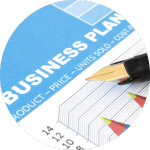
Top 10 Do’s and Don’ts
Before we dive into our business plan outline and describe each section, let’s go over some general do’s and don’ts you’ll want to keep in mind as you write your business plan:
Do: Provide Examples

Don’t: Overload the Reader
An in-depth business plan will contain lots of useful information and will likely end up being much more than ten pages. Because it’s so long by nature, you need to make sure to only include the most useful information in each section. Format everything carefully and correctly. Don’t use language that confuses or intimidates readers outside of your industry. The easier it is for the reader to absorb everything you’re presenting them, the more effective your business plan is.
Do: Proper Research

Don’t: Leave Any Stone Uncovered
Somebody who reads your business plan shouldn’t have any major questions left unanswered. Include complete information about what you are aiming to do, how you are going to do it, how much money is needed, etc. Use our full outline below to ensure everything is covered.
Do: Be Honest

Don’t: Hustle Just to ‘Get it Done’
Writing a business plan isn’t a task you’re completing and checking off your to-do list. Everything must be accurate, thoughtful, and well-articulated. Keep in mind: this will guide you as you operate your business and is the key to obtaining financing and/or pitching your business.
Do: Make it a Living Document

Don’t: Focus Solely on Your Product
You might think your business revolves around your particular product/s or service/s, but there’s so much more to it than that. Your business plan talks about how the actual business is run, so you might want to leave the technical specifications and granular details for another time.
Do: Show Your Passion
In the end, your business plan and your business are about you. While it’s important to maintain a professional tone, don’t be afraid to let your enthusiasm about your business seep through every page.
Don’t: Write Alone

How to Write a Business Plan
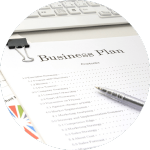
- Keep it concise.
- Know your audience.
- Perfect your executive summary.
- Focus and refine constantly.
- Gather and check all of your data.
- Be confident, but don’t go overboard.
- Be as clear and in-depth as possible.
- Enhance with graphics.
- Share and gather feedback from trusted advisors.
What Goes into a Business Plan?
When writing your business plan, you will need to put in a lot of time and research. Luckily, we’re here to walk you through all of that. A winning business plan contains the below sections, and you can use our sidebar to navigate to each of these:
- Introduction
Executive Summary
- Information About Your Business
- Industry Analysis
Marketing and Sales
- Operational Plan
Your Business Plan Introduction

Cover Letter
A cover letter is essential whenever you are presenting the business plan to somebody for a specific reason and should be tailored to each individual. Like any other letter, it should include names, dates, and a cordial greeting. In the first paragraph, explain exactly why you are presenting the business plan to the recipient. Take one or two paragraphs to discuss your business (an even more condensed executive summary, as we will cover in the next section). Finally, let the reader know you appreciate their consideration and would be happy to address any questions or concerns. Include any necessary contact information below your name and signature.
Your title page should be clean and simple. Here’s what to include in it:
- The title of the document (i.e. Business Plan, Business Proposal, Summary Business Plan).
- The name of your company.
- A sub-heading, if necessary (i.e. ‘Presented to ABC Investing Company’).
- Who the business plan was prepared by.
- The name of any other owners or key partners.
- Basic contact information.
Table of Contents
A table of contents is essential to make your business plan transparent and easy to navigate. It is unlikely that a serious potential partner or investor will read through your plan once and toss it aside, so you want to make it easy for them to return and pick up where they left off or revisit any key bits of information. If you are providing a digital copy, include clickable links to each section for the reader’s benefit.

The executive summary is exactly what it sounds like – a brief summary that describes the essence of what your business is and what it aims to do. Here’s how to write a winning executive summary:
- Begin with a single sentence that sums your business up. This is otherwise known as your value proposition.
- Describe what niche or problem your business fills or solves.
- Explain exactly how your business solves this problem in a way that the rest of the competition does not or cannot.
- A very brief (one or two sentences) summary of any other information from the following sections that would be critical to your business’ success.
Your Business / Company

Structure of Your Business
First and foremost, you’ll need to discuss the legal structure of your business:
- Sole-proprietorship: simple to set-up, but the owner is fully liable for any debts or obligations.
- Partnership: a general partnership is also simple to set-up, but all partners would be liable. Limited partnerships, or LPs, are a bit more complicated.
- Corporation: a corporation is owned by stockholders, so it is unlikely you will either want or need to structure as one. There are two types of corporations, which vary in terms of shareholder limitations and tax liabilities: S corporations and C corporations.
- Limited liability corporation (LLC): an LLC is generally the best of both worlds for small businesses. The owner’s’ liability is limited, and taxation is that of a partnership, which provides better flexibility over a corporation.
Once the legal structure is determined, you’ll need to break down the ownership of the business. Are you the sole owner? Do you have business partners? Has anybody purchased a share of the business in exchange for funding? Provide a brief introduction to any key executives or owners, outlining what strengths they have and how they will impact the business.
Finally, include a brief history (if any) of your business, and any pertinent location details.
Business Vision, Mission, and Values
This is one of the most important sections of your business plan. Here, you need to impart your passion for the business and really describe what you’re trying to achieve.
Business Vision
Your vision statement is all about the company’s goals. It serves as a template for exactly what you’re trying to achieve, both short-term and long-term. Don’t hold back when it comes to your vision: if your goal is to eventually dominate the Northeastern coffee shop scene, say that. A vision statement is your chance to think big.
Where a vision statement thinks big, a mission statement is more practical. Your mission statement should discuss your company’s purpose. Why does it even exist in the first place? This mission statement will act to provide organizational direction and help you achieve your vision.
The values are all about how you plan to operate your business in relation to the stakeholders. This includes investors, customers, and members of the local community. How do you plan to treat them? What are you doing to make their lives and the world they live in better?
Analyzing the Industry

Market Size
Here, you’ll describe exactly how large the market is. You should be able to find national figures with relatively little research. If you’re not serving a national or international market, discuss how large the population you plan to serve is. Extrapolating from the national information, how big do you expect your actual market size to be?
In addition, you should discuss any important trends. Is your market growing or retracting? If your market is growing, discuss how you project to fit into that growth and seize your market share. If your market is shrinking, discuss why you think entering the marketplace is worthwhile, and whether or not you project growth in the future.
Industry Focus and Trends

First, you’ll want to talk about the industry in general. This includes looping back to the market size and discussing whether it is growing, stagnant, or shrinking. Are there any overarching trends or cycles that will affect your business?
This is also a good opportunity to discuss pricing. What type of money does your average customer spend in your industry? What price point are you aiming for, and why is that a good strategy? If you aren’t competing on price, what reasons do you have to believe that somebody will be willing to spend more on your business?
Below, we will discuss two valuable business models you can and should use to discuss your industry further.
PEST Analysis
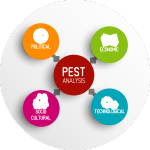
- Political: what impact could the government have on your business. Is there any pending legislation that could change how you operate? Would tax changes or tariffs cause a financial strain?
- Economic: would an economic downturn cause sales to tumble, or is your business relatively immune to economic factors? Furthermore, what do current economic trends (inflation, consumer demand, etc.) say about your short-term potential?
- Social: are there any relevant social or cultural trends that are shaping the industry? Is there a distinct seasonality to your business? Consider, for example, the impact of the Christmas season to retailers in the United States.
- Technological: how has technology shaped your industry over the past decade? Take a look at the future and make an educated guess on where the industry is headed, and how you’ll fit into that future.
Sometimes PEST is lengthened to PESTLE to include any legal or environmental factors as well. If you believe either will have a significant impact on your business, make sure to include it as well.
Porter’s 5 Forces Analysis
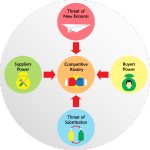
- Competition: we will go into this in more detail next, but for this model you should discuss how much competition there is, and how profitable they might be.
- Threat of new entrants: how easy is it for somebody to enter your industry? For a casino, it would be quite difficult (extensive significant licensing and upfront costs), but for a food truck, it would be quite minimal. The easier it is to enter your industry, the greater the threat is of somebody else entering and stealing your market share.
- Power of suppliers : if your industry has a low number of suppliers or suppliers that are dominated by much larger companies, you will have a problem sourcing on-budget and on-time. If you aren’t reliant on very specific suppliers, however, or if there is competition among suppliers, you can find yourself in an advantageous position.
- Power of customers: specifically, do your customers have the ability to drive prices down? If you expect to have a large number of small customers, your price will remain relatively stable. However, if you plan on having a small number of very important customers, they maintain the power to dramatically impact your pricing and profitability.
- Threat of substitutes: how likely is it that somebody will forego your offering for a comparable substitute. If you’re a restaurant, for example, Amazon’s grocery delivery business would be a substitute, since people may decide to stay home and cook for themselves.
Competition
It’s just as important to discuss how your competition is navigating the industry you plan on dominating. With a strong idea of where your competition is positioned and the strategic decisions they are making you will be able to determine where your own business fits in.
To begin, discuss what your competition looks like. Are there many small businesses vying for the same customers or are you competing against a couple of whales? List your most important competitors and summarize them. Discuss their location, products, pricing, market share, and any important strategic decisions they have made. Use this information to create a list of their strengths and weaknesses.
After discussing the competition, it’s time to think about where you fit among them. SWOT Analysis is the perfect model to do just that.
SWOT Analysis
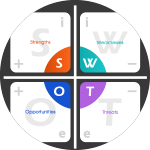
Here is what a complete SWOT Analysis looks like:
- Strengths: Exactly as it sounds. What do you do best? What do you do that the competition absolutely cannot?
- Weaknesses: Be honest. Are there any resources you lack? Any skillsets that are missing? What isn’t as efficient as it could be?
- Opportunities: Improving any of your weaknesses is a major opportunity. In addition to that, consider internal or external factors that might change and present a new business opportunity. Finally, are there any complementary products or services that you could consider offering to your customers?
- Threats: What potential is there for your business to be damaged? Are there any industry or economic trends? Could your competition change strategies and harm you? Do any obstacles to success stand in your way?
Once you have completed the SWOT analysis, wrap this section up by talking about your own competitive strategy. Given your industry, the competition, and your own SWOT analysis, what decisions are you making to position the company to succeed?
Readers of your business plan definitely need to know how you’ll be marketing and selling your product or service.There are going to be three key elements of your marketing plan.
Customer Segmentation

- Demographic information – age, gender.
- Psychographic profile – what do they care about? What motivates them? What do they value? Where do they get their information?
- Socioeconomic profile – income, lifestyle preference.
Describe your target audience in great detail. The more you know about your customer, the easier it will be to market to them.
Advertising and Promotion Plan
After building a strong customer profile of your target audience, you should know what your customer cares about. Think about how your business fits into that, and strategize how you’re going to market to them. Use their demographic and behavioral information to determine the most appropriate channels to focus on.

Your brand should seep into all aspects of your business – the website, advertisements, and even the tone of communications with customers. Whatever strategies you have for these elements, make sure to lay them out.
Finally, include your company logo and slogan, if they already exist. If not, you should begin to think about them and use the rest of this section as a guide.
Sales Distribution Plan
How exactly do you plan on getting your goods or services into somebody’s hands? Do you plan on hiring a sales staff or will you handle it all yourself initially? Do you plan on doing inbound or outbound sales? What does the sales process look at each step of the marketing funnel?
You’ll also need to think about and discuss pricing. Discuss your pricing strategy and why it’s a good value for your customers. If you are going low or moderately priced, discuss how you can stay profitable and remain differentiated from the competition. If you are a luxury brand, discuss why somebody will be willing to pay more for your business than the competition.
Lastly, consider distribution. Are you going to allow customers to purchase directly from you? Will they have to go through distributors? Do you have any retail partnerships to leverage? These are important decisions that have a profound impact on a business.
Organizational and Operational Plan

Production Process

Here are some ideas of what you’ll need to outline:
- Raw materials – how much do they cost? Do prices fluctuate? Is supply limited in quantity or how quickly it can be obtained in a pinch?
- What machines, technologies, etc., do you use for production? What costs are involved in these? Are you renting or do you own them?
- What is your estimated daily output?
- How easy is it to scale up or down as necessary? How does this impact the cost per unit?
- Which methods of quality control do you employ, both pre- and post-production?

If you’re a service business, you might not have any physical inventory, but your employees should be considered as your supply. After all, without them, you won’t be able to provide your services to your customers. What strategies do you have to recruit and retain the best talent possible? Can you scale quickly through recruiting and training, overtime, or an increase in part-time help?
You should also look back at your sales distribution plan and consider the logistics of shipping any physical products. How often will orders be fulfilled? Do you have the ability to rush orders if necessary? How will returns or incorrect shipments be handled in a way that keeps everybody happy?

Here are the components you must include in your business plan’s financial information:
Forecasted Sales
Use all of the marketing data you’ve put together to determine what a reasonable sales forecast looks like. Project your sales for a period of two or three years, going one month at a time. Include seasonality whenever applicable. As you forecast sales, include exactly how much revenue you expect to earn from those sales, and the total direct cost of those sales. You’ll be able to use these figures to determine revenue and gross margin, which you should use to compare to industry and competitive standards.
Projected Expenses

Fixed costs are going to stay the same whether you sell one widget or twenty. For example, rent, electricity, insurance, marketing costs, and payroll (with the exception of commission and bonuses), will mostly stay the same no matter what sales look like.
Variable costs, on the other hand, will vary by each unit sold. This includes the cost of materials, shipping, coupons, taxes, etc. Most of this should already be covered in your forecasted sales report, but make sure that nothing is overlooked.
Make sure to consider that as you scale, some fixed costs may become variable. As sales increase, you may have to hire more employees, or move into a bigger office. Keep this in mind by always referring back to your forecasted sales and estimating your business needs as best you can.
Balance Sheet
Everything comes together on your balance sheet. This includes your projected sales and expenses, but also deals with assets and liabilities.For example, if you take out a loan, you’ll need to include the capital in your assets and the repayments, including interest, in your liabilities. Non-monetary assets, such as the property and machinery must also be included.
You can find a sample balance sheet here .
Cash Flow Statement

Month by month, you’ll track exactly how much cash you expect to leave your hands and how much will come in. Keep in mind that not all sales are paid fully right away. Consider how many sales will be paid in full at the time of sale, how many will be paid in 30 days, 60 days, or go completely delinquent.
Once you have your cash flow statement completed, run some quick analysis. Compare your projected expenses each month to the projected cash coming in each month. For any months that project to have a negative cash flow, ensure you have enough money on hand to cover the difference.
You may find two examples of completed cash flow statements here and here .
Customer Lifetime Value
Customer Lifetime Value is an estimate of exactly how much each customer you acquire will be worth total. A simple way to calculate this is by determining how many purchases a customer makes before churning, and multiplying it by the average amount of their purchase. In other words, how many purchases will they make before moving on from your business, and how much will those purchases be worth?
Let’s take a look at a real-world example. Let’s assume you’re running an oil change business, and you know your average customer gets three oil changes per year. With premium options and add-ons, your average sale is $38.50. Each customer spends an average of three years with you before churning (perhaps they have moved away or found another service they prefer).
In this example, your expected CLV would be $346.50. You know each average customer will make 3 purchases per year, for 3 years, at $38.50 each. 3 x 3 x $38.50 = $346.50, which is your CLV.
Why is CLV so important? Let’s take a look at unit economics.
Unit Economics

The formula for cost of acquisition is simple. Divide your total marketing spend by the number of customers you have acquired through all marketing channels. If you spend $25,000 across all marketing channels and acquire 1,000 customers, your average cost per acquisition is $25.00.
Tracking your marketing expenses isn’t the tricky part. Attributing each user to a specific campaign, however, can be. If somebody walks into your store after seeing a TV ad, for example, it can be hard to properly attribute them. Digital campaigns are a bit easier, as there are typically tracking links that make everything easy to calculate. You’ll have to do your due diligence and make your best-educated guesses here, using industry standards whenever necessary and possible.
You should also take the time to break out your unit economics into each marketing channel. This allows you to track which channels are performing well and which ones aren’t. If Facebook is attracting lots of customers but you’re spending so much that your cost of acquisition is higher than expected CLV, you might actually need to stop spending money there.
It’s important to be very clear about exactly how your business has been funded so far. This includes what you have received through investments, series rounds, or personal loans. You will also need to mention any personal funds that you have put into the business, and how much you have saved that you are willing to put into it in the future.
Once you have discussed the funding your business has received, it is appropriate to lay out exactly how much you’ll need. Make sure to also discuss exactly what any loans or investments will be used for and how that spending will be tracked.
Business Plan Resources
Business plan samples.
To reinforce everything we’ve discussed above, let’s take a look at some sample business plans that have already been put together for your review. We’ll discuss some key takeaways from each plan, helping you consider how your business is unique and what you’ll need to emphasize.
Coffee Shop Business Plan
A coffee shop is a nice, simple business to start our samples with. A coffee shop requires a small storefront, and the location is critical. Most people will gladly stop in for a nice cup of coffee but are unlikely to drive miles out of their way for one. Notice that because of this, the sales forecast is relatively stagnant, even after several years.
Click here for the sample business plan.
Restaurant Business Plan
A restaurant business plan will be similar to a coffee shop, but is a little more involved. Start-up costs are higher as it requires a larger storefront and a larger variety of equipment. Variable costs are higher as a quality meal costs much more than a cup of coffee. The sales forecast shows more growth, as people are more willing to travel for a good meal than they are a simple cup of coffee.
Food Truck Business Plan
Let’s consider a third food-based business to really drive home how businesses that appear similar will have important differences. Food trucks have a much different fixed cost structure than a coffee shop or restaurant, as they don’t have a physical location. Seasonality and location will have a huge impact on salespeople won’t want to stand outside for a burrito when it’s cold and snowy outside. With a much smaller staff, a food truck is also more likely to be open for lunch only, or closed a couple days per week.
Startup Business Plan
It’s good to take a look at a general startup business plan to get an idea of how to estimate costs, sales, etc. This sample plan is a take-out pizza joint. Notice that trends are important, as the business plan notes their market is a growing area and they are aiming to fill a niche for low to middle-income families, which comprise the majority of residents in their service area. They use a mixture of studies and geographic data to make conservative estimates, giving potential investors confidence that the business can be profitable if the strategies are successfully executed.
Photography Business Plan
A photography business is a great example of a company that is minimal to the extreme. Mostly, you will be relying on your own skills and experience. Minus initial equipment and the cost of your own time, expenses are minimal. Still, you see that it’s important to have a strong plan in place so that you understand how to position your services and who exactly you’re aiming to serve.
Business Plan Tools
Here are a variety of tools that make both writing a business plan and getting your business off the ground much easier:
If you want to quickly build your idea into a business plan to validate its value or just to get started, LivePlan is perfect. The business planning process is made simple, as you simply need to answer questions and are given plenty of examples, videos, and tutorials along the way. You can even use LivePlan to collaborate with partners or investors, testing ideas on the fly and seeing its impact on your business’ health.
Click here to take a look at LivePlan.
Rocket Lawyer
When you’re starting a business, it’s extremely likely you’ll need quick legal help. You might need advice on licensing, permits, or zoning. Or perhaps you want to discuss how to structure your business as an LLC. Rocket Lawyer can help. You’ll have access to their services for a monthly fee that’s less than a cup of coffee each day. There’s an even option to help incorporate your business by filling out a couple of quick forms.
Click here to take a look at Rocket Lawyer.
Like LivePlan, StratPad offers a cloud-based chance to build your business plan and strategy on the fly. StratPad offers a demo for their services and if you’re looking for funding will even match you up automatically with a financial institution that makes sense for your business. Our suggestion is to take a look at both LivePlan and StratPad and select the one that you like best.
Click here to take a look at StratPad.
If you’re looking for a simple way to create a professional business plan without all the bells and whistles, BizPlan is perfect for you. You’ll be able to create a stylish, professional business plan using intuitive drag-and-drop templates. Financials are easy to create using a user-friendly dashboard.
Click here to take a look at BizPlan.
A typo can derail your business plan and make you look sloppy and unprepared, no matter how much effort you put into it. Grammarly is a world-class spell checker that also checks for many of the most common grammatical error for free. There’s even a browser-based version that you can use no matter where you are. For a fee, you can subscribe to Grammarly Premium, which provides an even more granular check.
Click here to take a look at Grammarly.
Business Plan Templates
Now that we have an idea of everything you need to include in your business plan and which tools you’ll need to get started, it’s time to get started. Here are some websites with sample business plan templates you may use to make writing the perfect business plan a bit easier:
- Score.org has a variety of business plan and financial statement templates, including ones for both start-ups and established businesses.
- Microsoft Office’s website has many valuable business plan templates, including a checklist and PowerPoint Presentation templates for pitching your business plan.
- The S. Small Business Administration allows you to create a business plan with a free account that you can download and distribute as a PDF.
- Santa Clara University provides a 15-section business plan that can be downloaded one section at a time or all at once.
- Law Depot offers a business plan template tailored for you. Simply answer some quick questions and your template is instantly ready to download.
How to Write a Business Plan Conclusion
In the end, a business plan is a highly unique and personalized document. A business plan that is right for your business won’t be right for any other business in the world. By closely following the outline and strategies above, however, you’ll have a great base to begin crafting your own perfect business plan.
Bibliography:
- Berry, T. 15 Reasons You Need a Business Plan. Entrepreneur. Retrieved from https://www.entrepreneur.com/article/83818.
- CBM Group. What Is The Right Tone And Writing Style For A Business Plan? Retrieved from http://www.cbmgroup.co.uk/blog/business-plan-writing/what-is-the-right-tone-and-writing-style-for-a-business-plan.
- Discover Business. How to Write a Business Plan. Retrieved from https://www.discoverbusiness.us/business-plans/.
- Fontinelle, A.How To Write A Business Plan. Investopedia. Retrieved from http://www.investopedia.com/university/business-plan/.
- Franklin, B. The Three General Types of Business Plans. Business Power Tools. Retrieved from http://www.businesspowertools.com/2016/06/management-2/the-three-general-types-of-business-plans/.
- Gregory, A. Comprehensive Business Plan Outline for Small Business. The Balance. Retrieved from https://www.thebalance.com/a-comprehensive-business-plan-outline-for-small-business-2951557.
- Gregory, A. How to Conduct a SWOT Analysis for Your Small Business. The Balance. Retrieved from https://www.thebalance.com/swot-analysis-for-small-business-2951706.
- Hazlett, M. Basics of Unit Economics. Medium. Retrieved from https://medium.com/@markhazlett/basic-of-unit-economics-79f1d6cae085.
- Investopedia. Porter’s 5 Forces. Retrieved from http://www.investopedia.com/terms/p/porter.asp.
- Johnson, J. How to Write a Cover Letter for a Business Plan. Small Business Chronicle. Retrieved from http://smallbusiness.chron.com/write-cover-letter-business-plan-43209.html.
- Katz, A. Determining the Best Legal Structure for Your Business. Entrepreneur. Retrieved from https://www.entrepreneur.com/article/236450.
- Kolowich, A. How to Write a Business Plan: A Bookmarkable Guide (With Examples). HubSpot. Retrieved from https://blog.hubspot.com/marketing/how-to-write-a-business-plan.
- Lavinsky, D. Marketing Plan Template: Exactly What To Include. Forbes. Retrieved from https://www.forbes.com/sites/davelavinsky/2013/09/30/marketing-plan-template-exactly-what-to-include/#1ddaeeb43503.
- My Own Business Institute. Session 2: The Business Plan. Retrieved from https://www.scu.edu/mobi/business-courses/starting-a-business/session-2-the-business-plan/.
- Parsons, N. How to Write a Business Plan [Updated for 2017]. Bplans. Retrieved from http://articles.bplans.com/how-to-write-a-business-plan/.
- PESTLE Analysis. What is PESTLE Analysis? A Tool for Business Analysis. Retrieved from http://pestleanalysis.com/what-is-pestle-analysis/,
- Robbins, S. Why You Must Have a Business Plan. Entrepreneur. Retrieved from https://www.entrepreneur.com/article/74194.
- Ronick, D. 10 Business Plan Dos and Don’ts. Inc. Retrieved from https://www.inc.com/articles/201104/business-plan-dos-and-donts.html.
- Ronick, D. 10 Things A Business Pitch Absolutely Does (And Does Not) Need. Business Insider. Retrieved from http://www.businessinsider.com/10-survival-tactics-for-a-successful-business-plan-pitch-2011-4/.
- Shopify. The Ultimate Guide to Business Plans, Chapter 3: The Company. Retrieved from https://www.shopify.com/guides/businessplan/the-company.
- Wasserman, E. How to Write the Financial Section of a Business Plan. Inc. Retrieved from https://www.inc.com/guides/business-plan-financial-section.html

FEATURED ARTICLES
- How AI Will Continue to Disrupt and Drive Business
- Do You Need a Business Degree to Get Your MBA?
- Leveraging Your New Master’s Degree
- Company Culture: The Future of Human Resource Management
- 10 Things Every Business Student Should Know
- 7 Ways To Make The Most of Your First Semester…
- How to Get an Employer to Sponsor Your MBA?
- The Big Question: Should You Go to College?
FEATURED INTERVIEWS
- University of Maryland Global Campus Business Analytics With the Program…
- University of Redlands Online MBA Interview
- University of San Diego Business Analytics
"It doesn't matter how many times you have failed, you only have to be right once." - Mark Cuban
- Terms of Use
- Privacy Policy
Copyright © 2024, Business Student.com. All Rights Reserved.

Business Plan Example
Writing the plan, what goes in a business plan, sample plans.
One of the best ways to learn about writing a business plan is to study the plans of established businesses in your industry.
http://www.bplans.com/sp/businessplans.cfm
Develop a Business Plan Worksheet
This worksheet describes the basic components of any business plan. Please note that every plan will be unique to its particular company.
The Executive Summary
Include crisp, clear descriptions of the following elements:
- Company history
- Company objectives
- Product/service offerings
- Competitive advantage (A persuasive statement of why and how the business will succeed)
- Projected growth for the company and the market
- Key management team members
- Funding requirements, including a timeline and details on how the funds will be used
The Products and Services
Answer the following questions in this section:
- Why is there a need for your offering?
- Is your product or service already on the market, or is it still in the research and development stage? If you are still in the development stage, what is the rollout strategy or timeline to bring the product to market?
- What makes your product or service unique? What competitive advantage does the product or service have over its competition?
- Can you price the product or service competitively and still maintain a healthy profit margin?
- What patents, copyrights and trademarks does your company currently own or plan to obtain?
- What confidential and non-disclosure protection have you secured?
- What barriers do you face in bringing the product to market, such as government regulations, competing products, high product-development costs, the need for manufacturing materials, etc.?
Include the following elements:
- A detailed description of your market
- A detailed description of your niche and why you chose it
- An explanation of the market demand for your product or service offering (Requires supporting documentation)
- What percentage of market share do you project you can capture?
- What is the growth potential of the market? (Requires supporting documentation)
- Will your share of the market increase or decrease as the market grows?
- How will you satisfy market growth?
- How will you price your goods or services to remain competitive in a growing market?
Note: If you are launching a new product, include your market research data. Likewise, if you have existing customers, provide a customer profile, detailing their purchasing habits and their buying cycle.
The Marketing Strategy
The following are some promotional options to consider:
- Social Media
- Direct mail
- Trade shows
- Public relations
- Promotional materials
- Telephone sales
- One-on-one sales
- Strategic alliances
If you have current samples of marketing materials or strategies that have proven successful for you, include them with your plan.
Discuss your distribution strategy:
- Will you mail order, personally deliver, hire sales reps, contract with distributors or resellers, or use some other method?
- What are the costs associated with your proposed delivery methods?
- How will you track the effectiveness of the methods you choose?
The Competition
Specific areas to address in this section are:
- Who are your closest competitors and what are their product/service offerings?
- Where are they located?
- What are their revenues?
- How long have they been in business?
- Who is their target market?
- What percentage of market share do they currently hold?
- Do they service a local, geographic market or a national customer base? Is that the same or different from your approach?
- In what other ways do your operations differ from each of them? How are they similar?
- What do your rivals do well? Where is there room for improvement?
- In what ways is your business superior to the competition?
- How is their business doing? Is it growing, declining or stable?
- Are there certain areas of the business where the competition surpasses you (management team, economies of scale, better distribution, volume discounts, etc.)? If so, what are those areas, and how do you plan on compensating for them?
This section of the plan should describe the following requirements of your business:
- Manufacturing
Note: Provide a rollout strategy as to when these requirements need to be purchased and implemented. In addition, describe the vendors you will need to build the business. Do you have current relationships, or do you need to establish new ones? Who will you choose and why?
The Management Team
When preparing this section of the business plan, you should address the following five areas:
- Business background of the principals
- Past experience — tracking successes, responsibilities and capabilities
- Educational background (formal and informal)
- Personal data: age, current address, past addresses, interests, education, special abilities, reasons for entering into business
- Personal financial statements with supporting documentation
- Direct operational and managerial experience in related businesses
- Indirect managerial experiences
- Who will do what and why? Who is responsible for final decisions?
- Organizational chart with chain of command and listing of duties
- A simple statement of what management members will be paid, by position
- Listing of bonuses in realistic terms
- Benefits (medical, life insurance, disability, etc.)
- Insurance brokers
- Accountants
- Consulting groups
- Small Business Association
- Local business information centers
- Chambers of Commerce
- Local colleges and universities
- Federal, state and local agencies
- Board of Directors
- World Wide Web (various search engines)
Consider the following questions in completing this section of the business plan:
- What are your current personnel needs (full- and/or part-time)? How many employees do you envision in the near future, and then in the next three to five years?
- What skills must your employees have?
- What will their job descriptions be?
- Are the people you need readily available? If not, how will you attract them?
- Will you pay salaries or hourly wages?
- Will you provide benefits? If so, what will they be, and at what cost?
- Will you pay overtime?
Financial Data
Have a certified public accountant establish your accounting system before the start of business to provide you with data in the following four areas:
- Balance Sheet – indicates what the cash position of the business is and what the owner’s equity is at any given point (the balance sheet will show assets, liabilities and retained earnings).
- Break-Even Analysis – Shows the volume of revenue from sales that are needed to balance the fixed and variable expenses. Without exception, all businesses should perform this analysis, which is based on the income statement and cash flow.
- Income Statement (also called the profit and loss statement) – Indicates how well the company is managing its cash, by subtracting disbursements from receipts.
- Cash Flow – Projects all cash receipts and disbursements. Healthy cash flow is critical to the survival of any business.
Supporting Documentation
You will need to include all documents that lend support to statements made in the body of your company’s business plan. Please be aware that this list is not complete and may vary depending on the stage of development of your business.
- Credit information (include in appendix)
- Quotes or estimates
- Letters of intent from prospective customers
- Letters of support from credible personal references
- Leases or buy/sell agreements
- Legal documents relevant to the business
- Census/demographic data
Limited Time Offer:
Save Up to 25% on LivePlan today

What stage is your business at?
Tell us and we’ll match you with a special LivePlan discount:
New Business Idea
Startup Phase
Established Business
Enter your email address to unlock it.
Please enter a valid email address
We care about your privacy. See our Privacy Policy .
Business Plan Samples & Examples
550+ business plan examples to inspire you
Jump-start your own business with real-world business plan examples created in LivePlan.

Trusted by over 1 million small business owners
4.8/5 Google reviews
35-day money-back guarantee Get started risk-free
Don’t start from scratch — get a headstart with real business plan examples

Real business plan library
No business plan experience required
Looking at real business plan examples can help you visualize what a successful plan looks like. With LivePlan you’ll have access to over 550 free examples of a business plan to use as a starting point.
Browse real business plan examples covering a broad range of businesses to see how others have written effective executive summaries, planned marketing activities, created financial forecasts, and more.

AI-Powered Planning
Welcome to a world without writers block
LivePlan asks you questions about your business, you simply plug in the answers. It's as easy as that. Get expert guidance, instructions, and examples for your business plan at each step.
Not sure where to start? The AI-Powered LivePlan Assistant will automatically generate ideas for each section of the plan and offer improved versions of your writing, adjusting for tone, voice, and grammar or spelling errors.

Automatic Financials
Forget the formulas and focus on your vision
Forget the complex formulas and spreadsheets — with automatic financials and drag-and-drop forecasting you can finish faster and be confident your numbers are accurate.
Instantly get tailored revenue and expense suggestions to add to your forecast using the AI-Powered LivePlan Assistant.
Plus, access over 40 benchmark financial metrics so you can see how your key metrics (like net profit margin and marketing spend) stack up against other businesses within your same industry.

The quickest way to turn a business idea into a business plan
Fill-in-the-blanks and automatic financials make it easy.
No thanks, I prefer writing 40-page documents.

Discover the world’s #1 plan building software

IMAGES
VIDEO
COMMENTS
3. SBA Business Plan Example. Following an SBA-recommended business plan format is key to securing bank loans and business grants. Since it can be time-consuming to find a template that follows a similar outline as the SBA, this SBA-approved business plan example is the way to get started.. This SBA business plan template has nine primary sections, that include executive summary, company ...
In this section, we'll explore 10 types of business plan examples for student entrepreneurship. 1. Traditional Business Plans. These classic business plans, often prepared on paper, provide a comprehensive overview of the business, detailing its identity, goals, and strategies for success. 2.
Takeaways for business plan examples for students The opportunities are endless if you want to set up a business as a student. Let your imagination run wild and look through business plan examples for students if you want to start selling or offering something new to your school's community.
Some students have also succeeded in the food industry. Take the example of Alex, a college sophomore who started a food truck business on campus. Noticing a lack of diverse food options available to students, Alex wrote a comprehensive business plan focused on offering gourmet yet affordable meals.
4. Marketing Strategy. A college business plan should also come with a good marketing strategy. A marketing strategy is perhaps the most important of a business plan. It is the strategic part where plans are made on how to achieve a college's goal, especially when it comes to the number of its enrollees.
BizPlan: BizPlan offers a visual planner that helps users develop their ideas intuitively. It allows for seamless collaboration if students wish to work in teams. Enloop: Enloop uses your input to create a draft business plan and automatically generates a performance score to evaluate the feasibility of your ideas.
LivePlan's business plan examples help students turn ideas into top-notch business plans for class projects and startups. The tools, features, and instructional content allow you to focus on bringing out the best in your students for every plan and project. Before using LivePlan, my students were intimidated by the business planning process.
ClickUp's Business Plan Template for College Students is here to guide you every step of the way! With this template, you can: Clearly define your business goals and strategies for success. Create a comprehensive financial plan and projections to attract investors. Identify potential obstacles and develop contingency plans.
How to Write a Business Plan Step 1. Create a Cover Page. The first thing investors will see is the cover page for your business plan. Make sure it looks professional. A great cover page shows that you think about first impressions. A good business plan should have the following elements on a cover page:
Creating a business plan as a student can be a daunting task, but with the help of ClickUp's Business Plan Template, you can break it down into manageable steps. Follow these six steps to create a comprehensive business plan that sets you up for success: 1. Define your business idea. Start by clearly defining your business idea.
The business model canvas is a one-page template designed to demystify the business planning process. It removes the need for a traditional, copy-heavy business plan, in favor of a single-page outline that can help you and outside parties better explore your business idea. The structure ditches a linear format in favor of a cell-based template.
Download or view 14 business plans examples/samples, vetted by our MBA business plan writers. Download in PDF format or read like a book. These real business plan samples would help in writing your own business plan. Download Pack of 14 Business Plan Examples FREE.
Sample business plan format Following is the standard business plan format you must consider while drafting a comprehensive business plan. Executive Summary: A high-level overview of your business plan.; Company Overview: An in-depth and detailed description of your small business, its fundamental elements, and future goals.; Market Analysis: A detailed description of your industry with the ...
You can use internal business plans to share goals, strategies, or performance updates with stakeholders. In my opinion, internal business plans are useful for alignment and building support for ambitious goals. 4. Strategic Initiatives. A strategic business plan is another business plan that's often shared internally.
Topic: Entrepreneurship & Business Plan Guide — Business Plan (How to & Samples) Supports any student entrepreneur interested in starting a new business or developing a product, as well as participants in the Entrepreneurship Bootcamp for Veterans (EBV) program.
5. Marketing plan. It's always a good idea to develop a marketing plan before you launch your business. Your marketing plan shows how you'll get the word out about your business, and it's an essential component of your business plan as well. The Paw Print Post focuses on four Ps: price, product, promotion, and place.
If the answer is yes, then you need a business plan.. This seems like an extremely daunting task, but if you understand your business, it won't be hard at all. It's simply a matter of organizing the information in a clear, concise manner.. The following article discusses how to write the perfect business plan, including the types of business plans most commonly used, top 10 do's and don ...
A good business plan guides you through each stage of starting and managing your business. You'll use your business plan as a roadmap for how to structure, run, and grow your new business. It's a way to think through the key elements of your business. Business plans can help you get funding or bring on new business partners.
This section of the plan should describe the following requirements of your business: Manufacturing. R&D. Purchasing. Staffing. Equipment. Facilities. Note: Provide a rollout strategy as to when these requirements need to be purchased and implemented. In addition, describe the vendors you will need to build the business.
A sample business plan is an example/template document that outlines the key sections and elements that are typically included in a plan used to start and/or operate a business venture. It provides a structured format and sample content that you can use as a guide when writing your own specific business plan tailored to your company's details.
A fill-in-the-blank business plan built for small businesses. Download Business Plan Template. Sample Plans. ... Choose from 550+ free, downloadable sample business plans. Go Now. Search Sample Business Plans Build a Better Business Plan. Explore. Business Planning ...
Business Plan Template for Students - Free download as Word Doc (.doc / .docx), PDF File (.pdf), Text File (.txt) or read online for free. Business Plan Guide For Students
AP8 Q1 SEPT-18-2023 - aaaa. AP9-Q1 August-15-20241. AP9-Q1 August-15-20241. Pdfcoffee - aaaaaaaaaaa. AP9-Q1 August-15-2024-1. Sample Business Plan mindanao state university iligan institute of technology college of business administration and accountancy department of marketing alibata.